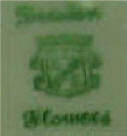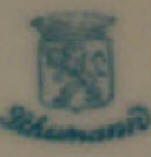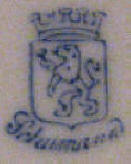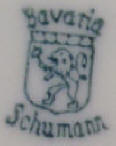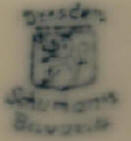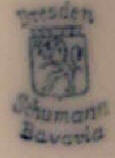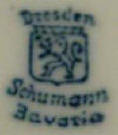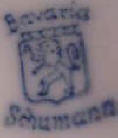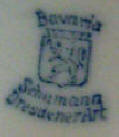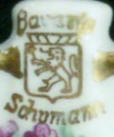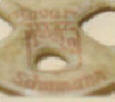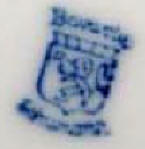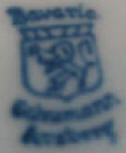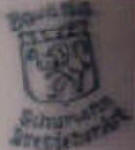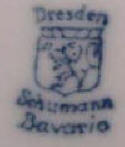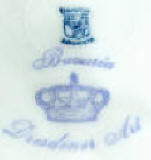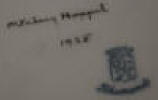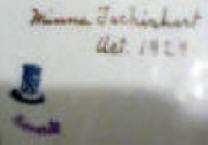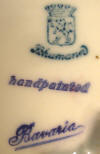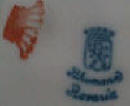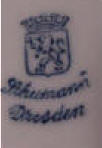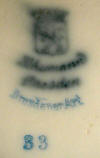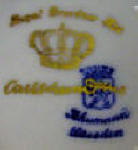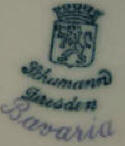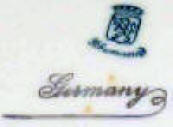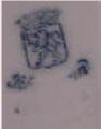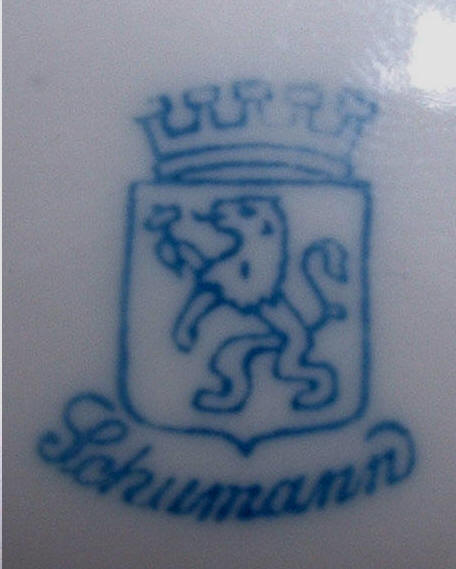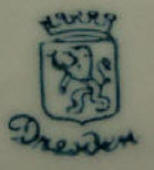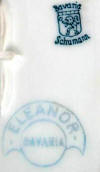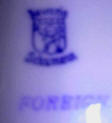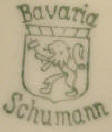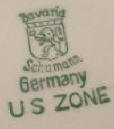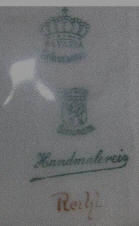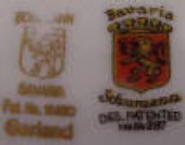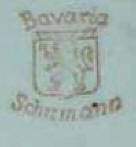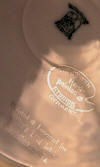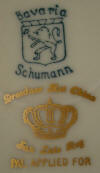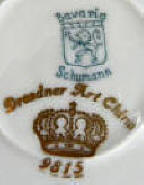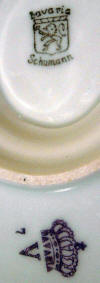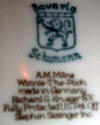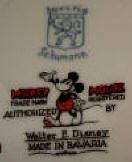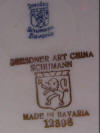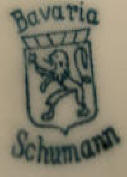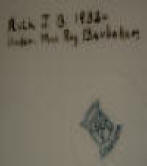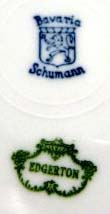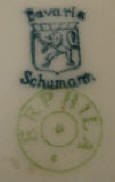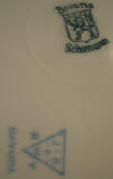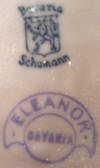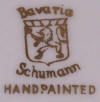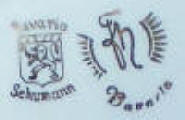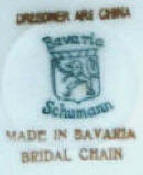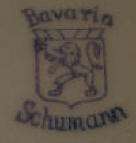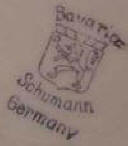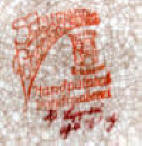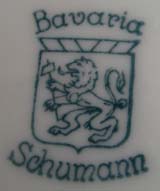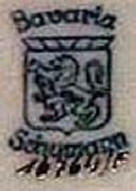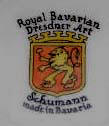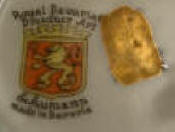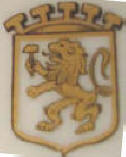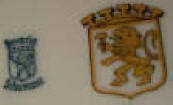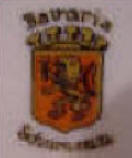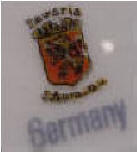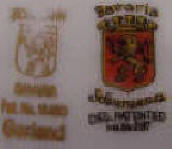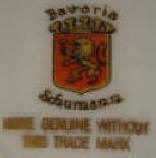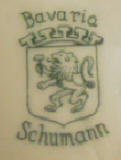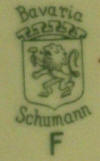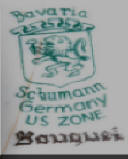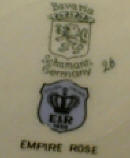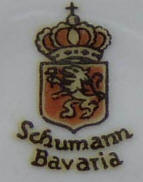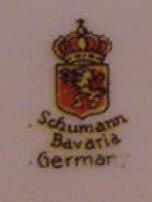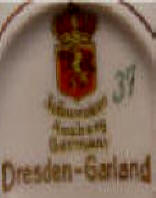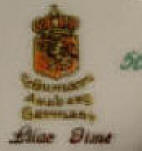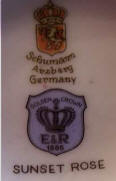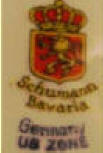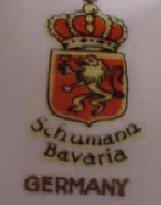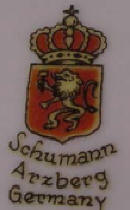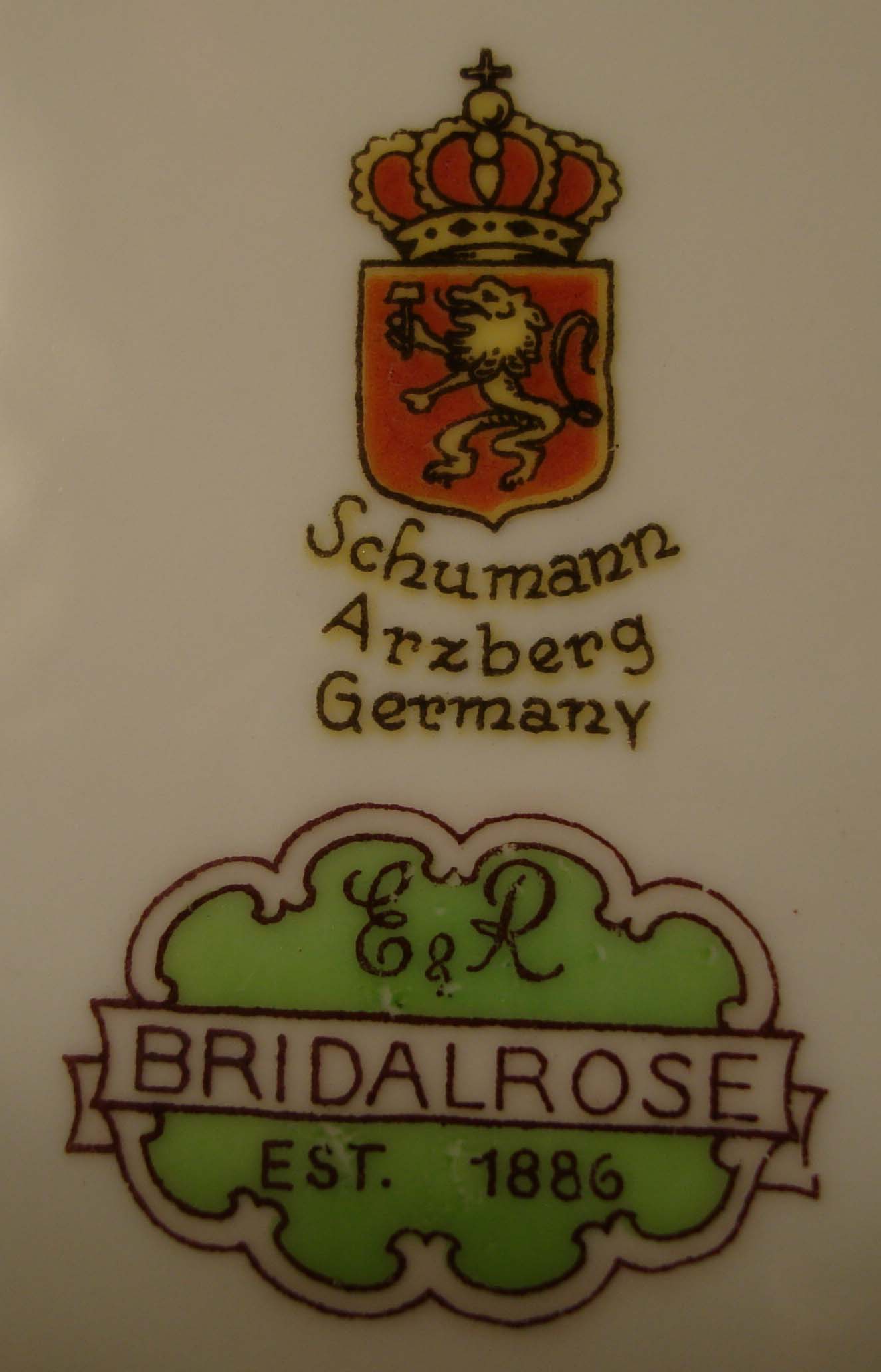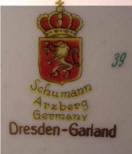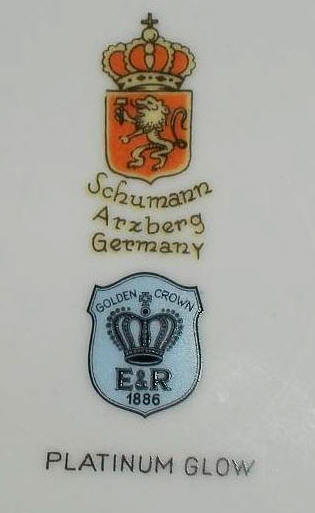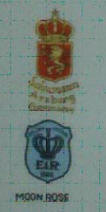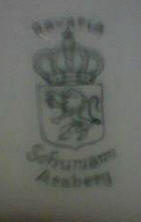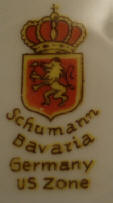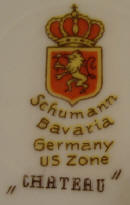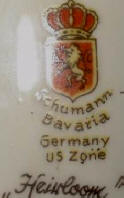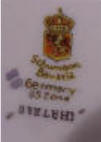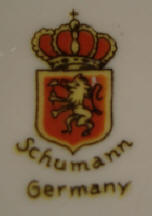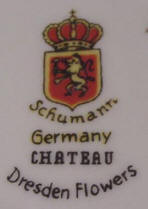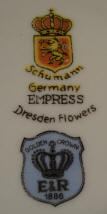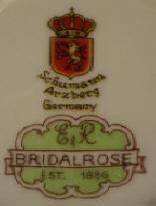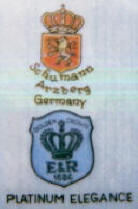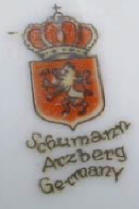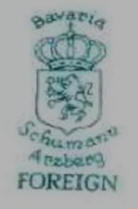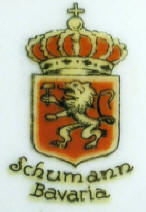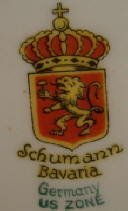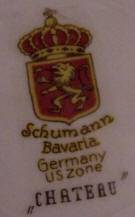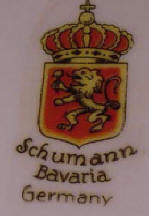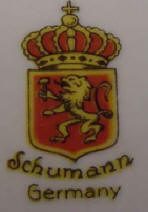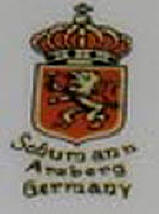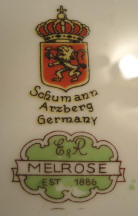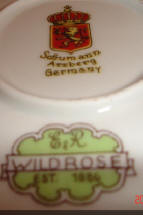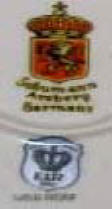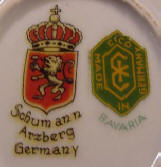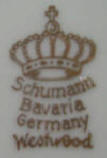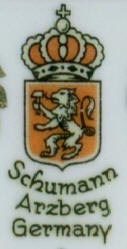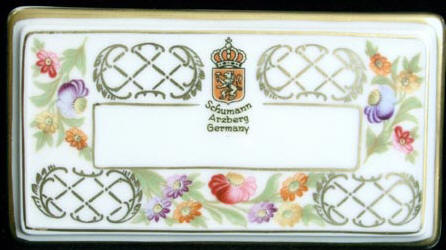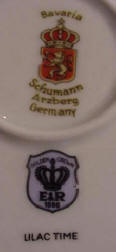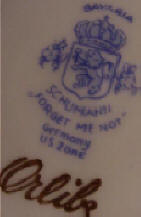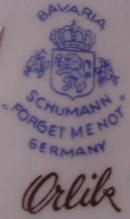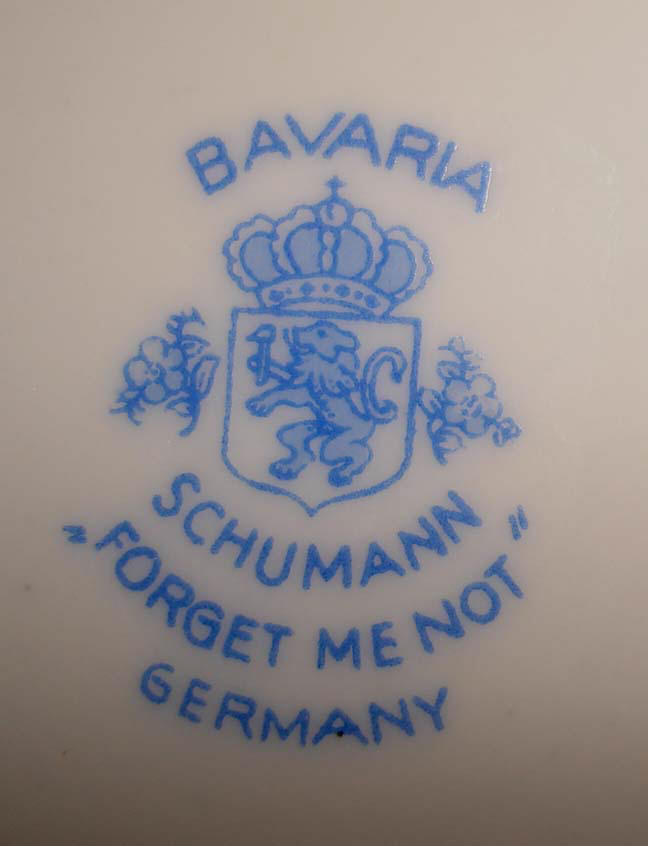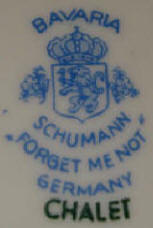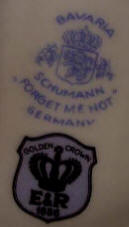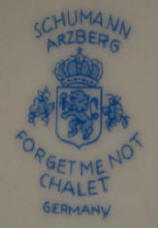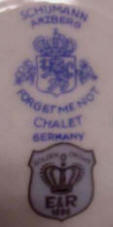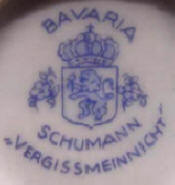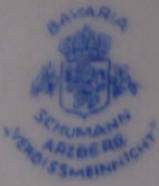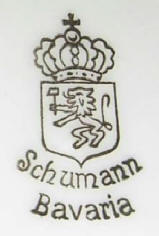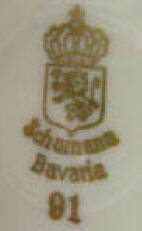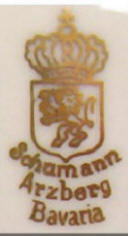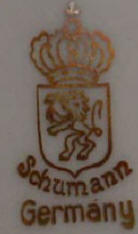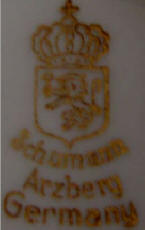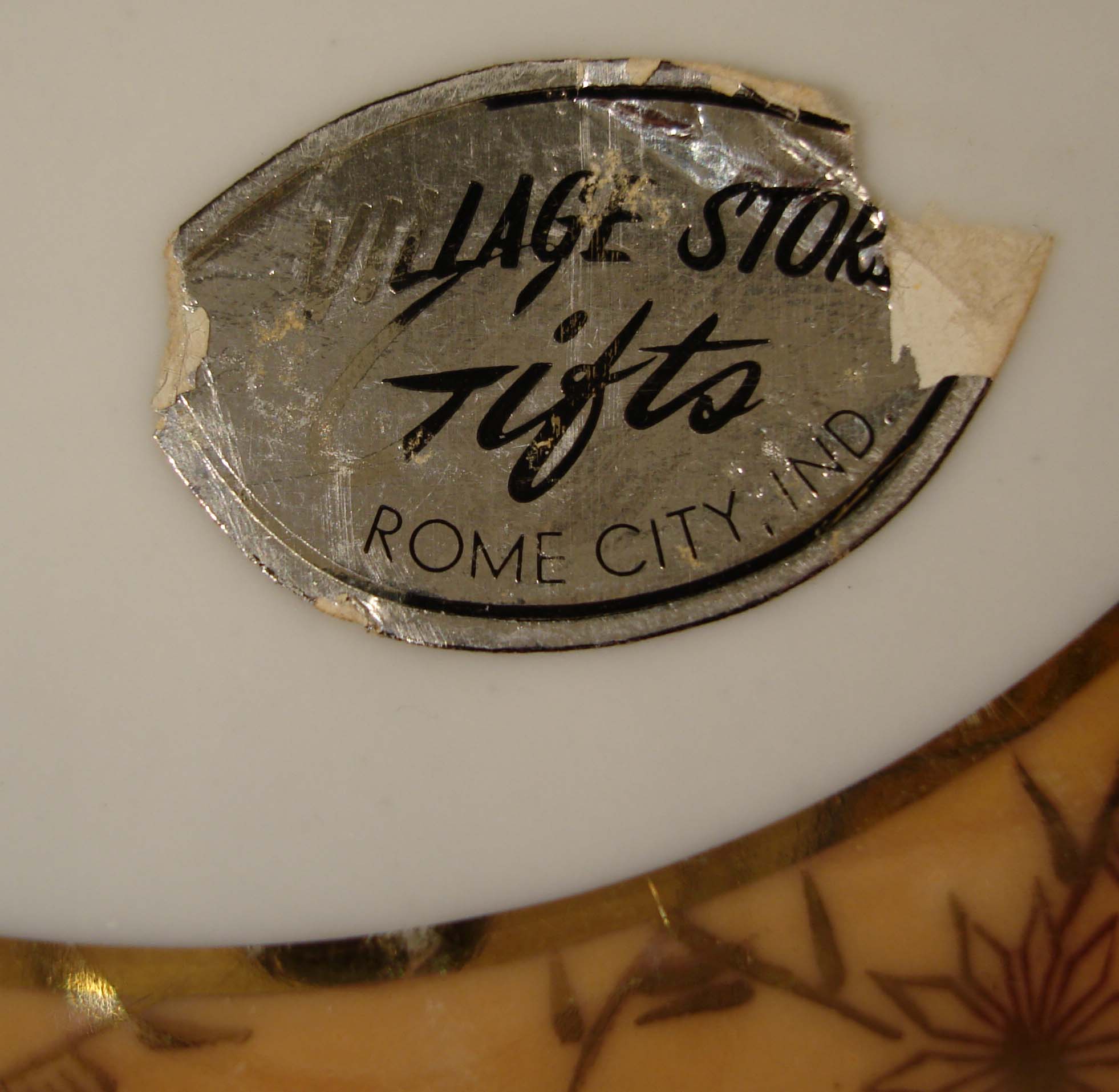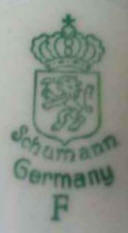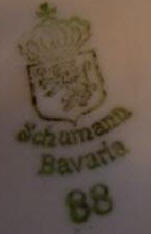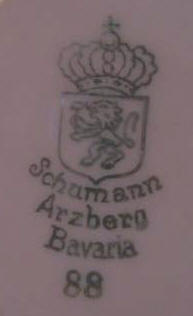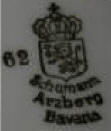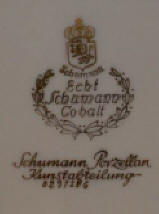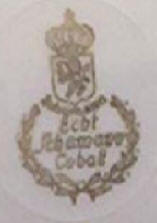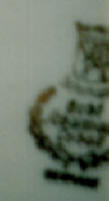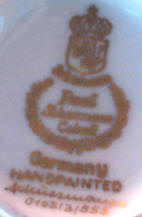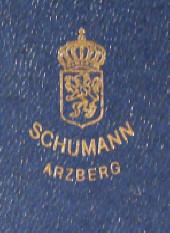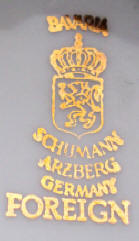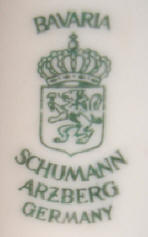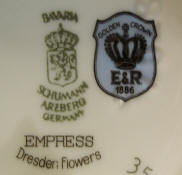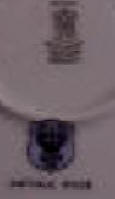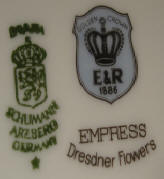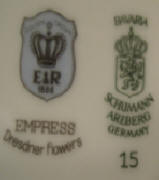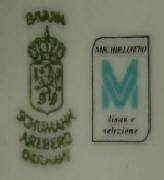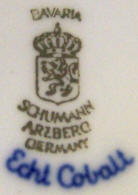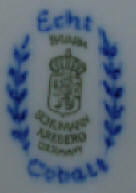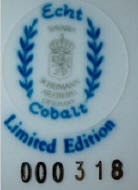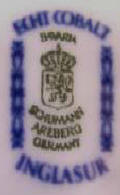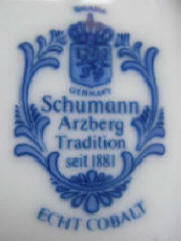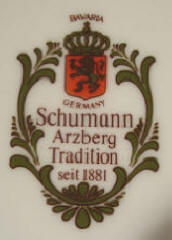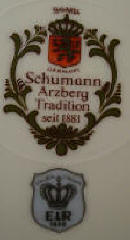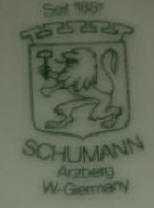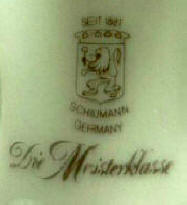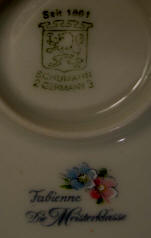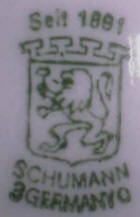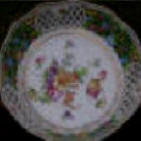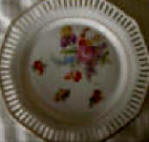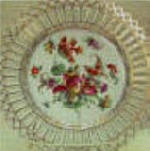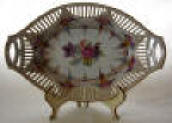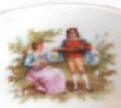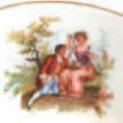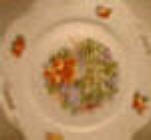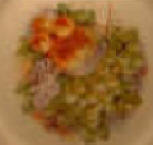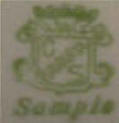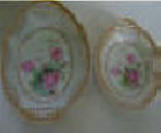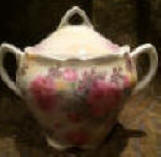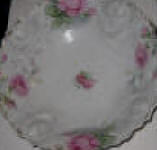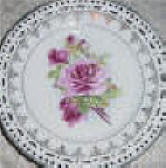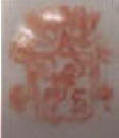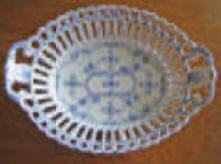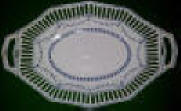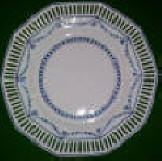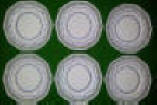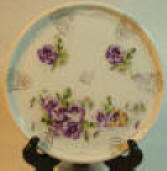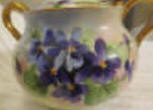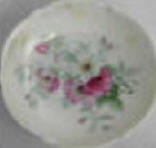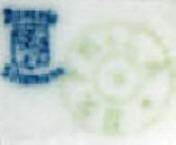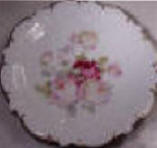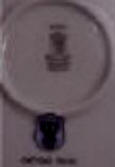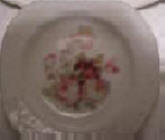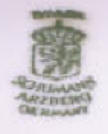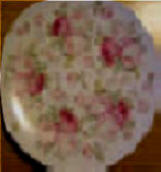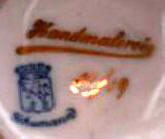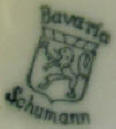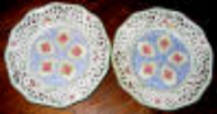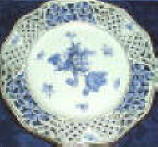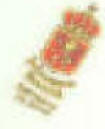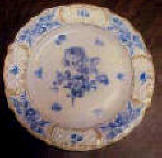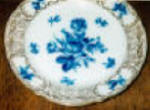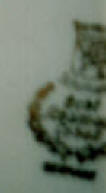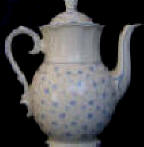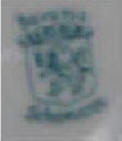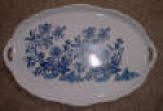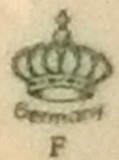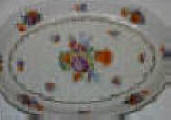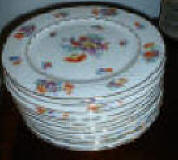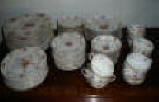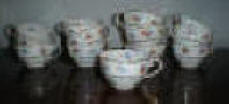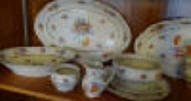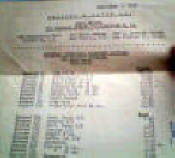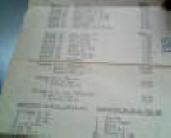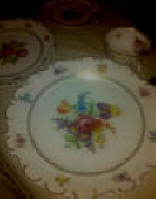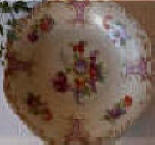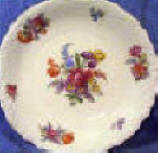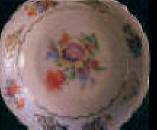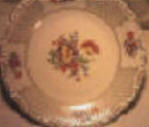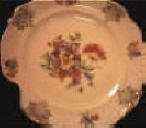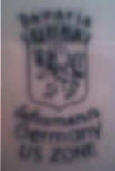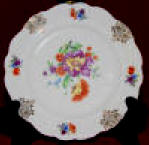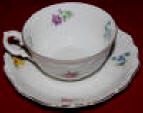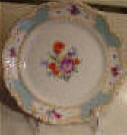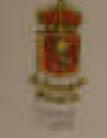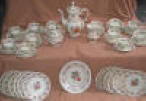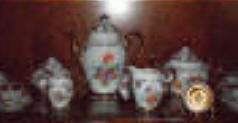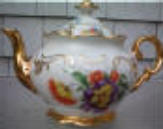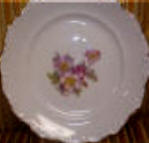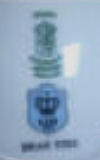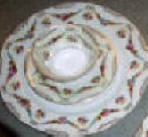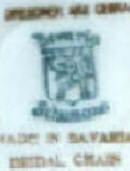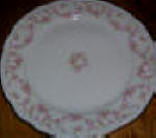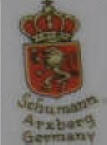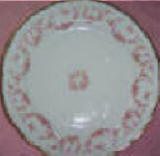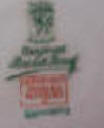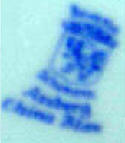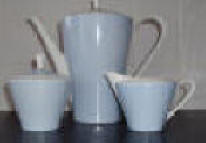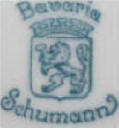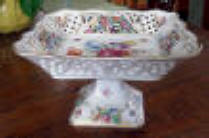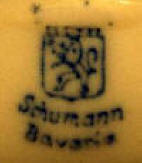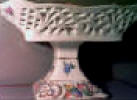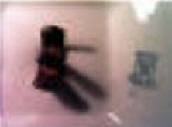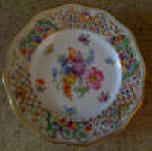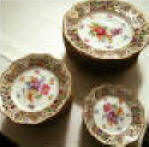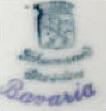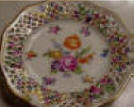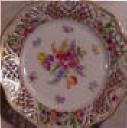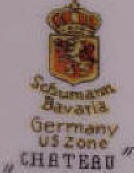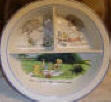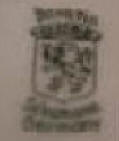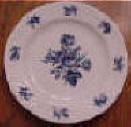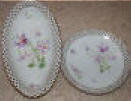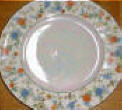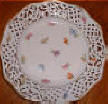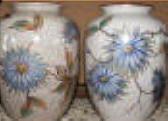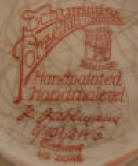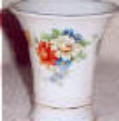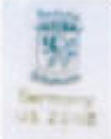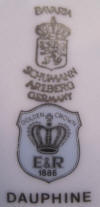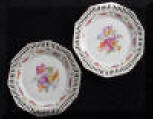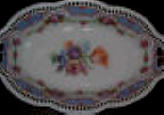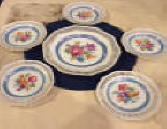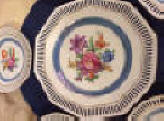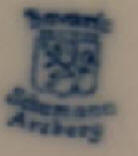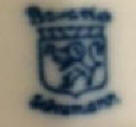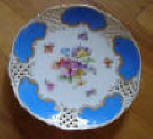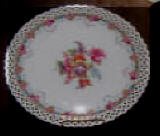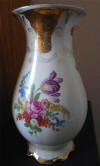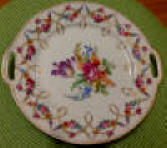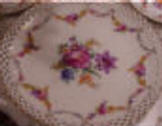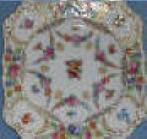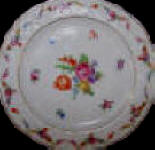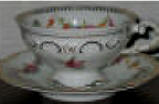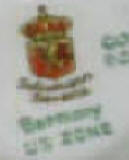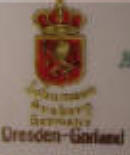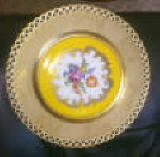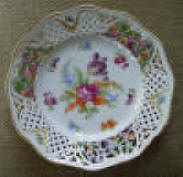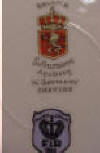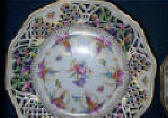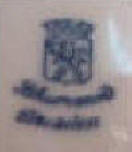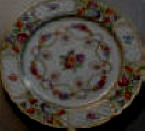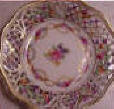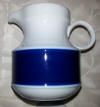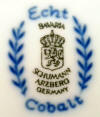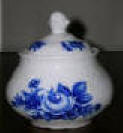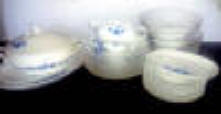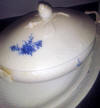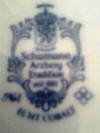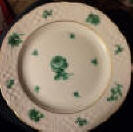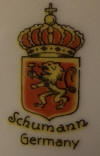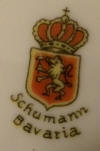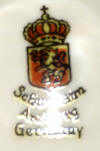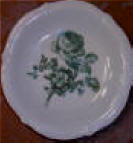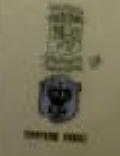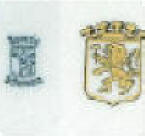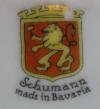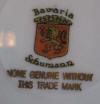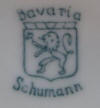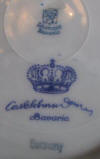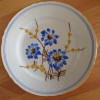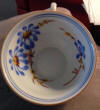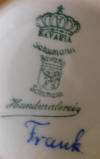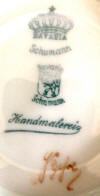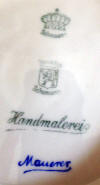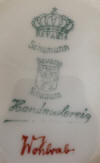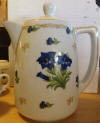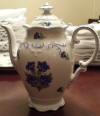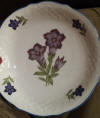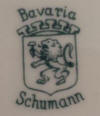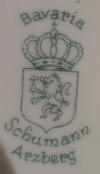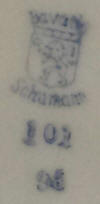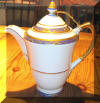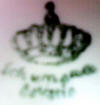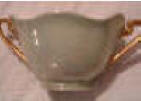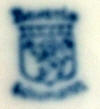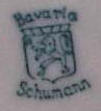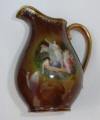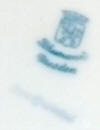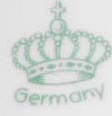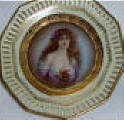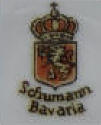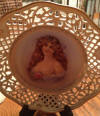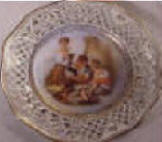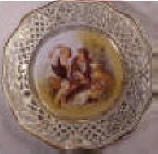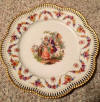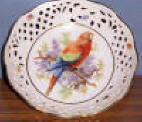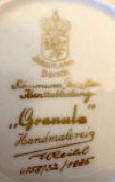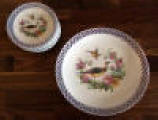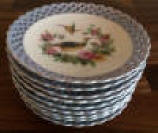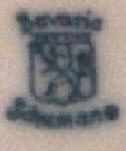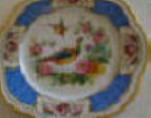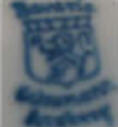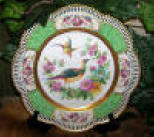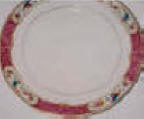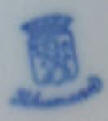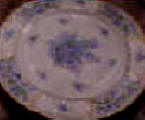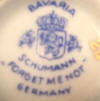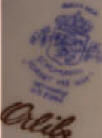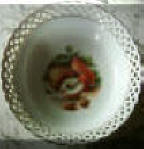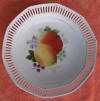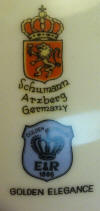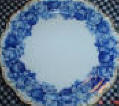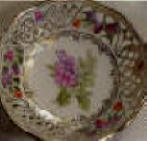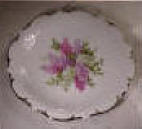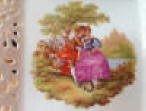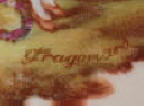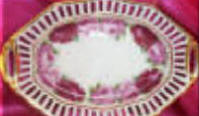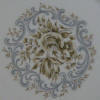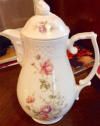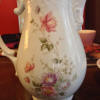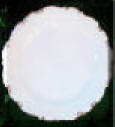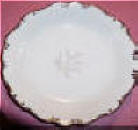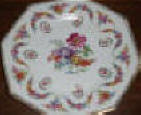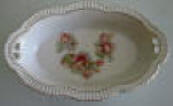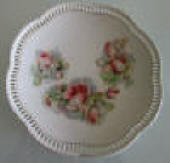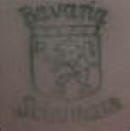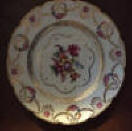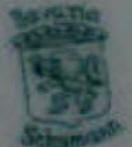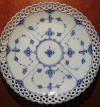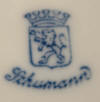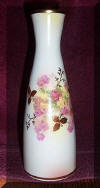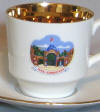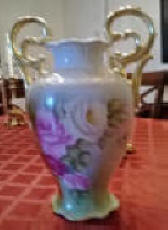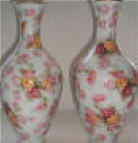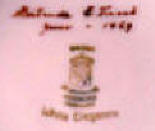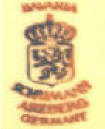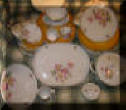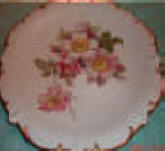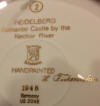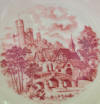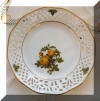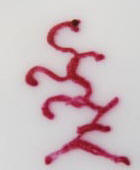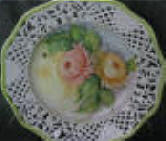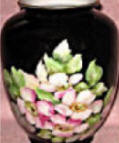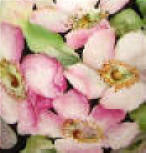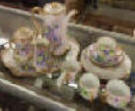
Go to Home Page of Efineantiques
Click here to return to Schumann Home Page
Schumann Tables of Marks and Patterns
|
Copyright 2000-2016 and beyond All Rights Reserved Efineantiques, Sharon Dickinson, and Sharon Dickinson Fine Antiques Factory pictures provided by Rainer Swiderski of Hamburg, Germany All information, research, and pictures on this page and elsewhere on our website may not be copied or reproduced without our permission
|
|||||||||||||||||||||||||||||||||||||||||||||||||||||||||||||||||||||||||||||||||||||||||||||||||||||||||||||||||||||||||||||||||||||||||||||||||||||||||||||||||||||||||||||||||||||||||||||||||||||||||||||||||||||||||||||||||||||||||||||||||||||||||||||||||||||||||||||||||||||||||||||||||||||||||||||||||||||||||||||||||||||||||||||||||||||||||||||||||||||||||||||||||||||||||||||||||||||||||||||||||||||||||||||||||||||||||||||||||||||||||||||||||||||||||||||||||||||||||||||||||||||||||||||||||||||||||||||||||||||||||||||||||||||||||||||||||||||||||||||||||||||||||||||||||||||||||||||||||||||||||||||||||||||||||||||||||||||||||||||||||||||||||||||||||||||||||||||||||||||||||||||||||||||||||||||||||||||||||||||||||||||||||||||||||||||||||||||||||||||||||||||||||||||||||||||||||||||||||||||||||||||||||||||||||||||||||||||||||||||||||||||||||||||||||||||||||||||||||||||||||||||||||||||||||||||||||||||||||||||||||||||||||||||||||||||||||||||||||||||||||||||||||||||||||||||||||||||||||||||||
|
Carl Schumann Porcelain Factory, AG (original founding name in 1881 was Schumann & Riess) Arzberg, Bavaria, Germany c. 1881-1994 Founded in 1881 by Christian Heinrich Schumann (1822-1884) Heinrich and Christiana Schumann's 4th and youngest child was Carl Schumann I (1871-1926) Heinrich named Carl I as his sole heir to the Schumann factory** At Heinrich's passing in 1884, his wife Christiana Schumann (1838-1928) took charge of the factory Factory was renamed Carl Schumann & Co. c.1892 (Carl's 21st birthday) Christiana turned the factory over to Carl I in 1896 Factory was converted to a corporation (AG) on July 19, 1923, and became Carl Schumann Porzellanfabrik AG Carl Schumann I passed in 1926 Carl Schumann II (1898-1975) became successor to Carl I Carl II studied in America in the1920's and founded the Schumann China Corporation of New York in 1928 The Schumann China Corporation distributed Schumann products in the U. S. 1928-1933 when it ceased to exist Carl II resigned in 1961 and was succeeded by Carl III Carl III resigned in 1981 and was succeeded by another branch of the family The business was reorganized, but was eventually sold to investors in 1990 It finally closed in 1994.
**Heinrich and Christiana Schumann's second child was Christopher (1864-1916) and has on occasion been confused as being the founder of the Carl Schumann factory in Arzberg, as well as confused as being the father of Carl. That is not true according to an excellent and thorough source we've found. Christian Heinrich Schumann, the father of both Christopher and Carl, was the founder of what came to be called the Carl Schumann Porcelain Factory in Arzberg. Christopher and Carl were brothers. Carl, the youngest, was obviously the favored child because of his interest in the business and was named by his father, Heinrich, as sole heir to the Schumann factory. Following the passing of Heinrich (the father) in 1884 and during the years that Christiana (the mother) managed the factory, Christopher decided to leave the family business in 1887 and start his own factory, also in Arzberg. His efforts were short-lived, however, when by 1891 he sold out to Lehmann, the founder of what eventually became Porcelain Factory Arzberg. In the meantime, Christopher had married into the very old and very wealthy Schreider family who were great land owners in the city of Schwarzenhammer. Christopher eventually went into business with his father-in-law, Karl August Schreider, and in 1905 established the Schumann and Schreider Porcelain Factory in Schwarzenhammer. Click here for a very interesting story about Johanna Schumann, wife of Carl II
|
|||||||||||||||||||||||||||||||||||||||||||||||||||||||||||||||||||||||||||||||||||||||||||||||||||||||||||||||||||||||||||||||||||||||||||||||||||||||||||||||||||||||||||||||||||||||||||||||||||||||||||||||||||||||||||||||||||||||||||||||||||||||||||||||||||||||||||||||||||||||||||||||||||||||||||||||||||||||||||||||||||||||||||||||||||||||||||||||||||||||||||||||||||||||||||||||||||||||||||||||||||||||||||||||||||||||||||||||||||||||||||||||||||||||||||||||||||||||||||||||||||||||||||||||||||||||||||||||||||||||||||||||||||||||||||||||||||||||||||||||||||||||||||||||||||||||||||||||||||||||||||||||||||||||||||||||||||||||||||||||||||||||||||||||||||||||||||||||||||||||||||||||||||||||||||||||||||||||||||||||||||||||||||||||||||||||||||||||||||||||||||||||||||||||||||||||||||||||||||||||||||||||||||||||||||||||||||||||||||||||||||||||||||||||||||||||||||||||||||||||||||||||||||||||||||||||||||||||||||||||||||||||||||||||||||||||||||||||||||||||||||||||||||||||||||||||||||||||||||||||
You'll find on this page information I've been accumulating about the Carl Schumann Porcelain Factory of Arzberg, Bavaria, Germany. I undertook this project a few years ago as a service in response to the many questions I started receiving about Schumann. In fact, at this point, it has taken on a life of its own and has grown far beyond anything I expected. I literally receive numerous e-mails from various parts of the world on a daily basis about Schumann. I welcome those e-mails and appreciate each and every one of you who send us your family stories and pictures of your beautiful Schumann. I've even heard from a few families who (both they and their Schumann) thankfully survived Hurricane Katrina. Thanks to each of you for sharing your family history and experiences. As I progress and learn more, I continue to research, revise our opinions, and update this information. Please remember this is only an attempt to piece together an ongoing puzzle and nothing is guaranteed or set in stone. Please forgive any mistakes in my assumptions, as I'm quite certain there are many. Please contact us if you can help in the least way. I welcome all e-mails, even if it's just to say you appreciate what you have found and have learned from it -- I've received many, many such comments. Thank you. Knowing that I have helped others in some small way makes worthwhile all the many hours, days, months, and years that we have devoted to this project. Scroll down this page for our ongoing comments which I have tried to group in logical order by topic, beginning with Factory Dates. Following our ongoing general comments, you will eventually come to our Tables of Schumann Marks and Patterns, which I hope you find to be a good visual for researching your Schumann. Read on -- I hope you find this as interesting as I have.
The Schumann Factory was first established in 1881 in Arzberg, Bavaria, Germany, and finally ceased production in 1994. Early in my research, I found a German website and have e-mail communication that confirms the 1994 closing date (see footnotes 6) and 7 below) Although the factory shut down in 1994, a Schumann factory outlet stayed open for approximately another 10 years in Arzberg, apparently for the purpose of selling off what was left of the Schumann inventory. I am told that the outlet finally closed in 2004 or early 2005 -- a sad final note in the history of this great old porcelain factory.(54)
Ebeling & Reuss of Philadelphia/ Devon/Allentown, Pennsylvania, were the exclusive American importers of Schumann beginning in the late 1940's. I do have indication that they imported Schumann under the name Erphila prior to World War II (back into the 1930's or even earlier) but I don't know if they were exclusive importers at that time. I have in my possession an assortment of old E & R brochures, ads, and pamphlets from the late 1940's, 1950's, and 1960s, all of which have been tremendously helpful in dating some of the Schumann patterns. The E & R ads from the late 1940's are advertising the many Schumann patterns they were importing at that time. The earliest ad I have is dated January 1948 and is promising immediate delivery after January 1, 1948, although this ad does not specify the particular patterns to be imported. However, an August 1949 E & R ad is advertising specific patterns, including the popular Empress Dresden and Chateau Dresden. The ad is also identifying them as being made in U. S. Zone Germany, which is referring to the years 1945-49 when Bavaria was occupied by the U. S. after the end of World War II. I don't know what mark, if any, E & R was using at that time. I have yet to find an E & R mark of any kind on any of the U. S. Zone pieces. For example, I have direct information regarding a set of Empress that was purchased brand new in 1948 in Pennsylvania, though not necessarily through E & R -- the exact origin of purchase is unknown to the current family member, although it does seem logical that E & R might have been the source.(59) That set does not have an E & R mark at all, but is marked U. S. Zone. Either E & R was not marking at that time, or the set came into the U.S. through another channel (see ** paragraphs in the American Market section below for possible options, as well as Footnote 2C found after the Table of Marks below). The E & R blue Golden Crown mark, frequently found on Schumann china, was apparently not used until the 1950's. It is shown in reference books as having been put into use beginning in 1955. However, I have a copy of an Ebeling & Reuss pamphlet dated 1954 which came with a set of Schumann Platinum Elegance purchased new in 1954 and does have the Golden Crown mark (see footnote 15 below), although the pamphlet itself does not illustrate the mark. Whether or not the Golden Crown mark goes back any further than 1954, I don't know. As to how long the E & R blue Golden Crown mark was used on Schumann China, the DMA (Dallas Museum of Art book discussed in American Market section below), page 289, says that E & R dropped many of its European lines in 1976 because of economic issues in Europe, as well as economic problems within E & R itself. I am, therefore, adjusting my dates accordingly and assume that any Schumann with the E & R mark is dated 1976 or earlier, although actual distribution to the public might not have occurred until much later, as inferred in Footnotes 3A and 38 below. E & R imported other product lines besides Schumann and did use a variety of marks back through the years. As already mentioned earlier in this section, I know they were importing European wares prior to World War II under the name Erphila, but I am not sure if they imported Schumann at that time. I have suspected that they did and now have evidence indicating that might have been the case -- read Footnote 86 below. If any one of you out there has anything, Schumann or otherwise, with E & R marks of any kind that you can date (through family history or otherwise) prior to 1955, please e-mail me. Ebeling & Reuss is still in business today in Pennsylvania, but has been purchased by a large corporation. I have tried unsuccessfully to find a current and working e-mail or phone number for E & R, so if anyone can help with that, please let me know. (More comments about E & R in the American Market section below)
I have come to believe that pattern names, with or without the E & R importer's mark, were probably added by the Schumann factory for the most part for the American market, though not 100%. A good example of an exception is "Vergissmeinnicht" (German for Forget-Me-Not) having been found on pieces that have either stayed in Europe or were purchased in Europe and brought here later. The design is, however, totally different than the FMN known here in America. As you study the table of marks below, you'll see numerous examples of pattern names that were obviously added after-the-fact. Many appear to be older pre-existing pieces that were most likely manufactured pre-1945 but not distributed until after the war ended in 1945. Regarding some of the more popular Schumann patterns, I believe the Chateau Dresden pattern ceased (read more below) in the 1960's and the Empress Dresden pattern in the 1980's (we have communicated with someone who purchased a complete set of new Empress in the early 1980's from a local jewelry store who had to special order the set directly from the factory in Germany). The *Chateau Dresden and *Chalet Forget-Me-Not patterns are shown in the 1961 E& R brochure, but are both missing from the 1965-66 brochure, which indicates that the Chateau and Chalet patterns most likely did cease production somewhere between 1961 and 1965. *Chateau is the reticulated (pierced rim) version of the Dresden Flowers and is complementary to the Empress solid rim dinnerware. *Chalet is the reticulated (pierced rim) version of the Forget-Me-Not and is complementary to the FMN solid rim dinnerware. I have no information so far about the actual beginning dates for any of these patterns, except our marks shown below, as well as our old E & R ads, show that the Empress Dresden and Chateau Dresden patterns, as well as the Chalet Forget-Me-Not all go back at least as far as the 1940's when the U. S. Zone mark was used (1945-1949, the years when the U.S. occupied Bavaria, Germany, just after World War II). At this point, I believe that the Empress and Chateau were both in existence prior to 1945, although they might not yet have been named as such. Just how far back the Empress actually goes, I don't know. As for the Chateau, I have bought and sold numerous "Chateau" pieces that were clearly Chateau and clearly, based on the marks, from the 1920's-30's era, but were not identified as Chateau. The more I study the marks, the more I am convinced of the pre-1945 existence of both patterns. In fact, in support of my belief are the old E & R ads of 1949 which refer to both Empress and Chateau as being "...generations old, yet ever appealing..." Empress is also referred to as "...truly Schumann's Masterpiece..." and "Carl Schumann's famous old-world Dresden decoration -- never changed since it was first introduced generations ago....our finest pattern..." The Forget-Me-Not solid rim version (not Chalet) is yet another mystery.(3A, 21, 38) My oldest documentation for it is the December 1952 E & R ad which shows it among the patterns available at that time. I believe it probably goes back even further. I don't know for certain how long the it was in production, although I know it was still in production into the 1960's. My two old E & R pamphlets, one dated 1961 and one dated 1965-66, both show the Forget-Me-Not solid rim as being one of Schumann's "latest masterpieces." I've also heard from a couple who purchased a brand new set in 1980(38); I believe that set was probably old inventory and probably no newer than around 1976. As mentioned above, E & R dropped many of its European lines in 1976 because of economic issues, so I assume that any Schumann with the E & R mark is no newer than around 1976, regardless of how long it took to reach the end consumer.
The red crown mark and all of its many variations has turned into quite a challenge all by itself as to exactly when it may have first been used by Schumann. However, I do have a few developments: (1)I have indication that one form of the red crown mark (with only the words "Schumann Bavaria") was apparently used as far back as 1918. This belief is based on information from Kenny Sugarman of Douglas, Arizona. He has in his possession a portrait plate (shown below in our table of patterns) that was handed down to him from his father; Kenny's father received the plate directly from an aunt and uncle who told him it was one of their wedding gifts; he said they were married in New York somewhere around 1918 -- they are basing this date on the age of the oldest child of that couple. That portrait plate has the red crown mark. Kenny, thanks to both you and your father for this helpful information!! (2)In support of Kenny's information above, Barb VanderRoest of Amherst Nova Scotia Canada, also has a beautiful portrait plate (shown below in our table of patterns) similar to Kenny's and with the same red crown mark with only the words "Schumann Bavaria." It is the surviving plate of a pair that originally belonged to her grandmother in Nova Scotia. Barb's mother, born in 1920, remembers the plates as a very young child. She was told that she broke the second plate when she was a toddler. Barb, thanks for being willing to share such interesting and valuable information!! (3)I have also heard from a lady who has some Schumann Wild Rose Blush pieces with the red crown mark and only the words Wild Rose and Schumann Arzberg Germany. They were given to her in 1983 by a client who was then in her 80's and said they were from pre-war Germany and that she inherited them from her mother who was from Germany. This helps to further verify the older age of the red crown mark. (4)Yet another piece of information is from Dmitry in Brooklyn, New York, who has a set of an early version of the Wild Rose pattern with the red crown mark. They originally belonged to a lady who fled Nazi Germany in the 1930's and brought the dishes with her at that time. As you study the red marks (as well as the others) in the tables below, you'll see that I have tried to group them as much as possible according to the various combinations of words of origin in the mark. For example, (1)Bavaria; (2)Bavaria Germany; (3)Germany; (4)Arzberg Bavaria; (5)Arzberg Bavaria Germany; and so on -- you see how complicated this is. As you will notice below, even the placement and order of the same words vary from mark to mark. Why such inconsistency??? -- we don't know. Notice also that the words are either (1) part of the original mark; or (2) were added at a late time. For those that were obviously added at a later time, I have displayed them in contrasting colors to make it easier in trying to study and distinguish the differences in the marks and the progression of their use. In summary, I have tried to organize all the marks in priority order by (1)Style; (2)Color; (3)Words; (4)Order of Words; (5)Placement of Words; (6)circa Dates.
A little summary of Bavarian History which I have read from a variety of sources is the basis for many of my dating assumptions about the wide variety of Schumann marks, many of which seem to have overlapped with one another as to years of use. Marion Weinreich of Hamburg, Germany, a retired history teacher, has been of tremendous help to me in sorting out this complicated history. For our purposes here, we've tried to streamline it as much as possible: 1806-1871 = Bavaria was an independent kingdom 1871-1918 = Bavaria became a part of the newly formed German Empire in 1871 1918-1933 = Bavaria was one of the individual states inside the newly formed Federal Republic of Germany following WW I 1933-1945 = Bavaria and others lost state status to Nazi Germany 1945-49 = Bavaria in U. S. Zone of Germany following WW II 1949-1990 = Bavaria part of West Germany** 1990-Present = Germany reunited Bavaria is currently the largest state in Germany. **Germany was divided into East and West in 1949 following World War II. FRG = Federal Republic of Germany (West Germany) GDR = German Democratic Republic (East Germany) (Source: http://en.wikipedia.org/wiki/West Germany and http://en.wikipedia.org/wiki/German Democratic Republic) As I learn more, I continue to make revisions. I also continue to ask such questions as -- why did Schumann have so many different versions of marks and why did they apparently overlap with one another??; what do the numbers mean?? This continues to be complicated and intriguing. You will see that I continue to add many notations along with the marks; I do that just as much for myself as for my viewers.
One thing you will notice are my comments that some words (U.S. Zone for example, as well as pattern names) were obviously added to pre-existing pieces -- inferring that there were pieces that survived the war. Before you immediately say that everything was destroyed in the war, I had e-mail communication with someone a few years ago who had incredible knowledge of Schumann and how they managed to protect their china during the war. I won't go into detail here because I have lost touch with that person (the e-mail is no longer active). If you are reading this and you are that person, please e-mail me. I have withheld pertinent details here which only you will know. I will maintain your confidentiality if you wish, or credit you here with your permission, Please contact me. I have also communicated with someone who told me about being stationed in Germany during the early 1950's and buying Dresden from a shop owner who told him that many of the Dresden pieces just then coming on the market had been crated and buried during World War II in order to protect them. He told me he bought the pieces to ship back to the U.S. for his mother. His information has confirmed what I suggested in the footnotes below about the possibility of Schumann entering the U.S. through the military, even into the 1950's, thereby bypassing importers and retailers and their related marks.** He has also reconfirmed what I just discussed above about porcelain pieces having survived the war and distributed later. **In support of the previous paragraph, we now have a wonderful book (already mentioned in another paragraph above) from the Dallas Museum of Art called "China and Glass in America, 1880-1980, From Tabletop to TV Tray." Page 231 of this book discusses the large volumes of fine quality china that were distributed through the Military PX's in Germany beginning just after the end of World War II and continuing through the 1950's. This method bypassed the American importers and retailers and also their related marks. However, in 1961, the U S. government started requiring the PXs to go through American importers to acquire their products. **Page 231 also discusses another option for entry of Schumann china into the U.S. -- through the Department of Commerce and a special division called U. S. Commercial Company (USCC) which was created specifically for the purpose of exporting 50% of the porcelain production of Germany. The U. S. was the primary consumer of that 50%. The remaining 50% of Germany's porcelain production was divided between the U. S. Military PX's (25%) and the German citizens (25%). (Source: "China and Glass in America, 1880-1980, From Tabletop to TV Tray" by the Dallas Museum of Art, page 231) Also of interest in the book is page 289 which is devoted to a lengthy discussion of the importer Ebeling and Reuss. We don't know if the USCC worked through E & R or independent of them. Perhaps E & R took up where the USCC ended -- we don't know. What we do know is that E & R was importing Schumann china as least as early as January 1, 1948, as documented by our old E & R ads and which we have already discussed several paragraphs above. If you wish to purchase this book, it's available through the DMA Museum Store. This book is well worth the money and gives a great insight into the history of china in America and the European connection. As to who marketed Schumann to the end-consumer in the U.S., we have interesting e-mails with information that Schumann was apparently being sold by Marshall Field in Chicago and Gump's in San Francisco as far back as the 1930's.(76) We also now know that Alfred Orlik had a shop on Madison Avenue in New York as early as 1940 and perhaps earlier. We have an October 1940 issue of House Beautiful magazine with an Alfred Orlik ad for an English breakfast set. The Orlik name in the ad is in the exact same style as the one found on hand painted Schumann Forget-Me-Not plates that have the Schumann U. S. Zone mark which dates to 1945-1949. Apparently Orlik was a china retailer before and after World War II. Just how long he was in business, we don't yet know. No doubt other high-end department stores, jewelry stores, and china shops across the country were also marketers for Schumann. We have recently received information that J. C. Penney was yet another retail source for Schumann in the 1950's. Prior to World War II, Schumann acted as its own importer and distributor and operated 1931-1941 under the name Schumann China Corporation of New York. According to the DMA book mentioned above, Schumann was sold under the brand names "Dresdner Art China" and "Schumann Bavaria" during those years of 1931-1941. As to how Schumann was imported and distributed prior to 1931, we don't yet know. After the war, E & R became the exclusive U. S. importer of Schumann with showrooms in New York, Philadelphia, Chicago, and Los Angeles. They eventually added showrooms in Dallas, Atlanta, Denver, Minneapolis, Cleveland, and Detroit. Warehouses were in Philadelphia and Pasadena.
Anyone who can add additional information is welcome to e-mail me to help make this more accurate and complete. Friendly, helpful e-mails are always welcome. Thanks to each of you who continue to write to me with additional pieces to this puzzle. I will credit you by name, city, state, and country unless you request otherwise. If you wish to remain anonymous, I will honor that request. More information on the way as I have time!! Copyright Notice All photographs on this page, unless otherwise noted, as well as photographs on the rest of our website were made by me from actual pieces we currently own or have owned in the past and may not be copied or used by others without our prior permission.** Copyright 2000-2016 and beyond All Rights Reserved Efineantiques, Sharon Dickinson, and Sharon Dickinson Fine Antiques Submissions and Permission **For research purposes, I do accept and post selected pictures of marks and patterns which have been contributed to me by others. Those pictures are also protected under my copyright notice. Appropriate credits have been given in my footnotes. By your submission, you are granting me permission to publish your pictures, information, and questions should I so choose and as I so choose, whether in this format or other published formats by Sharon Dickinson, unless you state otherwise at the time of your submission. Please be sure to tell me how you would like to be acknowledged for your contributions -- by full name or by initials only, or even anonymous, although I do prefer first and last names in this particular section. I also like to know your general location such as city, state, country, region, etc. I will honor your wishes and appreciate your help. |
|||||||||||||||||||||||||||||||||||||||||||||||||||||||||||||||||||||||||||||||||||||||||||||||||||||||||||||||||||||||||||||||||||||||||||||||||||||||||||||||||||||||||||||||||||||||||||||||||||||||||||||||||||||||||||||||||||||||||||||||||||||||||||||||||||||||||||||||||||||||||||||||||||||||||||||||||||||||||||||||||||||||||||||||||||||||||||||||||||||||||||||||||||||||||||||||||||||||||||||||||||||||||||||||||||||||||||||||||||||||||||||||||||||||||||||||||||||||||||||||||||||||||||||||||||||||||||||||||||||||||||||||||||||||||||||||||||||||||||||||||||||||||||||||||||||||||||||||||||||||||||||||||||||||||||||||||||||||||||||||||||||||||||||||||||||||||||||||||||||||||||||||||||||||||||||||||||||||||||||||||||||||||||||||||||||||||||||||||||||||||||||||||||||||||||||||||||||||||||||||||||||||||||||||||||||||||||||||||||||||||||||||||||||||||||||||||||||||||||||||||||||||||||||||||||||||||||||||||||||||||||||||||||||||||||||||||||||||||||||||||||||||||||||||||||||||||||||||||||||||
|
|||||||||||||||||||||||||||||||||||||||||||||||||||||||||||||||||||||||||||||||||||||||||||||||||||||||||||||||||||||||||||||||||||||||||||||||||||||||||||||||||||||||||||||||||||||||||||||||||||||||||||||||||||||||||||||||||||||||||||||||||||||||||||||||||||||||||||||||||||||||||||||||||||||||||||||||||||||||||||||||||||||||||||||||||||||||||||||||||||||||||||||||||||||||||||||||||||||||||||||||||||||||||||||||||||||||||||||||||||||||||||||||||||||||||||||||||||||||||||||||||||||||||||||||||||||||||||||||||||||||||||||||||||||||||||||||||||||||||||||||||||||||||||||||||||||||||||||||||||||||||||||||||||||||||||||||||||||||||||||||||||||||||||||||||||||||||||||||||||||||||||||||||||||||||||||||||||||||||||||||||||||||||||||||||||||||||||||||||||||||||||||||||||||||||||||||||||||||||||||||||||||||||||||||||||||||||||||||||||||||||||||||||||||||||||||||||||||||||||||||||||||||||||||||||||||||||||||||||||||||||||||||||||||||||||||||||||||||||||||||||||||||||||||||||||||||||||||||||||||||
|
|
|||||||||||||||||||||||||||||||||||||||||||||||||||||||||||||||||||||||||||||||||||||||||||||||||||||||||||||||||||||||||||||||||||||||||||||||||||||||||||||||||||||||||||||||||||||||||||||||||||||||||||||||||||||||||||||||||||||||||||||||||||||||||||||||||||||||||||||||||||||||||||||||||||||||||||||||||||||||||||||||||||||||||||||||||||||||||||||||||||||||||||||||||||||||||||||||||||||||||||||||||||||||||||||||||||||||||||||||||||||||||||||||||||||||||||||||||||||||||||||||||||||||||||||||||||||||||||||||||||||||||||||||||||||||||||||||||||||||||||||||||||||||||||||||||||||||||||||||||||||||||||||||||||||||||||||||||||||||||||||||||||||||||||||||||||||||||||||||||||||||||||||||||||||||||||||||||||||||||||||||||||||||||||||||||||||||||||||||||||||||||||||||||||||||||||||||||||||||||||||||||||||||||||||||||||||||||||||||||||||||||||||||||||||||||||||||||||||||||||||||||||||||||||||||||||||||||||||||||||||||||||||||||||||||||||||||||||||||||||||||||||||||||||||||||||||||||||||||||||||||
|
Schumann Patterns and Approximate Dates |
||||
|
This is a summary of approximate beginning and ending dates, as I can best determine for now, for a few of the Schumann patterns. These are only my opinions. My assumptions are based on popular reference books, old pamphlets in our possession, marks on Schumann pieces that I now have or have had, as well as information I have gathered from family histories of those with whom I have corresponded across the country through e-mail and in person. For those patterns that have no pictures, it is because I do not have any pieces of those patterns to photograph. I did find some of those patterns in the old E&R brochures from the 1960's and thought it important to include them in this table even without pictures (the brochures do have pictures, but we don't want to violate copyright laws since E & R is still in business). The old CS Marks are first. After that, I have grouped the patterns alphabetically by name, if known, or by category/description if unknown. I hope this reorganization will make it easier to find what you are seeking. You will notice that there are many Unknown patterns. In the early years, they apparently didn't name the patterns at all or just didn't apply the names to the pieces as part of the marks on the backsides. Either way, they are unknown to me. For many of them, I have assigned names or descriptive phrases and have used quotes to so indicate. I cannot guarantee the complete accuracy of this information and welcome any additional input. Please feel free to e-mail if you can help. Family Histories are so very helpful. "A special thanks to each of you who have already shared your family histories with me and have contributed pictures to help make this more complete."
|
||||
| Pattern Names/Categories | Products | Marks | Estimated Time Frame of Existence | Comments |
| (best estimate) | ||||
|
CS Patterns and Marks Grouped by similarities first and alphabetically when possible |
||||
|
"Early Daisies" |
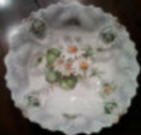 |
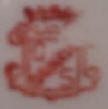 |
c.1900 | Crissy Duckett of Indio, California, purchased this bowl at an estate auction in Statesville, North Carolina. She is hoping to find additional pieces to match. |
|
"Early Dresden Flowers" |
Notice the similarity in design to the later Chateau pattern. |
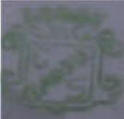 |
c.1900
|
L. Biester of Reading, Pennsylvania, found these at an estate sale in her area. She is a shop owner on Ruby Lane, where she is offering these for purchase. |
| "Early Dresden Flowers" |
Notice old style of reticulation |
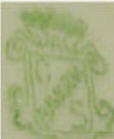 |
c.1900 | C. S. in North Carolina contributed these pictures and was the first person to send me an example of the old CS mark. |
|
"Early Dresden Flowers" |
Notice the old style of reticulation. |
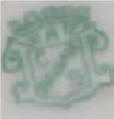 |
c.1900 | Stephen Pickover in New York, NY, contributed pictures of some pretty floral plates that belonged to his great grandmother who came to the USA in the early 1900's, prior to WW I. This is another example of the oldest green mark to come our way. |
| "Early Dresden Flowers" |
 |
 |
c.1900 | Carole Eady of Niagara on Lake Ontario, Canada, shared pictures of her old Dresden Flowers bowl with a red version of the CS mark. |
|
"Early Dresden Flowers"
|
A good example of an early version of the Dresden Flowers |
Notice added words "Dresden Flowers." |
c.1900 | This is another example of this old Schumann mark, but with the added words "Dresden Flowers." An Anonymous Contributor in Portland, Oregon, made this contribution. Thanks!! |
| "Early Dresden Flowers" |
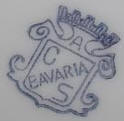 |
c.1900 |
Contributed by
L. I. A beauty of a bread basket with its elegant swag design. This is the first CS mark I've seen in blue. |
|
| "Early Dresden Courting Couples" |
|
c.1900 |
Carl Sampsell of Selinsgrove, Pennsylvania, shared pictures of his set of Early Dresden cups with courting couples scenes on the inner rim of each cup. | |
|
"Fish/Fowl/Animal" |
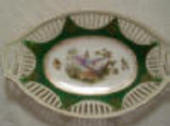 |
 |
c.1900 |
Richard Jones of Gainesville,
Florida, recently purchased this beautiful old basket with a
wildlife scene. The mold is similar to the one for
"Roses Pink" below. Richard is retired and likes to buy and sell old art. He has an antique booth in Gainesville where he has this piece on display.
|
| Fruit |
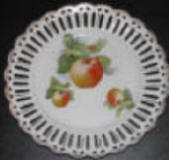 |
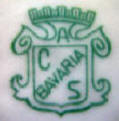 |
c.1900 | Daren Matteson of Central California contributed pictures of his pretty fruit plate. |
| Fruit |
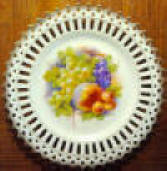 |
Same red mark as one shown below. | c.1900 | Picture of plate courtesy of Julie Raum in Rocky River, Ohio |
|
Fruit
|
 |
c.1900 | Pictures courtesy of Larry Sears of Bloomington, Illinois | |
|
"Fruit Garland" |
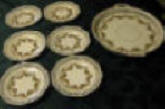 |
Green CS Mark | c.1900-1927 | Pictures courtesy of Susan Storma of Orlando, Florida. Her grandparents were married in New Jersey in 1919 or 1920, and received this dessert set as a wedding gift. |
|
"Orchids" Sample |
Sample may have been the pattern name |
c.1900-1927 | One of a pair of beautiful old Schumann plates with the old style reticulation. | |
| "Pink and Silver" |
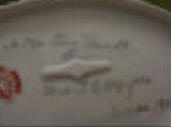 |
c.1914 | This old berry bowl set was found at a St. Louis, Missouri, antique mall in by Ted and Pam Coombes of Ketchum, Oklahoma. The set has both the old red and green CS marks. Best of all is the handwritten and dated inscription from 1914. Refer to comments below for more information about the CS marks. | |
| "Rose Garland" |
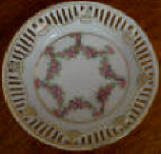 |
 |
c.1900 | Karen Dixson of Amherst, New York, received this bowl from her grandmother. |
|
"Roses Pink"
|
Old style of reticulation |
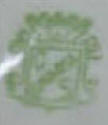 |
c.1900 | This is another example of this old Schumann mark to come to us. J. D. Rainey of Minnesota contributed these pictures. |
| "Roses Pink" |
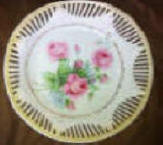 |
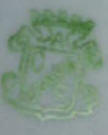 |
c.1900 | Joan Johnston in Rondeau Ontario Canada shared pictures of her plate with the beautiful roses. Notice they seem to match the ones in the frame just above. |
|
"Roses Pink" (Rose Blush) |
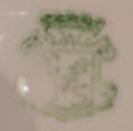 |
c.1900 | Shari M. of Los Angeles, California, shared pictures of the creamer she inherited from her mother who was born in 1918. The family handed down their effects to each other beginning in the 1880's. Shari's mother was the youngest of her siblings and ended up with many of the family collections. | |
|
"Roses Pink" |
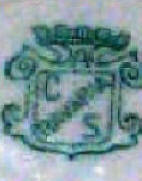 |
c.1900 |
Margaret Quinn of Myrtle Beach, South
Carolina, shared her pictures and family story
of this old Schumann bowl that she inherited from her
Great Aunt, Kathryn Woelfle, who passed away in 1974.
In Margaret's words: "The bowl had actually belonged to Aunt Kathryn's husband, Maurice. He immigrated to the U.S. in 1908 at the age of 20. Not unlike other immigrants, his parents had come earlier, with his mother arriving in 1899. They came to the U.S. from Alsace Lorraine, now part of France, but with heavy German influence. I suspect she brought the bowl with her in 1899." |
|
| "Roses Red " |
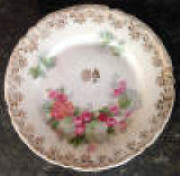 |
 |
c.1900 |
Contributed by Dana Torrey in
Wellfleet, Massachusetts This is one of a pair of plates that belonged to Dana's grandmother who lived in far northern Vermont. |
| "Roses Red " |
|
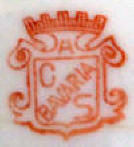 |
c.1900 | TRH contributed pictures of her beautiful bowl that she purchased from an antique shop in Houston, Texas. |
|
"Roses Red " |
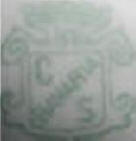 |
c.1900 | Stan in Loveland, Colorado, contributed pictures of his plate that belonged to his grandmother who was married in 1929 and may have received this as a wedding gift. | |
| "Roses Red" |
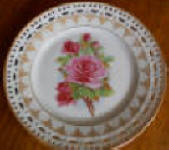 |
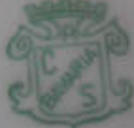 |
c.1900 | Karen Dixson of Amherst, New York, received this plate from her grandmother. |
|
"Roses Red" |
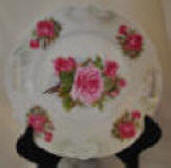 |
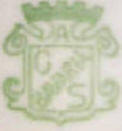 |
c.1900 | Dina M. Ciriello of BelMar Farm, California, purchased this plate at an estate auction in Jefferson County, West, Virginia, and was kind enough to share her pictures. |
| "Roses Red" |
 |
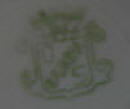 |
c.1900 |
Another old CS plate with
and unknown Roses pattern. Pictures contributed by M. Wagler who inherited the plate. |
| "Roses Yellow" |
 |
 |
c.1900 | Karen K. of Alto, Michigan, inherited this 10" cake plate with inset handles from her grandmother who was of German descent, but was born in the USA. Karen believes the plate may have originally been purchased in Germany by her great grandparents. |
|
"Roses"
|
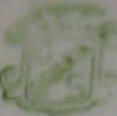 |
c.1900 | J. Walls of Kelowna, British Columbia, Canada, received this pretty Schumann dish that originally belonged to her Stepmother's Mother. | |
|
"Roses" |
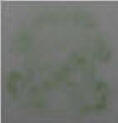 |
c.1900 | Bruce Hoffman in Hollister, Missouri, contributed these pictures from his extensive Schumann collection. | |
| "Roses" |
Same as green mark above except red. |
c.1900 | Pictures contributed by Dianne Lavenburg in DeSoto, Kansas | |
| "Sailboat" |
 |
Green CS Bavaria Mark | c.1900 | Picture courtesy of Allen who found this at a Goodwill store. |
|
Strawflower |
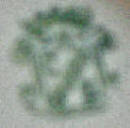 |
c.1900 | Pictures courtesy of Barbara Lynch in Victoria British Columbia Canada. She purchased this basket from an antique shop in Victoria. | |
| Unknown Design |
 |
c.1900 | Pictures of fruit set courtesy of Sally-ann Pirt in Scotland U.K. | |
|
"Violets" |
 |
c.1900 | Pictures of Trivet courtesy of RF in Cheyenne, Wyoming. | |
|
"Violets" |
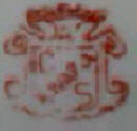 |
c.1900 | Paula Clark in Wisconsin contributed pictures of her hand painted sugar and creamer that were originally owned by her grandparents in Fremont, Ohio. | |
|
Paula's grandfather, Dr. Noah Bates, was known for delivering babies in exchange for paintings, bushels of chickens, etc., which is how he most likely acquired these pieces. Josh, the artist, used whiteware from the Schumann Porcelain Factory in Germany. Whiteware can go undecorated for years before someone finally uses it. With these pieces being undated, it is unknown when Josh actually painted these beautiful African Violets. |
||||
|
"Early Wild Rose" Appears to be a very early version of "Wild Rose" and possibly one of the original forerunner of the other Wild Rose versions shown below |
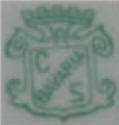 |
c.1900 | Bruce Hoffman in Hollister, Missouri, contributed these pictures from his extensive Wild Rose collection. A few of these have the lion marks, but I've included them here to keep the collection together. | |
|
Appears to be a very early version of "Wild Rose" and possibly one of the original forerunners of the later Wild Rose versions. |
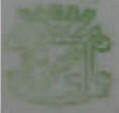 |
c.1900 | Bruce Hoffman in Hollister, Missouri, contributed these pictures from his extensive Wild Rose collection. | |
|
Another of what appears to be a very early version of "Wild Rose" and possibly a forerunner of the other Wild Rose versions shown below. |
Found on this old Schumann creamer and sugar set dated to c.1920's-30's or even earlier and is the first confirmation we have that E & R (Erphila) was apparently importing Schumann to the U. S. prior to World War II. (See Footnote 86 above) |
c.1920's or earlier | Bruce Hoffman in Hollister, Missouri, contributed this mark that includes this green circle that says Erphila which is presumably for Ebeling and Reuss and possibly one of its earliest marks, though not documented until now as far as we know since we haven't been able to find it in any of the many books we have. | |
|
Appears to be a very early reticulated version of "Wild Rose" and possibly a forerunner of what came to be called Rosedale in the 1950's. |
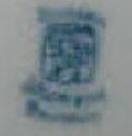 |
c.1920's or earlier | Bruce Hoffman in Hollister, Missouri, contributed these pictures from his extensive Wild Rose collection. | |
| Yet another of what appears to be a very early version of "Wild Rose" and possibly a forerunner of the other Wild Rose versions shown below. |
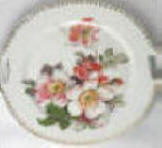 |
 |
c.1924-30 |
Bruce Hoffman in Hollister, Missouri,
contributed these pictures from his
extensive Wild
Rose collection. This particular old blue Schumann mark was used beginning c.1924. |
|
Lion Patterns and Marks |
||||
|
Alphabetical by Pattern Name or Category |
||||
|
Along the way, you'll see small title bars alerting you to special categories. |
||||
|
Antique Rose |
Scalloped Rim Edge, White Background, Smooth Top, Coupe Shape |
1950's-1960's |
Not in either 1961 or 1966 Ebeling & Reuss brochures. Though not pictured here, I recently found this pattern with the Schumann red mark from the 1950's. |
|
|
Antique Rose |
1960's |
Liliane Huge of the Netherlands contributed these pictures of her set of dishes. They appear to be a flat-rim version of Antique Rose |
||
|
Antique Rose similar (Roses are similar to the Antique Rose above) |
c.1950's | J. R. Desjean of Fitchburg, Massachusetts, contributed these pictures of her set of Schumann. |
||
|
"Art Deco" |
 Vase |
This particular Lion Mark was used beginning in 1924 and probably officially registered in 1923 when Carl Schumann I incorporated the factory. |
1924 | Miroslava Hanusova in Prague shared pictures of this Art Deco vase. He has a showroom called Art Deco Shop, as well as a website: |
| "Art Deco" |
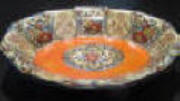 |
Probably registered in 1925 or earlier (Source: Rontgen's, page 42) |
c.1920's or earlier |
N.G. in Canada contributed pictures of her bowl which she inherited from a family member. |
| "Art Deco" |
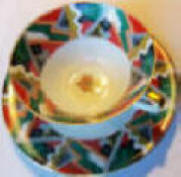 |
Registered April 8, 1926 (Source: Danckert, page 41) |
c.1920's-30's | Pictures contributed by T.H. in California. Her grandparents, now in their 90's, were the original owners of this set of teacups which she believes may have been purchased in Chicago. They traveled to Chicago quite frequently, and other family members lived there. |
| "Art Deco" |
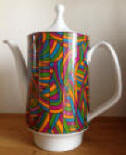 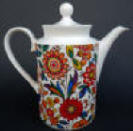 |
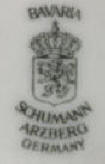 |
1970's | Maja and Martin in Sweden shared pictures of their two coffee pots from the 1970's. |
|
"Art Nouveau" ??? |
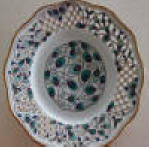 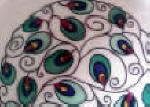 |
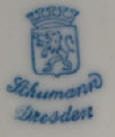 |
c.1920's-30's |
Pictures contributed by Devika in Germany |
| "Bavarian Village" | See "Souvenir" section at bottom of this page | |||
|
Betsy Ross |
See Figurals |
|||
|
"Black and Gold" |
See Fancy Golds and Solid Colors |
|||
|
"Blue and Gold" |
See Fancy Golds and Solid Colors |
|||
|
"Blue Chintz" |
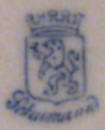 |
c.1924 | Another old and unknown Schumann pattern. Pictures contributed by Claudia Rodenburg in The Netherlands. The plates were originally owned by her husband's great-grandmother. | |
|
"Blue Dresden" If anyone else has this pattern, please e-mail. Pat is trying to replace a broken cup and saucer. |
Notice later style of sugar bowl and leaning finial on both sugar bowl and coffee pot. Same molds as Echt Cobalt and the later Empress |
 |
1981-1990 | Pat T. of Atlanta, Georgia, contributed these pictures of her beautiful china which she purchased brand new in the late 1980's in a shop in Rudesheim, West Germany. (see footnote 33 in table of marks above) |
| "Blue Dresden" |
Same mold as Chateau |
The U. S. Zone part of the mark dates to 1945-1949, the years when a portion of Germany as occupied by the U. S. just after World War II. |
1945-1949 |
B.L.C.H.
of Vancouver Island in British Columbia Canada, contributed
these pictures of a plate that was part of her mother's estate.
What years before and after 1945-1949 this pattern may have been produced, we don't know. |
| "Blue Dresden" |
Similar to Forget-Me-Not except different flowers and similar to Empress Dresden Flowers |
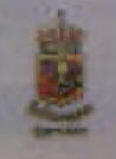 |
c.1940's | Not in either the 1961 or 1966 Ebeling and Reuss brochures. Ann Shoffstall of Richardson, Texas, submitted these pictures and told us her parents purchased these in an antique shop in the French Quarter of New Orleans in the late 1940's or early 1950's. |
|
"Blue Dresden" "Old" Echt Cobalt |
This set is evidence of this earlier 1950 dating of the Echt Cobalt product line. This Echt Cobalt mark was added to an old lion mark. Later Echt Cobalt examples in the Echt Cobalt section below. |
Pictures contributed by Madria Hepner of Washington, Pennsylvania. This beautiful set was originally owned by her mother who purchased them directly from the Schumann factory in 1950. A military friend took her to the factory and introduced her to Mr. Schumann who told her that he had just sold 100 place settings of this pattern to a Maharaja. |
||
|
"Blue Flowers" (see Kornblume for a similar set) |
1941 |
Not in either 1961 or 1966 Ebeling & Reuss brochures. An Anonymous Contributor in Lemgo, Germany, sent these pictures and shared their fascinating family history of this coffee pot. (Also see Footnote 17B above.) |
||
|
The grandfather of Anonymous purchased this coffee pot in 1941 as a wedding gift for his new wife. It was during WW II and things were difficult to buy, but he managed to buy this coffee pot, two cups, and two plates. They used it for every breakfast and every dinner. When they had to leave Stettin, Germany, in 1945 at the end of the war, they took with them only the necessities for survival. However, the young wife didn't want to leave her first coffee pot behind and took it with her to their new home in East Germany. In 1953, the couple had to again leave their home for political reasons and moved to West Germany. Again, the coffee pot went with them and is now in the possession of their daughter and eventually their granddaughter who shared this story with us. Grandmother decided that the pot should be passed down to each generation through the daughters as they marry. Her wishes continue to be honored to this day. |
||||
|
"Blue Flowers" |
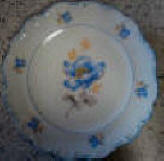 |
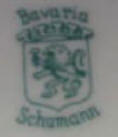 |
1940's | Ann in Helotes, Texas, shared her pictures and family story regarding this beautiful set purchased in the 1940's by her great uncle for her grandmother. |
|
"Blue Flowers"
|
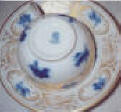 |
c.1920's-30's | I found these at an estate sale in Dallas back in the 1990's, ended up selling them on ebay and now wish I had kept them. | |
|
Blue Onion |
 |
1981-1990's | Pictures contributed by Keith Sanders of Birmingham, United Kingdom. His sister received this Blue Onion tray as a present a few years back from someone in Germany. | |
|
This Schumann mark is one of the last marks used by Schumann. It was put into use in 1981 when they celebrated their 100 Year Anniversary of the factory. "Seit 1881" means "Since 1881." The factory was founded in 1881. |
||||
| "Blue Regency" |
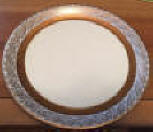  |
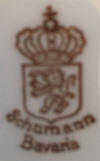 |
1950 |
B. Rowe in Melbourne, Florida,
shared pictures of her mother's china which she bought at an art
gallery in Miami in the 1950's. Notice the beautiful gold roses on the rim. |
| "Blue Regency" |
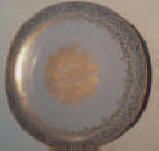 |
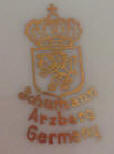 |
1950 | Stephanie Crill of Ft. Worth, Texas, shared her family story and pictures of the beautiful china she inherited from her mother. This was her mother's wedding china purchased from Stripling's Department Store in Ft. Worth in 1950. The sales lady said the pattern name was Blue Regency and that the undecorated blanks were imported to the US and then handpainted by Dorothy Thorpe of California. Unfortunately none of the pieces are marked to prove that, so it is uncertain if the sales lady was accurate with her information. Regardless, the china is beautiful. |
| Bouquet |
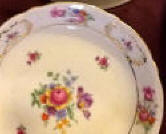 |
Floating Crown |
c.1930's-40's | Cheri Franke of Ely, Iowa, contributed pictures of what appears to be an early version of the Bouquet pattern with just the Floating Crown mark. The meaning of the F in the mark is unknown. |
|
Bouquet |
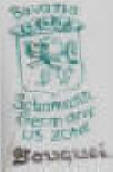 |
1945-49 |
Not in either 1961 or 1966 Ebeling & Reuss brochures. An anonymous contributor told me her husband inherited this set from his father who was in the Air Force in Germany 1950-1953. There is evidence that the Bouquet pattern was still being produced as late as the 1990's by a decorating shop in Bavaria who used Schumann whiteware. When the factory closed in 1994, the shop was concerned about losing its source for whiteware and reported they had to eventually shut down their website. What Schumann marks were on that whiteware, I don't know. |
|
|
|
||||
| Bouquet | 1945-49 | Here
are pictures of a full set of Bouquet
sent by J. M. in Florida.
He inherited the set from his grandmother who received them around
1946 or
so from his grandfather who was a Master Sergeant in the military and
stationed in Germany. At the request of J. M., this posting is being made as a tribute to his grandmother, Beatrice Matter. I am pleased to do that. |
||
| Bouquet |
Original invoice. Purchased in September 1, 1948, directly from the American importer, Ebeling & Reuss of Philadelphia. It is identified as "Bavarian Dinnerware "Bouquet Pattern. #69 Factory Schumann Open Stock." There are 112 pieces in this set. |
Picture of mark unavailable. but wording is as follows:
Schumann Bavarian China Germany US Zone |
September 1, 1948 (actual purchase date of the china) |
Kim Larson
shared pictures of her Bouquet
set that was purchased by her mother-in-law in 1948.
Her parents owned a jewelry store in Livingston,
Montana, so the set was purchased through them.
What great documentation to have the original Ebeling & Reuss invoice. |
| Bouquet |
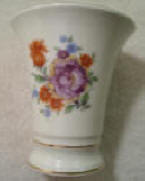 |
 |
1945-49 | Richard Jones of Gainesville, Florida, recently purchased this vase, which appears to be the Bouquet pattern. Richard is retired and likes to buy and sell old art. He has an antique booth in Gainesville where he has this piece on display. |
|
Bouquet similar or "Royal White" Same mold as Royal, but decorated like Bouquet |
 |
1945-49 | Anonymous from Georgia sent pictures of their recently inherited U. S. Zone set. It appears to be the same mold as the Royal pattern, but is decorated like the Bouquet pattern. In the absence of anything else, I'm calling it a combination of the two. | |
|
Bouquet similar or "Royal White" Same mold as Royal, but decorated like Bouquet |
|
|
1945-1949 | Pictures contributed by another Anonymous viewer who inherited a complete set from great grandmother. |
|
Bouquet similar |
c.1940's |
Denise Sils in Sunnyvale, California, bought this bowl at an antique store several years ago. |
||
|
Bouquet similar |
c.1940's |
Christine and Jim Battle of Putnam County, New York, submitted these pictures of a beautiful cake plate they found at a recent sale. |
||
|
Bouquet similar |
Pictures of mark unavailable but it is green U.S. Zone |
1945-49 |
Linda of Charleston, South Carolina, contributed the picture of this soup bowl that was handed down to her by her grandmother who passed away in 1978 at the age of 92. |
|
|
Bouquet similar Though different flowers, this plate is similar in body style to the above bowl and is also from the same era. |
Stamped U.S. Zone mark obviously added to a pre-existing piece manufactured prior to end of WW II. |
1945-49 |
Joanne Sonia of Revere, Massachusetts, sent pictures of this beautiful plate she found recently at a local flea market. |
|
|
Bouquet similar |
1945-49 | Joanne Sonia of Revere, Massachusetts, sent pictures of this beautiful plate she found recently at a local flea market. | ||
|
Bouquet similar |
1945-49 |
Kate Church of Seattle, Washington, contributed pictures of her Schumann that she recently found at a local estate sale. |
||
|
Bouquet similar |
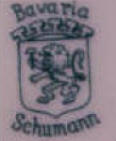 |
c.1940's | Carolyn McCauley in St. Louis, Missouri, sent pictures of miscellaneous Schumann brought home to America from Germany in 1946 by her father who served in World War II. | |
|
He found random pieces here and there at "rummage sales" which serves to confirm the older dating. He originally purchased these for his mother. Carolyn and her husband received them a few years as a wedding gift -- a great family treasure passed to a new generation!! |
||||
|
Bouquet similar
|
U.S. Zone mark |
c. 1945-1949 | Not in either 1961 or 1966 Ebeling & Reuss brochures. The circa dates are based on the U. S. Zone part of the mark, although this plate was most likely manufactured much earlier since the words Germany U. S. Zone were obviously added to a pre-existing piece. |
|
| Bouquet similar | c.1940's | Brenda Kiehner in Pennsylvania shared pictures of this beautiful set originally owned by her parents. Her father sent it home to her mother when he was serving in Germany during World War II and just after. | ||
|
Bouquet similar |
  |
c.1940's | MZ contributed pictures of china she inherited from her grandmother (1898 to 2004) who emigrated from Europe as a child and lived in Toronto Ontario CANADA. The J.B.F. & G. mark is probably that of an exporter/importer/retailer with offices in Bavaria Germany as well as in Toronto. | |
|
Bouquet similar |
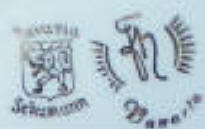 FN may have been an exporter. Both marks are in Gold and clearly applied by the Schumann factory since the gold on each is a match. |
c.1930's | NVB in Massachusetts sent pictures of her large set of Schumann that her aunt shipped back from Germany right after WW II. Her story is continued below. | |
|
She arrived in Germany in 1946 and worked at the U. S. military base in Weisbaden. She sent the set home almost immediately. It is assumed she purchased it brand new from the military base PX. Based on the mark, I think they may have been pre-war production. |
||||
|
Briar Rose |
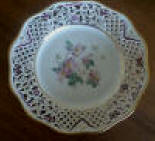 |
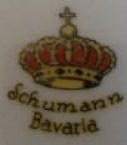 |
c.1940's | Nena Palaiopanou in Greece inherited this beautiful plate from her great grandmother. The pattern appears to be a reticulated version of the Briar Rose pattern. |
|
Briar Rose (Appears to be a later version of what was originally called Wild Rose) |
c. 1950's-1966 plus |
Found in both 1961 and 1966 Ebeling and Reuss brochures. Thelma Huttner of Strongsville, Ohio, contributed these pictures. She has a complete set of these dishes which were found in her husband's aunt's attic. |
||
|
Jeri Aiello of Johnstown, Colorado, told me she has twelve place settings of Briar Rose that she received back in 1957 when her mother worked for J. C. Penney's. Mother paid $50 for the set of 12. She bought a total of three sets for all the sisters. |
||||
|
Bridal Chain |
c.1928-1933 Dresdner Art China was an importer's mark used by the Schumann China Corporation of New York which was established in 1928 for the sole purpose of selling to the American market. The corporation ceased in 1933. |
DK in Michigan contributed these pictures of her Bridal Chain set. |
||
| Bridal Chain |
A mixed set. The saucers and the two-handled bowl (bouillon cup) are Bridal Chain. The sugar and creamer are San Louis Rey. The cups appear to also be San Louis Rey. |
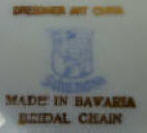 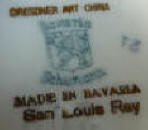 |
c.1928-1933 Dresdner Art China was an importer's mark used by the Schumann China Corporation of New York which was established in 1928 for the sole purpose of selling to the American market. The corporation ceased in 1933. |
Dagmar Herwig of Munich, Germany, contributed pictures of this set that came down to her through her family. It was originally owned by a family member who died in 1937 at the age of 67, so logically she would have had them for some time prior to her passing in 1937. |
|
Bridal Chain Similar |
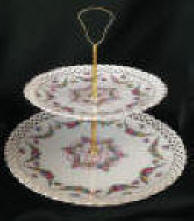 |
 |
c.1928-1933 | Chereesca contributed pictures of her two-tiered serving trays in what appears to be a version of the Bridal Chain pattern. |
|
Bridal Rose Karen also shared with us a picture of an event she recently hosted using her china. A beautiful presentation!! |
1954 1950's |
The red Schumann mark on this vase, as well as the blue 1954 E &R importers mark. takes this pattern back to the mid-1950's. | Joe Moore in St. Louis, Missouri, contributed pictures of his Bridal Rose Vase that belonged to his grandparents. Joe lived with them as a child in Oklahoma City. The vase sat on their mantle for as far back as he can remember (Joe was born in 1953). | |
|
The red Schumann mark on this plate is further documentation of this pattern going back to the 1950's. Notice that it does not have the importer's mark. |
Karen Brackman in Massachusetts has a complete set of this beautiful china. It was a house warming gift in October 1960 for her Mother from a couple who lived in Boston. |
|||
|
Original Bridal Rose |
|
The red copyright notice infers a beginning date of 1960 for "Original Bridal Rose" |
c.1960-1967 The Schumann mark to the immediate left is another version used for Bridal Rose. It was submitted by Jenny Klapp in Pickering, Ontario, Canada. The blue seal may be an exporter's mark. |
Not in either 1961 or 1966 Ebeling & Reuss brochures. John and Pat Murray of Brockville, Ontario, Canada, contributed the pictures at the far left and told us they purchased this set from a fine china shop in Brockville in 1967 when they were married. M. Grant of New Brunswick, Canada, inherited a set from her parents who purchased it in the 1960's. It has the same marks as those at the far left. |
|
China Blau |
Bavaria Schumann Arzberg China Blau |
c.1940's | Not in either 1961 or 1966 Ebeling & Reuss
brochures. Linda Stoddard in Indiana sent these pictures of her China Blau coffee pot. Linda received the pot from a friend whose mother brought it to America from Germany in the 1940's. |
|
|
"Blue" Unknown |
1950's |
J.C.H. in the Netherlands submitted pictures of this pretty blue coffee set that originally belonged to her sister. This posting is in honor and memory of her sister, LSD, also of the Netherlands. |
||
| "Blue Dutch" Unknown |
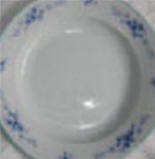 |
The letters in this Schumann mark are slightly different from the others because of the flair of the letters. |
c.1930's-50's | Arthur and Carla Norton in Newtonmore, Scotland, sent pictures of a plate that has been in Carla's family as far back as she can remember, at least to the 1950's. Carla and her family are Dutch, and the plate was most likely made for the European market only and specifically for the Dutch and similar markets, since it is most definitely in that style. |
|
Early Chateau |
Unusual square design, Reticulated Rim |
Word scratched off from top of mark, probably the word Dresden Schumann Bavaria
The city of Arzberg granted Carl Schumann permission to use their city's coat of arms (the lion and shield) somewhere around 1900. My belief is that he would have most surely started using it immediately.
|
c.1900 |
Forerunner and early version of what came to be called
"Chateau Dresden Flowers." These pictures were
contributed by Linda Melady
in PIcton, Ontario, Canada. Linda found this beautiful tea cake stand at a local thrift store. She purchased it for her aunt who is an exceptional and ardent baker of all kinds of sweets, pies, and squares and who regularly hosts her lady friends at weekly bridge. After Linda received my response to her inquiry, she responded back as follows" "......What a thrill to discover that this was such an old treasure. I gave the tea cake stand to my aunt this afternoon, along with a copy of your e-mail which so clearly outlined its history. She was thrilled. We had gone there for coffee and sweets, so of course we moved all her lovely tarts, etc., into the tea cake stand. She loved it and is planning to use it next week when she has the ladies in for bridge. I'm just happy this very beautiful old porcelain piece will be used and loved and not boxed up in someone's attic......" Thank you Linda for sharing your family story. |
|
Early Chateau |
Unusual square design, Reticulated Rim |
Bavaria Schumann Dresdner Art
Dresdner Art was a product line name used 1928-1933 for the sole purpose of distributing Schumann products to the American market. |
c. 1928-1933 | Forerunner and early version of what came to be called "Chateau Dresden Flowers." These pictures were contributed by Ginny in Canada who inherited this compote from her mother, who likewise inherited it from her mother in the early 1930's. It is unknown as to when Ginny's grandmother actually acquired it. |
|
Early Chateau |
 |
1924-1933
|
Pictures contributed by
P.B. in Smithville, Oklahoma. This plate was apparently made especially for hanging on the wall for decorative purposes only. As can be seen in the picture, it had a built-in hangar on the back. |
|
|
Early Chateau "The McKnight Collection" |
|
1924-1933 |
Jim McKnight of Schuylerville, New York, (a recently retired Associated Press photographer), shared his family history and pictures of his beautiful "Chateau" collection that originally belonged to his grandparents who were married in Memphis, Tennessee, in 1905. |
|
|
Jim's grandmother was the daughter of the Mayor of Memphis and received cut glass and china as wedding gifts. Jim has wondered if these were wedding gifts to his grandparents, and I originally thought that might be possible. Since that time, I have learned that these particular old blue lion marks are from the 1920's-30's. Another viewer has told us that she has a set of "Chateau" that her husband's grandparents received for their wedding in 1901. Those are marked with a much older lion version. |
||||
|
Early Chateau
|
1924-1933 |
This is apparently the forerunner of what came to be called Chateau. Notice the abundance of floral decorations on the reticulated rim. Old blue mark used beginning c.1924. |
||
|
Chateau forerunner similar except square |
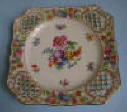 |
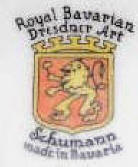 |
c.1930's |
Pictures contributed by B. J. in Virginia |
|
Chateau Dresden |
Assorted Marks including this one from 1945-49 |
c.1920's or earlier, though not yet named that early. I don't know if it was actually named Chateau before or just after World War II. c. early 1960's |
This version with the heavily decorated rim is found in the 1961 Ebeling & Reuss brochure, but NOT in the 1966 brochure. It appears that the Chateau pattern must have ceased sometime between 1961 and 1966. |
|
| Children | ||||
|
Children Jack and Jill |
 |
 |
1957 | A
Viewer sent these pictures of a
cup and saucer her son received as a gift in
1957. Another viewer sent the plate that appears to be a match. |
 |
||||
 |
||||
|
Children Jack and Jill |
 |
c.1920's | Another Jack and Jill child's plate that belonged to the grandmother of Nikkie M. Majors in Rio Vista, California. Grandmother was born September 25, 1926. This was her baby dish. She passed away on August 24, 1998. This posting is in honor of her memory. | |
|
Children Winnie-the-Pooh |
 A. A. Milne, Winnie-the-Pooh, Made in Germany, Richard G. Krueger, N.Y., Fully Protected U.S. Pat. Off., Stephen Slesinger Inc. |
c.1920's | This
child's bowl is another example of the wide variety of items produced
by Schumann. Pictures are courtesy of an Anonymous Contributor in St. Louis, Missouri, USA |
|
|
Children Winnie-the-Pooh, Divided Dish, Assorted Scenes. |
 |
c.1920's | Pictures contributed by Amanda Ruffner in Glen Burnie, Maryland. Amanda and her husband found this in the far back of the attic of their recently purchased house. | |
|
Another Winnie-the-Pooh version with an assortment of scenes called Piglet's Dream, Pooh's Dream, and They Plan to Trap a Heffalum. Schumann mark is exactly like the one for the bowl shown above. |
||||
|
Children Winnie-the-Pooh |
 |
 |
1931 | Pictures contributed by P. C. in St. Louis, Missouri. This child's dish is known to have been a 1931 gift to a family member. |
|
Children Child's Tea Set, Woodland Creatures |
c.1940's-early 50's
|
Bobbie in Hamilton, Georgia, contributed pictures of this child's tea set which she purchased several years ago for her granddaughter. Unfortunately, the teapot was missing. Each piece is different, with hand painted woodland creatures. This is the first child's tea set by Schumann that I've seen and believe it to be from the 1940's-early 50's. |
||
|
End of Children |
||||
|
Chintz Style |
see Coquette |
also see Blue Chintz |
||
|
Cobalt Rose Similar to Unknown Echt Cobalt in the Echt Cobalt section below |
c. early 1960's |
Found in 1961 Ebeling & Reuss brochure, but missing from 1966 printing. L.B. in Indiana contributed these pictures (be sure to read footnote 40 above) |
||
|
Cobalt Rose similar |
|
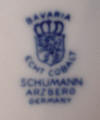 |
c. early 1960's | Anne Groark in Valparaiso, Indiana, was born in Bavaria Germany, but as an infant moved with her parents to the U.S. They visited her grandmother back in Germany on numerous occasions. When Grandmother passed away, Anne came into possession of this beautiful vase. |
| Cobalt Rose similar |
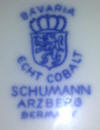 |
c.1960's-70's | Donna Maine Smith of Hudson, Florida, received this set from a neighbor, who in turn had received it from her German mother and grandmother. The grandmother owned a nice restaurant in Germany, but this set was in her private collection and used only on special occasions. Grandmother gave the set to her daughter (the neighbor's mother) when she moved to the U.S. around 1973 or so. | |
|
"Columbine Flowers" |
 |
c. 1924 | Another old and unknown Schumann pattern. Pictures contributed by Jennifer Ralston in Bailey, Colorado. These beautiful plates belonged to her grandmother. | |
|
Barbara Collins of Longmont, Colorado, has helped me to identify this flower as being the Columbine Flower which is the state flower of Colorado. |
||||
|
Coquette |
no picture |
no picture |
1952-Pre-1961 |
Found in a 1952 E&R ad, but Not in either 1961 or 1966 Ebeling & Reuss brochures. |
| "Coquette"
Chintz Style similar |
similar to plate below |
|
c.1920's | Kathy Vesevick of Lombard, Illinois, inherited this vase from her mother and contributed these pictures. |
|
"Coquette" Chintz Style similar
|
 |
c.1920's | Pictures contributed by M.G. | |
|
|
||||
|
"Coquette" Chintz Style similar |
 |
1924 | Diane Fortune of Manchester, England, sent these pictures of a plate she was given a very long time ago. It also has the particular old blue mark that is believed to have been used beginning in 1924. | |
|
"Coquette"
Chintz Style similar |
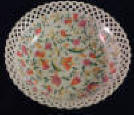 |
 |
c.1930's | Contributed by B.A. |
|
"Coquette"
Chintz Style similar |
 |
 #6E Lion |
c.1930's | Contributed by J.C. in Kansas |
|
"Coquette"
Chintz Style similar
|
Incised numbers on the back. |
Design 13 Schu |
1945-1949 The years following WWII when Bavaria was occupied by the U.S. Military. |
Jim Lambert in California
contributed pictures of his pretty platter with
its interesting marks. The US Standard
Design 23 Schu was probably added for export purposes. In the absence of an actual pattern name other than the design number, I've put it in this Chintz Style section because of the tiny flowers. |
|
"Coquette"
Chintz Style similar |
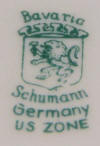 |
1945-1949 The years following WWII when Bavaria was occupied by the U.S. Military. |
Adela Wynn of Fairfax, Virginia, shared pictures of her teacup set which she found at a local thrift store. | |
|
"Coquette" Chintz Style similar |
 |
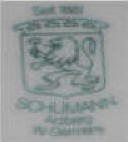 |
1981-1990 |
Annette Leach in Essex, England,
bought this beautiful plate brand new in
Debenhams Department Store in
Essex
in the late 1980's
or early 1990's. She paid
the equivalent of $76 U. S.
dollars
for it.
No pattern name is on it. |
|
Craquele |
These same red marks have also been found with U.S. Zone included which was for the years 1945-49. See next vase below. |
1950's |
LBU
of Caddo Mills, Texas, sent these pictures of her
Schumann Craquele vases her
mother found in an antique shop in East Texas in the 1980's. The Schumann factory produced a Craquele line of vases in the 1950's, at the height of the factory's production. The old blue mark was apparently carried forward as these red versions. |
|
|
Craquele Schumann Porzellan-Craquele |
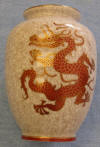 |
Germany US Zone mark paired with a red lion Handpainted, Handmalerei (signature is unreadable for me) Please e-mail if you can read the signature. The numbers are probably a pattern number. 0/101/214G |
1945-49 | Pictures submitted by kway. |
|
Craquele Diamant Craquele |
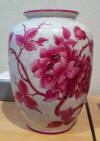 |
 |
1950's | J.M. was given this vase after World War II while he was still stationed in Germany. |
|
Craquele Diamant Craquele |
 |
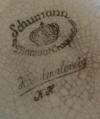 |
1950's | Nancy contributed pictures of her Craquele vase. |
|
"Daisies" |
U.S. Zone stamp added to original mark |
c.1945-1949although actual date of manufacture was likely earlier | Not in either the 1961 or 1966 Ebeling and Reuss
brochures. Barbara
Steffens of Benton City, Washington, submitted these pictures. The circa dates are based on the U. S. Zone part of the mark. |
|
| Dauphine |

|

|
c.1960's-70's |
Vicki Simms of Melbourne, Florida, purchased this set from a jewelry store in Indiana in 1970. |
|
"Dragon" |
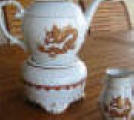 |
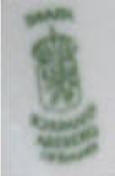 |
c.1960's-70's | V.K. in Germany sent pictures of this teapot which her sister purchased in Germany in the 1970's. |
|
Dresden Early Unknown |
Notice the old style of reticulation. |
Old blue used beginning in 1924. |
1924 | This plate was actually signed and dated 1924 on the back which was the first year this particular old blue mark is believed to have been used (page 276, Keramik-Marken Lexicon, 1885-1935). |
|
Dresden Early Unknown |
Old style of reticulation |
 |
c. 1924 | Chuck Collins, Ferndale, Washington, contributed these pictures of yet another version of an unknown Schumann pattern using the Dresden Flowers. |
|
Dresden Early Unknown |
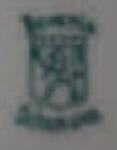 |
c.1930's | Shirley in Pineville, North Carolina, contributed pictures of this bowl that belonged to her grandmother or great grandmother and knows it goes back to before World War II. | |
|
Dresden Early Unknown |
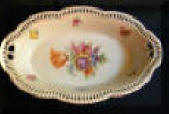 |
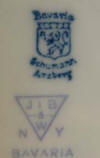 |
c.1920's |
Carol Winters of Cary, North Carolina,
inherited this beautiful Dresden Flowers bread basket from her mother who
was married in 1928 and lived in New York City where she would have
received/acquired it. The triangular mark is most likely that of a New York importer. |
|
Dresden Early Unknown |
c.1920's or earlier |
Linda Madore
inherited this beautiful cake set from her grandmother. |
||
|
Dresden Early Unknown |
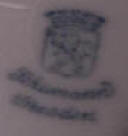 |
1920's-30's | This beautiful old bread basket has the particular old blue mark that is believed to have been used beginning in 1924. | |
|
Dresden Early Unknown |
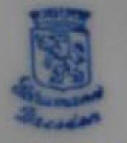 |
1920's-30's | Pictures
contributed by Ronna West of Victoria, British
Columbia, Canada. This plate seems to match our bowl shown above. |
|
|
Dresden Early Unknown |
 |
1930 | Faith Myers of Mantua, Ohio, contributed these pictures of this plate that was a wedding gift to her mother in 1930. | |
|
Dresden Early Unknown |
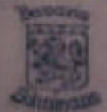 |
c. 1930's | Originally in my collection, but eventually sold. | |
|
Dresden Unknown |
 |
c.1940's-50's | Don Palmer of Arlington, Texas, shared his family story and pictures. His father was in the U.S. Army and stationed in Europe, mainly in Germany, in the 1950's. His parents collected many items during their stay there, including this beautiful set. The style of the plate and the mark fit the 1940's50's timeframe. The set was most likely new at the time of purchase by Mr. Palmer's parents. | |
|
Dresden Chateau |
see Chateau |
|||
|
Dresden Empress |
see Empress |
|||
|
Dresden Garland similar |
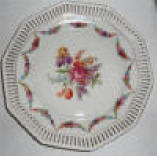 |
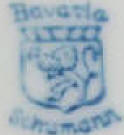 |
1920's | Mrs. D. L. of Toronto, Ontario, Canada, sent these pictures of a plate that is one of 10 plates her mother received in 1928 as a wedding gift. |
| Dresden Garland similar |
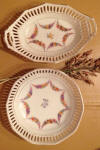 |
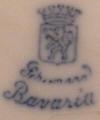 |
1924 |
From Gina who inherited these from a distant relative who was born in 1908. They may have been part of a set she received when she was married. |
| Dresden Garland similar |
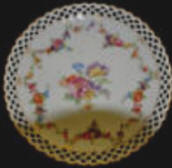 |
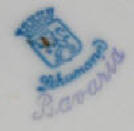 |
1924 | H.C. contributed pictures of her beautiful plate. |
| Dresden Garland similar |
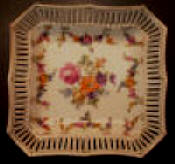 |
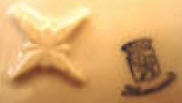 |
1924 | Jeanne Owens, Cornerstone Antiques, Lexington, Kentucky, found this beautiful bowl at a local estate sale. It appears to be an early version of the Dresden Garland pattern. The star on the backside is, I believe, meant to support the center. I've seen it on many bowls. If anyone has information otherwise, please let me know. |
| "Dresden Garland" similar |
With added "Lasso" design over the Garland |
 |
1924 |
Arlene Enz of Farmingville, New
York, found this beautiful cake plate
among her late mother-in-law's possessions. Notice that it has an added mark that says Dresden Bavaria, which I believe to be an exporter's mark, possibly for Schumann. |
| Dresden Garland similar |
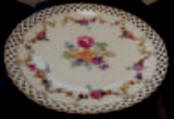 |
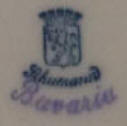 |
1924 ff. |
Same as 1930's version below except different center flower and an earlier mark. Second picture at left was contributed by a viewer who inherited the plate from her grandmother who is 90, who in turn received it from her grandmother. |
|
"Dresden Garland" similar |
 |
c. 1930's | My collection | |
|
Dresden Garland similar |
 |
c.1930's |
Another example of the square plate shape. Pictures contributed by J. S. of Dickson, Tennessee. |
|
|
Dresden Garland similar |
1945-49 |
Not in either the 1961 or 1966 Ebeling and Reuss brochures. Pictures contributed by E.H., USA |
||
|
Dresden Garland similar
|
1940's or earlier |
Patty of Dallas, Texas, sent pictures of this cup and saucer she found at a local antique show. The U. S. Zone mark is 1945-49, but was obviously added after-the-fact. Manufacturing time would have been earlier. |
||
|
|
||||
|
Dresden Garland |
c. 1950 |
Not in either the 1961 or 1966 Ebeling and Reuss brochures. Pattern name was added later, probably after the war. |
||
| Dresden Garland similar |
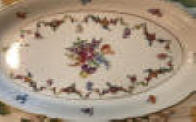 |
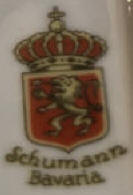 |
1957 | Myrna in Tucson, Arizona, contributed pictures of her parents' wedding china from 1957. They lived in Mexico at the time in the state of Sonora. |
|
"Dresden Gold" Unknown |
 |
c.1930's | Gerry and Karin Grossman of Turlock, California, shared pictures of their spectacular plates with the Dresden Flowers bouquets in the center and elaborate gold rims with pierced scalloped edges. There is a number on the backside which is 17063/?. The symbol after the slash is unreadable. The numbers may represent the artist or possibly the pattern. | |
|
"Dresden Gold" Unknown |
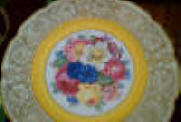 |
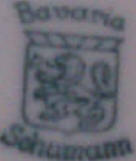 |
c.1930's | Jeff Nicholson in Dayton, Ohio, shared pictures of this beautiful plate, one of six owned by a church friend. |
|
"Dresden Pink" Unknown |
 |
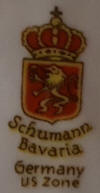 |
1945-49 | Contributed by Sue |
|
Early Dresden Line |
c.1920's |
Not in either the 1961 or 1966 Ebeling and Reuss brochures. Similar to Chateau, except the rim is not as heavily decorated. Read this interesting story below about this plate. |
||
|
"I am extremely interested in your Schumann research. Dad was in the Air Force and stationed at Rhein-Mein Air Force Base in Frankfurt, Germany, in late 1947. Mom was already expecting me and sailed by boat to Europe to join him in early 1948. She was only 21, an only child, had never been outside the South, and was truly pampered. After I was born, Dad was able to secure a very lovely three-story home which was much too big for just a wife and new baby. There was a tremendous housing shortage at that time, and the German government paid anyone who would allow German citizens to live with them. In turn, the citizens helped out in the household. That worked out beautifully for my Mother who was completely out of her element. As time went on, Dad decided to build a garage with additional housing over the garage. Upon digging the foundation for the garage, a large crate of china was discovered. Among the items in the crate was Schumann china, as well as some that looked like Schumann but with different markings. Unfortunately, there is very little left of what was found in the crate. We continued to be transferred for the next 18 years, including a second tour of duty in Bittburg, Germany (1955-1958). Many pieces were damaged or lost in moves, but the biggest devastation happened when we were in Anchorage, Alaska, and the Big Earthquake hit on Good Friday, 1964. I've had a very interesting life, and the family was always able to be with Dad wherever he was stationed. I currently live in Atlanta, Georgia, my parents home before and after the service." A.A., Atlanta, Georgia, USA |
||||
| Dresden Line |
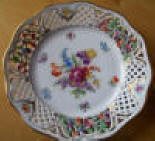 |
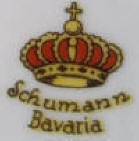 Floating Crown |
c.1940's-50's |
Leila Perlot
shared pictures of her Dresden Line
plates and their marks.
Plate One at the top has only the Floating Crown. which I believe to have been a Schumann decorating mark. Plate Two has only the second mark. |
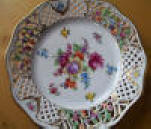 |
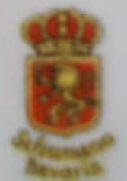 |
|||
| Dresden Line |
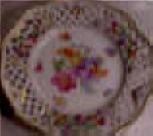 |
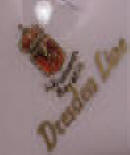 |
c.1940's-50's |
Not in either the 1961 or 1966 Ebeling and Reuss brochures. Similar to Chateau, except the rim is not as heavily decorated. See next section below for further information. |
|
Dresden Line or Chateau? |
Mark says Chateau, which I believe to be a mistake in marking. Whether a mistake or not, this is what has come to be called Dresden Line. |
Notice W. Germany is part of this mark. West Germany was established in 1949 and lasted until 1990 when Germany once again became reunited. |
1950's The blue E & R mark was used beginning in 1954. |
Notice that this is an exact match for the Dresden Line shown above. However, this mark says Chateau, which I believe to be a mistake in marking. It is unlike the traditional Chateau in that it has less decoration on the rim. The old 1961 E & R brochure shows Chateau as the traditional version with more decoration on the rim, not less. |
|
Dresden Line Arzberg Tradition 100 Year Anniversary |
This is a 100 year anniversary mark for Schumann. |
c.1981 |
We have in our possession an original box from Schumann which says 100 Jahre Schumann-Tradition. Inside the box is a whiteware plate (as pictured on outside of box). That plate has this mark, obviously an anniversary mark used in 1981, marking their 100 years in business. |
|
|
Dresden Line Arzberg Tradition 100 Year Anniversary |
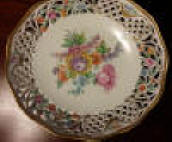 Bowl that once had a pedestal, making it originally a compote |
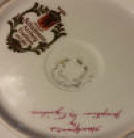 |
c.1981-1994 |
Contributed by cpeeler in Shelby, North Carolina. Handpainted and signed by Josephine M. Ogribene. Apparently a Schumann factory artist. |
|
"Dresden Posies" |
 |
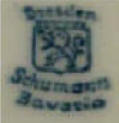 |
c.1900 |
F.L. in McAllen, Texas,
received this beautiful bowl (bread basket) in the year
2000 from a 90-year-old lady who
said it came from a set that originally belonged to her mother who was from
Europe.
She said the set was over 100 years old and was brought from Europe on one of the first boats that came to New York's Ellis Island around 1900. New York's Ellis Island reopened around 1900 after having been closed for a few years because of a fire. She had approximately 30 pieces and gave them away to various ones, including F.L. |
|
"Dresden Posies" |
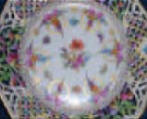 |
c.1924-30's |
These gorgeous plates are yet other examples of the very beautiful reticulated versions of the Dresden Flowers produced by Schumann. Laurie in Birmingham, Alabama, inherited these plates from her grandmother and graciously shared these pictures with us. |
|
| "Dresden Posies" |
The partial word is Bavaria. I've found several examples of Bavaria having been scratched out and believe it was because of Bavaria losing its independence to Germany in 1933 when Hitler took power. |
c.1924-30's | Al Cordes of San Antonio, Texas, shared pictures and his family story regarding this beautiful compote. He believes his grandmother may have brought it back from Germany when she revisited her homeland and relatives near Dresden in 1938. | |
| "Dresden Posies" |
 |
 |
c.1924 | Dave Harness of Kirklin, Indiana, inherited this saucer from his mother (born 1936). She had received it from her mother (born 1915) who likely received it from her mother. Both Dave's mother and grandmother were lifelong residents of Northern Indiana. |
|
"Dresden Posies" |
Notice the old style of reticulation. |
 |
c.1924 | Unusual old reticulated and floral design. |
| "Dresden Posies" |
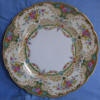 |
 |
1930's | Marilyn Wilcox received a set of this unknown pattern from her aunt who traveled around the world before World War II and brought home many different objects from many places. |
|
"Dresden Rose Cameo" |
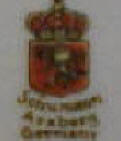 |
c.1950 or earlier |
Pictures contributed by Kay Melcher of Rancho
Cucamonga, California. This appears to be an excellent example of Schumann entering the U. S. by private means, thus bypassing E&R, the US importer. See story below. |
|
|
This seems to be a mixture of several other Schumann patterns. The cameo loops are similar to Rheinland; the floral garland in the center is like Dresden Garland; the intertwined gold rope is like one I've named Dresden Swags; the design of the mold is like Empress. The design of the mold suggests a 1940's-50's date, as does the interesting history of the original owner which is briefly summarized as follows: |
||||
|
This plate is one of a set originally owned by Aida who was born in Russia shortly before World War I. Her mother was Russian and her father was Polish. Her father was a high-ranking official in the Russian Army, but was killed when Aida was around 2 or 3. Aida said that Russia was very dangerous at that time and her mother decided it was time for them to flee the country. When Aida was around 4 or 5, her mother sewed all of the family jewels and money into the lining of her and her brother's coats. In the middle of the night, they all boarded a ship to Japan where they arrived safely, lived for a time, and eventually boarded a ship to the U.S. and settled in San Francisco. Aida finally ended up in Los Angeles where she lived for over fifty years. She was very wealthy and did a great deal of traveling, including many trips back to Europe. Aida's family believes she bought these plates on one of those European trips which most likely didn't start until after World War II; thus, the estimated date of 1940's-50's for the plates. Although Aida was of age in the 1930's and could have gone back to Europe prior to the start of World War II, it is highly unlikely that she did since Europe was still a very dangerous place and she was already safe in the U. S. After World War II and especially into the 1950's, many Americans did travel to Europe and bring back many treasures, including Schumann china from Germany. |
||||
|
"Dresden Rose Cameo" |
1945-49 |
Not in either the 1961 or 1966 Ebeling and Reuss brochures. Doug and Anna Milstead of Cleveland, Ohio, saved this beautiful plate from a pile of discarded items at a flea market. Good eyes and a treasure of a find!! |
||
|
Once again, this is a mixture of several patterns -- the highly decorated reticulated rim is like Dresden Chateau; the rose garland in the center is like Dresden Garland; the intertwined garland and gold rope is like what I am calling Dresden Swags; the little "rose cameo loops" are like the old Rheinland pattern. Until we learn differently, we are calling this one and the one just above it "Dresden Rose Cameo." |
||||
|
"Dresden Swags" |
1945-49 |
Not in either the 1961 or 1966 Ebeling and Reuss brochures. |
||
|
"Dresden Swags" Solid Rim |
 |
1945-49 |
Not in either the 1961 or 1966 Ebeling and Reuss brochures. Beth King of Madison, Wisconsin, contributed these pictures from her beautiful 16-place set that she inherited from her great aunt who lived in Tyler, Texas. |
|
|
"Dresden Swags"
|
|
 |
c.1950 | This appears to be the non-reticulated version of what we are calling "Dresden Swags." Jean in Alabama contributed these pictures of her ash trays. |
| Non-reticulated version of this pattern | ||||
|
"Dresden Wreaths" |
 |
c.1924 | One of the prettiest Schumann patterns -- a footed tea cake stand. Old blue mark used beginning c.1924. |
|
|
Dresdner Art China (product line name used for the American market) |
   |
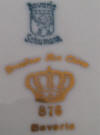 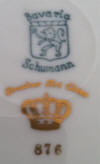 |
c.1920's-30's |
Connie Regan of Newburyport, MA, owns this beautiful luncheon set. It is from the Dresdner Art China product line made exclusively for the American market in the late 1920's to early 1930 's. |
| Dresdner Rose Goldvogel |
 |
c.1960's-70's |
Nadja Rosellen of Ketchum, Idaho,
shared these pictures ofher mother's coffee set which shepurchased in
Germany in the late
1960's or early
1970's. There is a rose motif on the insides of the cups and on the rims of the plates. Goldvogel translates to Gold Bird; thus, the pattern name, Dresdner Rose Goldvogel, as seen stamped in gold on the back. |
|
|
Echt Cobalt Echt Cobalt was a Schumann product line beginning around 1950. Echt is German for "genuine or true" and Inglasur is German for "glaze" -- thus, Genuine (or True) Cobalt Glaze. By the beginning of the 1970's, a new cobalt furnace was put into operation which resulted in a series of specialty plates for collectors. |
||||
|
Echt Cobalt |
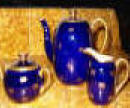 |
 |
c. 1950 | Carol
Sisson of Lompoc, California, contributed these
pictures of her tea set and its mark which she found at an estate sale in in
Santa Maria, California, in approximately 2002.
Kunstabteilung is German for art department. |
|
Echt Cobalt |
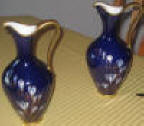 |
 |
c. 1950 | Sherry Eilbes of Hesperus, Colorado, received these ewers from her stepfather in the 1970's. They are hand painted and signed. Signatures are what appear to be Schussmourry and F. Wagner and W. Frank. (pictures of signatures on the way) |
| Echt Cobalt |
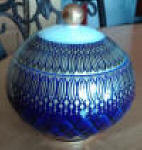 |
 #23HH Lion with added OTCO mark  Possibly a retailer/exporter in Bavaria Also found on JKW Bavaria pieces |
1970's |
Contributed by Cathi Berns in Missouri |
|
Echt Cobalt |
1970's |
Hope Alexander of HIgh Springs,
Florida, shared pictures of her Echt
Cobalt set she found at an estate sale in her area.
The set appears to have a European look about it and was most likely originally intended for the European market; but, as with many of the Schumann products, it eventually made its way to America. |
||
|
Echt Cobalt "Blue Roses" Similar to Cobalt Rose |
 |
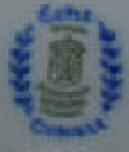 #23HH Lion |
1970's |
Ray Potter in Houston, Texas, submitted
pictures of his Echt Cobalt
pattern and its mark (see Footnote 41 above).
|
|
Echt Cobalt "Blue Roses" Similar to Cobalt Rose |
One of the 100-Year Anniversary marks for Schumann. They started business in 1881 and celebrated 100 years in 1981. |
1981 | N.M. in the U.K. purchased this set in Finland in 1982. | |
|
Echt Cobalt "Blue Dresden" |
 The style of the leaning rosebud finial on the lid is the "newer" style. |
 |
c.1970's-80's for the body style c.Pre-1961 for the flower pattern |
Diana Kindred of Nashville, Tennessee, contributed these pictures of her coffee pot that she purchased in 1980 at a flea market in West Berlin Germany when she was there as an exchange student. Though the body style of the coffee pot is "newer", the blue floral pattern matches dishes that her German grandmother brought with her when she came to the USA in 1961. |
|
Echt Cobalt "Blue Dresden" |
 |
 |
c.1979 | This coffee service is owned by Valerie who received it brand new as an engagement gift in 1979 when she was living and working in Wiesbaden Germany. |
|
Echt Cobalt |
 Notice later style of sugar bowl (leaning rosebud finial) |
 |
c.1970's-1980's | A. of Germany found these dishes in a thrift shop in Germany where her husband is/was stationed in the U. S. Army. I am dating these to c.1970's-80's based on the later style of the sugar bowl, as well as the overall style of the dishes. |
|
Echt Cobalt |
 |
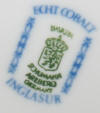 |
c.1970's-1980's | Susan Aarssen of Chathem, Ontario, Canada, found this beautiful Echt Cobalt set at a 1980's auction in Fort Myers, Florida. Great photography by Susan. "Thanks." |
|
Echt Cobalt "Fish" |
 |
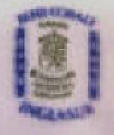 |
c.1970's | L. R. of Randall, Minnesota, contributed these pictures of yet another Echt Cobalt pattern. |
|
Echt Cobalt, Wolfgang Amadeus Mozart Limited Edition World Famous Composers series. |
 |
 |
c.1975 | S. Coleman in California received this plate as a gift from a friend who parents were born in Germany. They purchased it for her while on a visit to Germany in c.1975. S learned it is a part of the World Famous Composers series. |
|
Echt Cobalt Imperial Christmas Plate Limited Edition |
 |
 Mark in Cobalt Blue |
1980 | The 1980 date is on this plate. |
|
Echt Cobalt Vase |
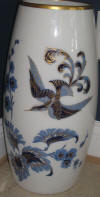 |
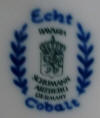 #23HH Lion |
1970's |
Contributed by
LMW in
Williamsburg, Virginia Purchased from a consignment store |
|
Echt Cobalt Vases |
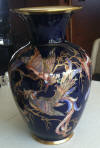 |
Kunstabteilung is German for art department. Handmalerei is German for hand painted. W. Reihl is the artist. 073/377 is possibly "73rd vase out of 377 produced" |
c.1950 |
Fabulously beautiful vases from E.C. in Highland Park, Illinois |
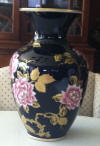 |
Zahlmann is the artist. 061/189 is possibly "61st vase out of 189 produced" |
|||
|
More Echt Cobalt |
See "Heirloom" | See "Blue Dresden" | ||
| End of Echt Cobalt | ||||
| Emerald Rose |
Dinner Plate Bread Plate Egg Cup |
Mark on Dinner Plate Mark on Bread Plate Mark on Egg Cup |
c.1940's-50's | Ruth Ryan of Hamilton, Massachusetts, contributed pictures of her beautiful set of what appears to be a version of the Emerald Rose pattern. |
|
Emerald Rose |
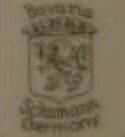 |
c.1950 - Pre-1961 | Not in either 1961 or 1966 Ebeling & Reuss
brochures. Paul Preuss, Queensbury, New York, contributed these pictures of china he inherited from his mother. The pattern appears to be a version of Emerald Rose. |
|
|
Empire Rose |
c.1950's - Pre-1961 |
Not in either 1961 or 1966 Ebeling & Reuss brochures. Cape May Antiques, Swainton, New Jersey, granted us permission to use their pictures of this pattern and mark (see footnote 37 above). |
||
|
Empress Forerunner Square
|
A forerunner of what eventually evolved into Empress |
c.1930's |
Not in either the 1961 or 1966 Ebeling and Reuss brochures. B. K. in Texas contributed these pictures. Notice unusual shape of plate.
|
|
|
Empress Forerunner Square |
A forerunner of what eventually evolved into Empress |
c.1930's |
Not in either the 1961 or 1966 Ebeling and Reuss brochures. B. K. in Texas contributed these pictures.
|
|
|
Empress Forerunner Square |
A forerunners of what eventually evolved into Empress |
 None Genuine Without This Trade Mark |
c.1930's |
Not in either the 1961 or 1966 Ebeling and Reuss
brochures.
B. K. in Texas contributed these pictures. Notice the unusual shape of the plate as well as the unusual added wording. |
|
Empress Forerunner |
 |
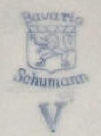 |
c.1930's |
Pictures contributed by Ron McMahon in Cookeville, Tennessee |
| A forerunner to what was eventually called Empress | ||||
|
Empress Forerunner |
A forerunner to what was eventually called Empress |
Pre-World War II |
Lynne Pasquale of Cascade, Montana, contributed these pictures from her set of old Dresden Flowers dishes that her grandmother gave to her mother at the time of her mother's marriage in 1942. Her grandmother owned the dishes prior to that time and it is unknown when they were actually purchased. Another viewer has confirmed she has this same pattern that belonged to her grandmother and they are definitely pre-WW II. |
|
|
Empress Forerunner Pre-Empress Old Schumann Dresden |
 Straight Edge Rim |
This red mark is the one on Sheila's 1938 set. Royal Bavarian Dresdner Art was apparently a product line. |
The Old Schumann Dresden (pre-Empress) has been found
with assorted old marks, including this one. Sheila's family history confirms the dating of this mark to the 1930's |
The only difference between
OLD Dresden and the
EMPRESS Dresden is the shape of the rim edges. The old is straight edge. The Empress is scalloped. |
|
Sheila Linton of New York City, shared with us her family history regarding her beautiful set of Schumann Dresden (straight edge) purchased brand new by her parents in 1938, and an Empress teapot purchased brand new in 1948 by Sheila and her brother for their mother. Click here for Sheila's beautiful essay and pictures of her Schumann |
||||
|
Yet more documentation of the
dating of this particular red mark |
||||
|
Empress Forerunner Pre-Empress Old Schumann Dresden |
 Straight Edge Rims |
 |
1928-30's | M.M. in Palm Desert, California, received this set with mixed marks from her mother-in-law in 1960, who in turn received them from her mother. It is believed by the family the set was purchased from Marshall Field's in Chicago. |
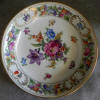 |
 |
|||
|
Empress Forerunner Pre-Empress Old Schumann Dresden |
 |
1928-30's | K.H. in Florida inherited these beautiful wedding dishes from her mother who was married in 1932 in New England. | |
|
Empress Forerunner Pre-Empress Old Schumann Dresden |
1920's-30's |
Martin Markovitz in New York
inherited this beautiful set of Old Schumann Dresden
that originally belonged to his great aunt. She had them for as far
back as he can remember. It is a mixed set of the
Old Schumann Dresden and the
later Empress, as well as the old
Garland pattern. He would like to sell the set. Click here for more information posted on 11/12/13. Assorted marks in the set |
||
|
Empress Forerunner Pre-Empress Old Schumann Dresden |
 |
 |
c.1924-30's | S.S. in Illinois inherited this beautiful set that is believed to have originally been owned by her great grandmother who was married to a department store buyer. There was another set of a different pattern known to have existed in the family. It is speculated that he may have made the purchases during one of his buying trips, possibly to New York or Chicago. |
|
Empress Early Early Empress Old Schumann Dresden Flowers |
Scalloped Edge Rim Upward Curve |
c.1924-30's |
The difference in this version of the Old Dresden from what came to be known as Empress is the upward curve of the rim. Otherwise, it is the same, including the scalloped edge rim. This actually qualifies to be called Old Empress or Early Empress |
|
|
Empress Dresden Scalloped Edge Rim |
Scalloped Edge Rim An old E&R ad dated 1951 states "... still the "Empress" in dinnerware patterns and truly Schumann's masterpiece." |
Assorted marks including this one above dated 1945-1949 and the one below known to be from the 1950's. |
Pre-1945-1980's |
Found in both 1961 and 1966 Ebeling & Reuss brochures. Known to have existed as late as the early 1980's. The last mark at the left (green) was sent to us by Rebecca Harris Emmitte of Weatherford, Texas, who has a set of Empress that came from her grandfather's jewelry store in Arlington, Texas, in the 1950's. The store closed in 1958, leaving no doubt of the 1950's dating of this green version of the Schumann crown mark. |
An old E&R ad dated 1949 describes Empress as being "Carl Schumann's famous old-world Dresden decoration -- never changed since it was first introduced generation ago. We believe this to be our finest pattern." Clearly, such comments referring to Empress as their "finest pattern" and "Schumann's masterpiece" could only be made about a pattern that had already been around long enough by the late 1940's to have earned that reputation. When it actually came to be called Empress is unknown. |
||||
|
Empress Dresden Scalloped Edge Rim |
|
|
1950's | Jack Chicone of Phoenix, Arizona, owns this beautiful set of Empress Dresden purchased by his father while on a business trip in Germany in 1960. |
|
Fortunately, Jack also has the original sales receipt dated February 7, 1960. The purchase was made from what appears to be a retail shop, Elisabeth Tolle in Wiesbaden, who specialized in glass and porcelain. It is interesting that she/they inaccurately described the set as Chateau, which is the reticulated (pierced rims) version of Empress and a separate pattern. That makes me believe more than ever that the pattern names were more for the American market and were not that familiar to the European market, at least at that time. |
||||
| Empress Dresden compatible |
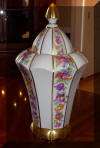 |
 |
1950's |
CMS of South Elgin, Illinois, inherited this beautiful urn from her grandmother who was originally from Germany and acquired it on one of her post-WW II visits back home. She only visited three times between the years 1928 and 1989. It is believed that she purchased this urn on her 1957 trip. |
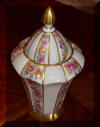 |
||||
|
"European Blue Daisies" |
Assorted marks in the set. Six different artists hand painted the various pieces. |
Artist signed = Frank
Artist signed = Gyefoe (sp?)
Hand Painted Artist signed = Maureen (?) |
c.1940's
Artist signed = Schott
Artist signed = Wohlrab
Artist signed = F. Zahluiaum (sp?) |
C.C. contributed pictures of this hand painted set that her father shipped to her grandmother during World War II. It is very similar to European Blue Trumpet shown below in this table. |
| "European Blue Trumpet Gentian Wild Flowers" |
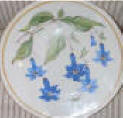 |
 |
Pre-1946 (actual date of manufacture would be pre-1946 and possibly pre-war) |
Not in either the 1961or 1966 Ebeling and Reuss
brochures. Dea Savitzky of Great Neck, New York, who submitted these pictures, received a complete set of these hand painted dishes as a wedding gift in 1946 from a relative who served in World War II and purchased the dishes new while in Germany after the war. |
| "European Blue Trumpet Gentian Wild Flowers" |
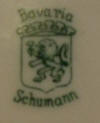 |
1940's | P.T. in Texas shared pictures of this beautiful demipot set that her father-in-law sent to his mother during the time he was stationed in Germany during World War II and just after the war. | |
| "European Blue Trumpet Gentian Wild Flowers |
Mark #1 on Plates and Soup Bowls
Mark #2 on Sauce Bowls Last picture is the sauce bowl. Notice that the mold design is different from the other pieces. It also has a later mark. They were no doubt added to the set at a later time. |
c.Post-war 1940's (Mark #1) and c.1950's-60's (Mark #2) |
Kristeen Snyder in Gilroy, California, contributed pictures of her beautiful European Blue Trumpet set. | |
| "European Blue Trumpet Gentian Wild Flowers" |
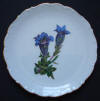 |
 |
1950's-1960's | Richard in Washington, D.C. contributed pictures of this European Blue Trumpet plate inherited from his mother. It is believed his uncle purchased it on a trip to Germany in the early 1960's. The style of the plate and the Schumann mark support this belief. |
| "European Purple Trumpet Gentian Wild Flowers" |
 |
 |
c.1940's-50's |
Arjen
and Annette de Kleine in Holland have a complete set of this
beautiful pattern which
came down to them through their family.
The set was probably made especially for the European market. |
| European Trumpets |
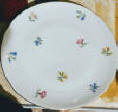    |
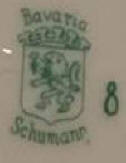 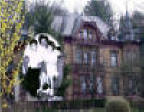 |
1940's-50's |
Cassandra Hall of Brookhaven, Mississippi,
shared her family story about this set of
Schumann with a variety of
European Trumpets. Cassandra's father, Karl was born in Heppenheim, West Germany, in 1947 to a woman named Margaret. Margaret eventually had another child she named Margrit. When Karl was 7, his mother was a live-in maid for a U.S. military family named Brister. At that time, both Karl and Margrit were living in an orphanage. When the Brister's left Germany to come to the U.S., Margaret allowed them to adopt Karl and Margrit. As poor as she was, Margaret sent with her children the china seen as left. You will also see at left the orphanage and as well as a picture of Margaret and her children, Karl and Margrit. |
|
Fancy Golds and Solid Colors (Refer to the "G" section way down this page for patterns that begin with the word "Gold") |
||||
|
|
||||
|
Fancy Golds and Solid Colors Green and Gold Roses |
Notice the old style of reticulation. |
Bavaria Schumann |
c. 1918 or earlier | B.A. of Berryton, Kansas, sent these pictures of her beautiful bowl which she found among miscellaneous glassware that she and other family members inherited from their mother. B.A. actually rescued it from being sold in a family garage sale. |
|
Fancy Golds and Solid Colors Black and Gold |
|
c.1920's | Jill in Worcester, Massachusetts, shared pictures of her beautiful set of Schumann that originally belonged to her grandparents who were married in Boston around 1922. It wasn't until after they were married that Grandfather went to an antique shop and found these beautiful dishes. | |
|
Fancy Golds and Solid Colors Black and Gold |
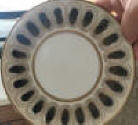 |
 |
c. 1950 |
MFG in Clarks Summit, Pennsylvania,
owns this beautiful dessert set. The C in the mark may be for a pattern or possibly a mold. There is some evidence that undecorated molds with these gold marks were sent to America and decorated for high-end department stores and galleries. See Blue Regency above for more information. |
|
Fancy Golds and Solid Colors Blue and Gold |
 |
 |
c. 1920's-30's | David Trudnak in Delaware recently purchased this beautiful plate at an auction and graciously shared it with me by way of these pictures. |
|
Fancy Golds and Solid Colors Blue and Gold Pattern #16764/F |
 Appears to have a pattern number. |
c. 1930's | Maria and Lou in Houston, Texas, who submitted these pictures have a set of 12 of these beautiful plates which are just over 11" diameter. They purchased them from an antique dealer in Houston in the early 1990's. | |
|
Fancy Golds and Solid Colors
Blue and Gold Art Deco |
 |
c. 1920's-30's | Bernt Johanson of Sweden contributed pictures of his coffee set that has been in his family at least 50 or 60 years that he knows. | |
|
Fancy Golds and Solid Colors
Blue and Gold |
 |
 |
c.1970's | Trine Kronborg of Denmark shared pictures of her footed compote with a beautiful gold rose in the center. |
|
Fancy Golds and Solid Colors Gold and White |
Floating Crown Schumann decorating mark |
1930's |
Vaso Moschoviti in Athens Greece
shared pictures of her coffee cups and saucers given to her by her
mother-in-law (born in 1929), who in turn had received them from her own
mother (who died in 1951). The set of cups and saucers were bought in
a small village called Vrochitsa,
near the city of Pyrgos-Peloponesse GREECE,
from a co-villager in exchange for olive oil during the German
occupation in 1940-1944.
They weren't new. During that time, people were selling/exchanging
anything they had in order to have food. This is such a good example of how important family history can be. Such vivid details of how and when and the circumstances of the cups and saucers changing hands makes it clear they were made prior to 1940. Thjat is also compatible with the use of the Schumann floating crown decorating mark. |
|
|
Fancy Golds and Solid Colors Gold and White |
 |
  |
1930's | Pictures contributed by M.E. |
|
Fancy Golds and Solid Colors Gold and White |
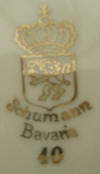 |
c.1950 | Bernie and Brenda in Canada, shared pictures of this beautiful set that has now been handed down to them (third generation). Brenda's mother is the last remaining relative that came from Germany in the 1950's. It is believed that this set most likely came at that time with Brenda's mother and grandmother. That would be compatible with the c.1950 time of manufacture. | |
|
Fancy Golds and Solid Colors Gold and Ivory |
 |
 |
1931 | C. M. sent pictures of this beautiful bowl that has been in her family for years. It appears to have been hand painted by E. D. Guhde in 1931. |
|
Fancy Golds and Solid Colors Green Lustre |
 Green whiteware mark Hand Painted, Artist signed, Dated 1932 |
1932 | Hand painted Lustreware. Artist signed and dated 1932. Probably an American china painter. Pictures contributed by Jennifer Gaumond of Pennsylvania. | |
|
Fancy Golds and Solid Colors Gold Pearl Lustre |
 |
 |
c.1925 | Hand painted Gold Pearl Lustreware. Artist signed M. Falsey Hoppel and dated 1925. Probably an American china painter. Pictures contributed by Lori Page in Illinois who found them at an estate sale. |
|
Fancy Golds and Solid Colors "Blue Lustre" |
 |
c.1920's-30's | Kathy C. of Georgia inherited this blue Lustreware bowl from her mother-in-law. Though not decorated with the Dresden Flowers, it was marked with the Dresden version of the Schumann mark. | |
|
Fancy Golds and Solid Colors Maroon and Gold |
 |
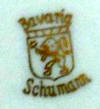 |
c.1920's | T.N. contributed pictures of this beautiful saucer. |
|
Fancy Golds and Solid Colors Maroon and Gold Pattern #25142 |
 |
c.1930's | E.G. of Cary, Illinois, inherited this beautiful set from his mother. The gold mark is similar to the next set below, but with a different arrangement of the words and with the added number which I believe to be a pattern number | |
|
Fancy Golds and Solid Colors Green and Gold |
 |
 |
c.1950 | |
|
Fancy Golds and Solid Colors Green and Gold |
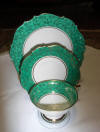 |
 Gold Mark |
c.1950 | Janice Taufana in Sydney, Australia, purchased this beautiful set at an antique fair while on holiday in Nice, France. |
|
Fancy Golds and Solid Colors Gold Florals |
Black, Gold, Pink |
 Gold Mark |
c.1930's | Janine Smith in Randallstown, Maryland, sent these pictures of her hand painted tea set with this gold mark. |
|
Fancy Golds and Solid Colors White Florals |
 Gold Mark |
c.1950 | Dave Steiner in Long Lake, Minnesota, contributed pictures of his Schumann snack sets in assorted colors. | |
|
Fancy Golds and Solid Colors Red and White |
c.1930's |
Esperanza Bergsma in The Netherlands received this lidded bowl from her mother-in-law who in turn had received it from her grandmother. |
||
|
Fancy Golds and Solid Colors Red and White |
|
c.1950 |
Pictures contributed by Joyce Noppers of Philadelphia, Pennsylvania. This is one of a pair of vanity jars Joyce purchased at an auction. |
|
|
Fancy Golds and Solid Colors Black and Gold
|
 |
 |
c.1945-49 | This gorgeous plate is owned by Vicki Wilkins in North Carolina. The Germany US Zone mark, which dates to 1945-49, was added by stamp and therefore not part of the original mark. Schumann stayed in production during the war, so this was probably a wartime plate that survived the war and was then distributed post-war. With its heavy and intricate gold work, it is the first of its kind that I've seen by Schumann. |
|
Fancy Golds and Solid Colors Black and Gold |
 |
c.1950 | Melissa of Danville, Pennsylvania, contributed pictures of this vanity jar which she remembers being used for candy during her childhood in the early 1960's. Melissa and her older sister believe it was probably a gift from an Austrian lady who visited their family in the 1950's. | |
|
Fancy Golds and Solid Colors Black and Pink |
Modern 1950's style |
 |
c.1950 | Pictures contributed by Suzanne Harris of Glenwood Springs, Colorado. Suzanne inherited this teacup from her grandmother. |
|
Fancy Golds and Solid Colors Blue and Pink |
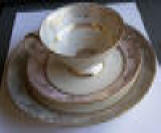 |
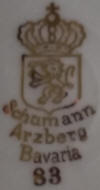 |
c.1950 | Bob Nichols shared pictures of these beautiful pieces of Schumann. I believe the 83 was a pattern number. |
|
Fancy Golds and Solid Colors Red and White |
Similar 1950's modern style as the black set just above. |
 |
c.1950 | Donna in Tampa Bay, Florida, shared pictures of her set which was given to her around 20 years ago. The set dates back to the early 1950's. |
|
Fancy Golds and Solid Colors Gray and Gold |
 |
c.1950 | Kristen Clark contributed pictures from a beautiful set originally owned by her Grandmother. | |
|
Since Grandmother had several sets of German china, her son-in-law may have been the source for them. Kristen believes he was in the military during (or perhaps just after) the war and possibly stationed in Germany. This would fit a c.1950 date or earlier for the set. |
||||
|
Fancy Golds and Solid Colors White and Gold |
c.1940's | Heidi Zajac of Niles, Illinois, sent pictures of this candy bowl that originally belonged to a German lady who said this was a gift to her father when she was a child. They lived in Bavaria, Germany, and the gift came from a family of wealth. | ||
 |
||||
|
Fancy Golds and Solid Colors Yellow and Gold
|
 |
 |
c.1930's | Pictures contributed by Kelly Grimsly, USA |
|
Figurals |
||||
|
Figurals Silhouette Minuet Dancers |
 #1E Lion Bavaria Schumann |
c.1910 | M.M. in Montreal, Canada, inherited this plate that originally belonged to an aunt who lived 1875-1959. It is believed that she received this plate as a wedding gift in 1910. | |
|
Figurals Silhouette Minuet Dancers |
 |
#3A Lion Bavaria Schumann |
c.1910 | The Rule Family shared pictures of their very old cake plate. It is only the second one I've seen with the Silhouette Minuet Dancers. |
| Figurals Pastoral |
 |
 |
c. pre-1920's | Contributed by William S. in Owensboro, Kentucky |
|
Figurals Courting Couples |
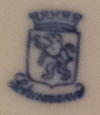 |
1920's | Sonja Chasteen of Springfield, Missouri, shared pictures of her dessert set with an interesting past. Sonja's German mother was walking one day in or near her Bavarian hometown, probably mid-late 1940's, and saw a woman disposing of some household items. Mom saw the plates and asked if she cold have them. Sonja inherited them just a few years ago. | |
|
Based on the style of reticulation (piercing) of these plates, they are also called "Ribbon Plates." Ribbon can be woven through the holes for hanging on the wall. I've learned from another viewer that practice was quite common in England. |
||||
|
Figurals Courting Couples |
 |
 |
1920's | The Tormay Family in Adelaide, Australia, shared pictures of their figural plate, which is a family heirloom from their parents. |
|
Figurals Mythological |
 |
1924 |
Alan submitted pictures of this bowl which he recently inherited.
|
|
|
Figurals Mythological |
 |
 |
1924 | Joe Manchester in the U.K. said this old plate was inherited by a friend of his whose relative passed away several years ago. |
|
This mythological scene is a transfer print duplication of original work by Angelica Kauffmann, a Swiss-Austrian painter who lived 1741 to 1807. Her work has been widely duplicated by various porcelain factories, decorating studios, and others. |
||||
|
Figurals Mythological 14768D |
 |
c.1920's | My Collection | |
Figurals Mythological |
Mark registered April 8, 1926 (Source: Danckert, pages 15 and 41) |
c.1920's-30's |
H. C. of Ontario, Canada,
recently inherited these beautiful plates from her
mother-in-law, who in turn originally inherited them from her grandmother,
Mary Elizabeth Moffat.
Read more below. |
|
|
Mary Elizabeth and Roland Moffat were married in 1910 and came into possession of these plates sometime after 1918 when they took a trip around the world. They were a very wealthy couple and frequently entertained with large dinner parties. Roland was a lawyer for General Motors. He was also the son of George Moffat, Jr., who was a member of Congress in New Brunswick, Canada. Mary Elizabeth was the daughter of one of the owners of CP Rail. It is believed there were originally 24 of these plates. They were divided among the children and have been handed down through the generations. |
||||
Figurals Mythological |
 |
c.1920's-30's | A. Sousa of Naples, Florida, sent pictures of her beautiful coffee set with its mythological scene. The added mark below the Schumann mark is an eagle with the name OTTO below it. OTTO was probably an importer/exporter/distributor/retailer -- one or all of those categories. | |
Figurals Mythological |
 |
 |
c.1920's-30's | My Collection |
Figurals Mythological |
 |
 |
c.1920's-30's | Cindy Corey Krysa of Deseronto, Ontario, Canada, inherited this beautiful old bread basket that originally belonged to her great grandmother who was Dutch and her husband who was German. |
|
Figurals Mythological |
 |
c.1920's-30's | Joseph and Jackie Ann Watkins of Marietta, Georgia, contributed pictures of their beautiful old bread basket found by Jackie in a local shop. | |
Figurals Mythological |
Early 1930's | Pictures contributed by PDE in California. PDE's mother purchased these in the early 1930's from Gump's in San Francisco. | ||
Figurals Mythological |
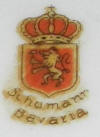 |
c.1940's |
Jose Albano of Uruguay, South America,
contributed pictures of his china with this beautiful mythological scene.
He wishes to sell the set and can be reached at jalbano@gmail.com. |
|
|
Figurals Victorian Lady |
Floating Crown A Schumann Decorating Mark |
c.1930's | Karen Conemac in Northridge, California, shared pictures of her figural plates. | |
|
Figurals Victorian Lady |
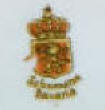 |
c.1920's |
Kenny Sugarman of Douglas, Arizona who submitted these pictures said his father was given this plate by an aunt and uncle who personally told him they had received it as a wedding gift. | |
|
Kenny's father is reasonably certain they were married in New York probably in the 1920's. He's basing that on the age of their oldest child. |
||||
|
Figurals Victorian Lady |
c.1920's |
In support of Kenny's information above, Barb VanderRoest of Amherst Nova Scotia Canada, contributed these pictures of her beautiful portrait plate which is the surviving one of a pair that originally belonged to Barb's grandmother in Nova Scotia. |
||
|
Barb's mother, born in 1920, remembers the plates as a very young child. She was told she broke the second plate when she was a toddler. Barb's plate is very similar to Kenny's and has a similar red crown mark with only the words "Schumann Bavaria." Her family history dates it back to the same era as Kenny's plate. |
||||
|
Figurals Victorian Lady |
c.1920's |
Rosanne Minor of Phoenix, Arizona, submitted pictures of her plate that she inherited from her grandmother. |
||
|
Figurals Victorian Lady
|
c.1930's-40's |
Philippe DesRosiers of Ottawa, Ontario., Canada, contributed pictures of these beautiful figural plates tht he inherited from his mother. |
||
|
Figurals Victorian Lady |
 |
 |
c.1940's-50's | Pictures from P.N. |
|
Figurals Victorian Lady |
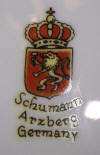 |
c.1950 | From Madelon, who sent pictures of this figural plate that her mother inherited from her great aunt. | |
|
Figurals Victorian Lady
|
 |
c.1950 | Osman Ciloglu of Turkey who submitted these pictures told us he inherited this 12" plate and 5 smaller matching ones from his grandmother who received them as a wedding gift c.1950. | |
|
Figurals Victorian Lady |
 |
 |
c.1950 | Cheri Shelnutt of N. E. Tennessee, inherited this plate from her grandmother. Cheri remembers seeing it as a child around 1960 in her grandmother's house. |
|
This Victorian Lady is the same as the green one above except they are each facing in opposite directions. The plate style of this one is rimless coupe, while the green one has a flat rim. The roses appear to be the same as those used in the Melrose or Meissen Rose patterns. |
||||
|
Figurals Horseback Rider and Maiden |
 |
c.1940's-50's | The Felsenthals in Memphis, Tennessee, contributed these pictures of a pair of plates Mr. Felsenthal received from his mother and grandmother. | |
|
Figurals Horseback Rider |
|
|
c.1950 | Pictures contributed by Graham in Australia, who has owned this bowl since 1950. |
|
Figurals Sheep Herder and Hunter |
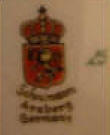 |
c.1950's | Pictures contributed by Kathy Klaus of North Haven, Connecticut. |
|
|
Figurals Angels |
 |
c.1940's-50's | Tim in Belgium found this plate in an old abandoned farm house. |
|
|
|
||||
|
Figurals Urchins Dice Players and Watermelon Eaters |
Dice Players Watermelon Eaters |
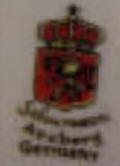 |
c.1950's | My Collection |
|
Figurals Urchins Grape Eaters |
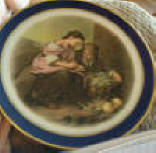 |
 |
1970's |
Contributed by Pamela Canham
in Medina, New York, who
found this plate among her mother's things. |
|
Figurals Betsy Ross Watteau "Scenerie of Love" |
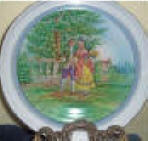 |
 |
1949 | Judith of Boston, Massachusetts, received this plate from a couple who purchased it years ago from an antique shop on Cape Cod in Massachusetts. It is actually stamped in gold on the back with the year 1949. It also has the added Watteau "Scenerie of Love" in gold. |
|
Jean- Antoine Watteau (1684-1721) was a French Rococo-era artist best known for producing romantic scenes like this one of "elaborately costumed ladies and gentlemen in outdoor settings." His original work has been widely copied and reproduced on porcelain and tapestries. This scene was frequently used on Schumann items and came at one point to be known as Betsy Ross (see below), obviously named for the American market. Whether the original painting of this particular scene was produced by Watteau himself or by an artist working in the "Style of Watteau", I don't know. In doing searches of Watteau's work, I have not been able to come up with this particular scene in his body of work. Until I do, I am assuming that Watteau's name on this Schumann plate was used in the generic sense, as one in his style. Please e-mail if you can add any additional information. |
||||
|
Figurals Betsy Ross |
 |
c. 1940-50's | Another version for "Betsy Ross" | |
|
Figurals Betsy Ross |
Two versions of same marks |
1930's |
Variation of mark used by the
Schumann China Corporation of New York City
who
was the U. S. distributor of Carl Schumann products (Source: Rontgen's
Marks on German, Bohemian, and Austrian Porcelain,
pages 171 and 456)
Pictures contributed by Mary Gavin of La Canada, California. |
|
|
Dresdner Art China and Schumann Bavaria were brand names used by the Schumann China Corporation in the late 1920's-1930's in America for marketing wares from the Schumann factory (Source: Page 280 of China and Glass in America 1880-1980 by Dallas Museum of Art). |
||||
|
Figurals Betsy Ross |
 |
 |
c.pre-1920's | Pictures contributed by Mary Stewart of Palm Desert, California. |
|
Figurals Betsy Ross Green Panels |
 |
c.pre-1920's | This is an older version of the green panel design. | |
|
Straight-edge Rim |
||||
|
Figurals Betsy Ross Yellow Panels |
 |
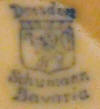 |
c.1920's |
Pictures contributed by Ron McMahon in Cookeville, Tennessee |
| Straight-edge Rim | ||||
|
Figurals Betsy Ross Green Panels |
 |
1930's | Pictures contributed by Ignez of Key Biscayne, Florida | |
|
Straight-edge Rim |
||||
|
Figurals Betsy Ross Blue, Pink, Green Panels, Solid Embossed Rims |
  |
 |
1930's | Pictures contributed by Carolyn Markie of Virginia. |
|
Figurals Betsy Ross |
A combination of Betsy Ross and Rheinland |
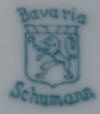 Mark registered April 8, 1926 (Source: Danckert, pages 15 and 41) |
c.1920's-1930's | Pictures contributed by G.F.M. |
|
Figurals Betsy Ross |
A combination of Betsy Ross and Rheinland |
 Mark registered April 8, 1926 (Source: Danckert, pages 15 and 41) |
c.1920's-1930's | Pictures contributed by J.M. |
|
Figurals Betsy Ross |
 |
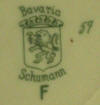 |
c.1940's | Pictures contributed by Peter Rohrlach in South Australia. |
|
Figurals Betsy Ross White Panels, Reticulated Rim
|
 |
 |
1941-42 | Pictures contributed by R. F. in Charlestown, Rhode Island. |
|
R. F.’s grandmother received these Betsy Ross pieces no later than 1941-42 in Chili. She immigrated from Spain to Chile in the early 1900’s and received these as a gift in the early 1940’s from friends in Germany. There was an enormous earthquake in Chili in 1939, and R. F.’s mother remembers these pieces arriving no more than two to three years after the earthquake. Manufacturing time of these baskets was probably 1930’s. This family story supports others that take these red marks back to the 1930’s. |
||||
|
Figurals Betsy Ross |
 |
 |
1945-1949 | Cynthia Young of Fort Worth, Texas, shared pictures of this small plate which she found at the estate sale of a couple from Germany. |
|
Figurals Betsy Ross Yellow Panels, Reticulated Rim |
 |
1930's | My Collection | |
|
Figurals Betsy Ross Green Panels, Reticulated Rim |
|
1945-1949 | My Collection | |
|
Figurals Betsy Ross Green, Solid Embossed Rim |
1940's |
My Collection | ||
|
Figurals Betsy Ross Green, Reticulated Rim |
 |
1940's | My Collection | |
|
Figurals Betsy Ross Pink, Reticulated Rim |
 |
1945-1949 | My Collection | |
|
Figurals Betsy Ross Pink, Reticulated Rim |
1940's |
My Collection |
||
|
Figurals Dainty Miss |
This "Scarlett O'Hara" style beauty is actually called "Dainty Miss" and is signed as such at the bottom right of the scene. |
c.1950's |
Diane Digirolamo in Lagrangeville, New York, shared pictures of this pretty teapot which she inherited from her father. He lived in Bronx, New York, and lived downstairs from an elderly lady who gave him several items in exchange for his helping her. She was from Germany and in her late 60's at the time. That was 20 years ago (1994). |
|
|
End of Figurals |
||||
|
Fish/Fowl/Animal |
||||
|
Fish/Fowl/Animal Australian Parrot/Parakeet Rosella |
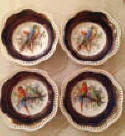 |
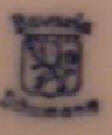 |
c.pre-1920's |
Pictures contributed by Liz Moriarty in Mount Gambier, South Australia |
|
Fish/Fowl/Animal Australian Parrot/Parakeet Rosella
|
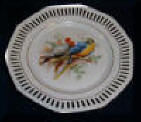 |
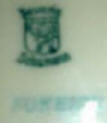 The added word "Foreign" as part of the mark infers that the plate was made by Schumann for export out of Germany. |
c.1920's |
Pictures contributed by Oliver in Northern Ireland. This plate has been in his family since 1960, although manufactured much earlier. |
|
Fish/Fowl/Animal Australian Parrot/Parakeet Rosella |
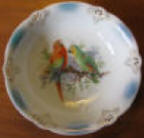 |
 |
c.1920's |
Pictures contributed by Yvan Robillard of Sherbrooke, Quebec, Canada |
|
Fish/Fowl/Animal Australian Parrot/Parakeet Rosella |
 |
c.1930's-50's?? | Pictures contributed by Pam Steele in Australia who received this bowl from her parents. It is unknown as to how and when they came to have it. | |
Fish/Fowl/Animal Australian Parrot/Parakeet Rosella or Birds of Paradise ?? Unsure |
 |
 |
c.pre-1920's |
Pictures contributed by Rick in USA Rick suggested Birds of Paradise |
|
Fish/Fowl/Animal Ducks |
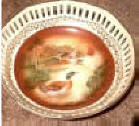 |
 |
c.pre-war 1930's |
Pictures contributed by Lawrence
in Melbourne, Australia. The US Zone mark is stamped on and not part of the original mark, leading me to believe it is most likely 1930's pre-war Germany. |
|
Fish/Fowl/Animal Ducks |
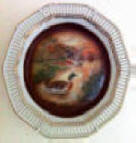 |
 |
1953 | Pictures courtesy of N.C. in Australia who received this plate as a wedding gift in 1953. |
|
Fish/Fowl/Animal "Pheasants" |
 |
Handpainted by W. Reihl, a Schumann factory artist. The numbers may be the artist number and a pattern number. "Granula" may be the pattern name, but not certain of any of that. |
c.1950 | Pictures contributed by G. Cohen in West Hartford, Connecticut. |
|
Fish/Fowl/Animal "Pheasants and Flowers" |
One of the oldest Lion marks |
c. pre-1920's |
L.B. in the Netherlands
sent pictures of her beautiful cake set.
The cake plate is 10 inches diameter. The 9 small plates are 5 1/2 inches diameter. |
|
|
Fish/Fowl/Animal "Pheasants and Flowers" |
 The green triangular mark may have been an importer, retailer, decorator (any or all of these) |
c. pre-1920's | Deb and Ken in Gaithersburg, Maryland, contributed pictures of this very beautiful plate from a cake set that originally belonged to Ken's grandmother. They believe she most likely found the set at a garage sale (her hobby) in the 1940's. (Footnote 63 above) | |
|
Fish/Fowl/Animal "Pheasants and Flowers"
|
c.1920's or earlier |
An Anonymous Viewer sent pictures of her beautiful plate which is yet another version of the Pheasants and Flowers. |
||
|
Fish/Fowl/Animal "Pheasants and Flowers" |
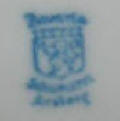 |
c.1920's or earlier | Another beautiful plate of Pheasants and Flowers sent by Sarah Bailey of Bakersville, North Carolina. | |
|
Fish/Fowl/Animal "Pheasants and Flowers" |
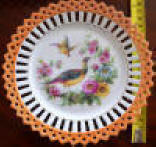 |
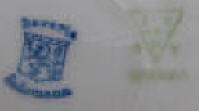 |
c.1922 |
J. Coelho in Providence, Rhode Island,
owns this plate that originally belonged to her grandmother who immigrated
to the U.S. from
Ireland in
1919-1920 and married in
1921 or 1922.
A cake set of these plates was given to J.'s grandmother as a wedding shower gift when she married in the early 1920's. J. believes they were most likely purchased at that time from one of the major department stores in Providence. |
|
Fish/Fowl/Animal Pheasants and Flowers
|
Maroon border with birds |
Old Blue Mark (picture unavailable) |
c.1920's Amy in Blue Bell, Pennsylvania, has this same pattern in green. Her set originally belonged to her grandparents who were married in 1924 in Philadelphia. |
S.F. in North Carolina sent these pictures from a large set of dishes that originally belonged to her grandparents. S.F.'s family members believe their grandfather or his family brought them here from Germany well before her mother was born in 1924. |
|
Fish/Fowl/Animal Pheasants and Woodpeckers??? |
I'm unsure of the identity of these birds. Please e-mail if you can help. |
c.1924-30's |
D.F. in Lincolnshire, England, shared pictures of his plates that he recently inherited. |
|
|
Fish/Fowl/Animal Swans |
 |
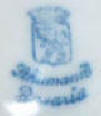 |
c.1924-30's
|
Pictures contributed by Sandra in East Sussex in the United Kingdom. |
|
Fish/Fowl/Animal Swans |
 |
 |
c.1950's-70's | Jamie Nolan in England contributed pictures of his beautiful Swan plate handed down to him through the family. |
|
End of Fish/Fowl/Animal |
||||
|
Forget-Me-Not Solid Rim |
Scalloped Edge on Rim |
Assorted Marks including this one from the 1960's-70's. |
c. 1940's-c. early 1970's |
Found in both 1961 and 1966 Ebeling & Reuss brochures. (Read footnote 21 above for an interesting Forget-Me-Not story. |
|
Mr. and Mrs. Atkins of South Carolina told me they purchased a brand set of FMN in 1980 in Cape Cod, Massachusetts (footnote 38 above). Manufacturing date, however, would have been back into the 1970's. |
||||
|
D.F. of Macon, Georgia, shared her family story about their Forget-Me-Not china: "My father was stationed in Germany in the late 1950's, and my mother purchased some of the Schumann Forget-Me-Not and Chalet china in the BX. After we shipped our household back to the U.S. and before we sold our car, we were riding around town and I noticed my mother's china being sold on the street corner in Wurzburg. I was only about six years old, but I remember my dad circled the block, and sure enough it was Mother's china. She got out of the car and bought all that she could. A family friend, who was also moving to Fort Benning, Georgia, in a few months, packed the china in her household shipment. Mother's china cabinet is full of Forget-Me-Not and Chalet which she purchased in Germany, but we have added to it over the years. We wondered why there are so many different type marks on the pieces, but thanks to your site, we now have a better understanding." |
||||
|
Karen
Milliorn in New Mexico shared her childhood
memories of her beautiful Schumann
china: "I have loved it since my sister and I, as eight and
five year olds, felt like "real grown-up ladies," as we had afternoon tea,
drinking from our Schumann Forget Me Not
teacups which our great aunt had given
|
||||
|
Forget-Me-Not Chalet Reticulated Rim |
Reticulated Rim |
Assorted Marks including this one. Orlik was a high-end shop on Fifth Avenue in NYC. |
c. 1945--c. early 1960's |
Found in 1961 Ebeling & Reuss brochure, but missing from 1966 printing. |
|
Forget-Me-Not German Version |
|
 |
1945-49 |
P.S. in Grand Rapids, Michigan,
sent pictures of a German version of a
Forget-Me-Not pattern. Her mother received a complete
set from P.S.'s uncle who served in
Germany in World War II. The added words in the mark appear to read US Stanobre Design Oe Schu, which infers a design made for or by Schumann. |
|
Forget-Me-Not German Version Vergiss-meinnicht German word for Forget-Me-Not |
1950's |
Stephanie of Lewisville, Texas, contributed these pictures of a lidded serving bowl that she found years ago in a Boston antique store. Obviously made for the European market. |
||
| Fruit | ||||
|
Fruit Strawberries |
 |
 This particular mark is one of the oldest Schumann Lion marks |
c.1900- (pre-1920) |
Warren Kundis of Aurora, Illinois, found this old dish in an antique shop in Aurora, which is only a short train ride from Chicago and Marshall Field's department store. Perhaps this dish was purchased there around 1900 or shortly thereafter. |
|
Fruit Grapes |
 |
c.pre-1920's | MW of Northern Virginia, USA contributed these pictures of her beautiful plate with its unusual octagon shape, pink rim, and luscious grapes. | |
|
Fruit Plums |
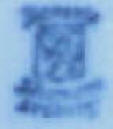 #2D Lion |
c.1920's or earlier | This fruit bowl with its older style of reticulation was given to Elsa Poitras of Toronto Ontario Canada by her grandmother.. | |
|
Fruit Apples and Pears |
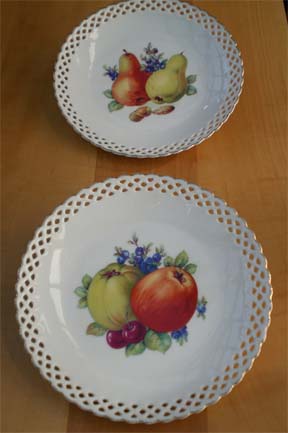 |
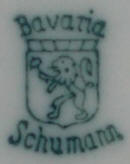 #6A Lion |
1930 |
Lilo Geiger of Roesrath, Germany,
contributed these pictures of fruit plates that her mother received as a
wedding gift in 1930. They are a match for the bowl shown below. |
|
Fruit Apples |
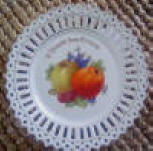 |
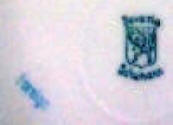 #8A Lion Foreign means it was made for export |
c.1920's-30's |
Contributed by Norman Allen
of Birmingham, UK Souvenir plate for Torquay, a seaside resort in the UK. The plate says "A Present From Torquay" |
|
Fruit Mixed |
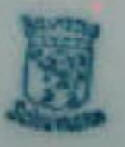 #6A Lion |
1930 | This
fruit bowl with its older style of reticulation was given to
Joyce Main of
Scotland by her mother many years ago. They are a match for the plates shown above that are known to be from 1930. |
|
|
Fruit Mixed |
 |
1924-1930's | Arne Bang Jensen in Norway submitted pictures of his fruit plate. | |
|
Fruit Strawberries and Grapes |
 |
 |
1924-1930's | Graham in the U.K. inherited these plates from his grandmother. |
|
Fruit "Fruit and Flowers" |
 |
1924-1930's | Pete in Maine contributed pictures of this beautiful plate from his set of 12 that originally belonged to his aunt who moved from New Jersey to Maine around 1940. It is assumed she owned the plates at that time. | |
|
Beautiful reticulated rim |
||||
|
Fruit Grapes |
 |
1940's | Tony in Australia recently acquired this bowl with the older style reticulation and the US ZONE added later with a stamp, inferring a manufacturing time of either during or before the war. | |
|
Fruit Grapes |
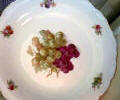 |
 |
c.1950's-70's | Pictures contributed by Marie Peterson. |
|
Fruit Grapes/Mixed |
|
|
c.1950's | Pictures contributed by Ginny Lewis who received two of these plates from her mother-in-law who believes her husband brought these back from Germany during his travels. |
|
Fruit Mixed |
 |
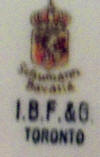 |
c.1940's-50's | Patricia Komacko in Weirton, West Virginia. purchased this bowl at a local yard sale. The Schumann mark is paired with this I. B. F. &G mark which is most likely that of an exporter/importer and/or retailer. |
|
Fruit Mixed |
 |
 |
1950's | This set of 6 fruit plates were a 1953 wedding gift to the parents of Robin Root of San Jose, California. They are actually seen in the wedding pictures of her parents. That information has helped to date this particular red mark to the 1950’s. |
|
Fruit Mixed |
c.1950's |
My Collection |
||
|
Fruit Mixed |
c.1950's |
My Collection |
||
|
Fruit Mixed |

|
 |
c.1950's | My Collection |
|
Fruit Mixed |
 |
1950's | My Collection | |
|
Fruit Mixed |
 |
c.1960's-70's |
Josh contributed pictures of his plate which is another version of mixed fruit with a later Schumann mark. |
|
|
Fruit Mixed |
 |
c.1950's |
Susan in Austin, Texas, inherited this plate from her father who served in WW II and passed away in 1963. He was interested in antiques at an early age and may have purchased this himself or received it from his mother. |
|
|
Fruit Apricots |
|
c.1960's | Mrs. Cassels of New Smyrna Beach, Florida, contributed these pictures of her plate in an unknown fruit pattern. | |
| End of Fruit | ||||
|
Garland Old |
Pattern name is conveniently included, as well as patent numbers. |
c.1930's |
|
|
|
Garland |
 U. S. Zone mark |
1945-1949 |
The U. S. Zone was during the years 1945-49 when Bavaria was occupied by the U.S. Military following World War II. |
|
| Garland |
 |
 |
Early 1950's | Mrs. HL in Florida contributed pictures of her set that was originally purchased in the early 1950's by her husband's grandmother. |
|
"Gold Band" (Flat Rim) |
Based on the mark and the style of the dishes, they are from 1950. |
c.1950 |
Elly Centeno in Orlando, Florida, sent this mark found on a set of dishes she purchased in 1992 from a couple who received them as a wedding gift. The exact date of their wedding is unclear. The couple lived all of their lives in New York on Long Island and then retired to Florida where Elly came to know them. |
|
|
"Gold Band" |
The rimless coupe style of the plate infers 1950's. |
Gold Mark The number 79 may be a pattern number. |
c. 1950 |
A viewer sent these pictures of a set brought to America from Germany after World War II. The mark is in gold and like those shown below. |
|
"Gold Band" |
Scalloped rim |
Gold Mark The number 91 may be a pattern name. |
c.1950 or earlier |
Not in either 1961 or 1966 Ebeling & Reuss brochures. A. in Virginia submitted these pictures of a tea set belonging to an elderly lady who told her the set was at least 50 years old, which as of this writing would be 1955 or earlier. I'm dating it to c.1950 or earlier based on the gold mark. |
|
Golden Elegance |
c. mid-1950's-1966 plus |
Found in both 1961 and 1966 Ebeling and Reuss brochures. Amy Jackson of Germantown, Maryland, submitted pictures of her Golden Elegance set that originally belonged to her Great Aunt Nell. Amy is interested in selling the set. If interested, please e-mail. |
||
| Golden Glow |
 Ruth Hall in Elizabethtown, North Carolina, contributed this gold version of the crown mark found on this teapot that appears to be the Golden Glow pattern |
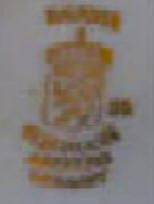 |
1950's |
Not in either 1961 or 1966 Ebeling & Reuss brochures. A "sister" pattern to the Platinum Glow. M.S.R. of Knoxville, Tennessee, told me that back in the early 1950's, her mother bought the Golden Glow and her aunt bought the Platinum Glow. She referred to them as "sister" patterns. |
| Golden Glow similar |
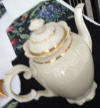 |
 |
1950 | Louise Westin in California contributed pictures of her coffee pot. |
|
"Gold Roses" |
 |
 |
c.1930's-40's | Maggie Kurtz of Winston-Salem North Carolina inherited a complete set of these beautiful dishes from her grandmother. Maggie's dad was stationed in Heidelberg, Germany just after World War II between 1947 and 1949 and purchased the set for his mother. They were most likely pre-war or wartime production. |
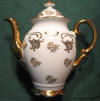 |
||||
|
Gold Scroll |
No Picture |
1940's or earlier | A viewer told me that her aunt has a complete set of this pattern that was sent to her by her husband during World War II. They are still in the original crates. |
|
|
Gold Scroll similar |
 |
c.1950 | A viewer in Dublin, Georgia, contributed these pictures of an unknown pattern that is possibly a forerunner of what became known as Gold Scroll. | |
|
Halo 88W |
c.1940's-1950 |
G. H, of Springfield, Missouri, sent pictures of a plate from a set of dishes that her uncle brought back from Germany in the late 1940's or early 1950's. The pattern appears to be the Halo pattern. The numbers are possibly the pattern number. The set has mixed marks. |
||
|
Halo 88W |
c.1950 |
C. Shook of Coppell, Texas, sent picture of her set which also appears to be the Halo pattern. Her grandmother bought it for her in 1958 when her dad was stationed in Bremerhaven, Germany. |
||
| Halo similar |
 |
 |
1950's-60's | S.C. shared pictures of an unknown pattern that appears similar to Halo, but not exactly. |
|
Heirloom (Blue Roses) The 1949 E &R ad describes this pattern as "A treasure in traditional dinnerware, this features a garland of roses in rich, two-toned blue underglaze....old classic shape with unusual scalloped edge highlighted in coin gold..." |
Marks are c.1945-50's |
Found in a 1949 E & R ad Also found in 1961 Ebeling & Reuss brochure, but missing from 1966 printing. Penny Seltzer of Redstone Arsenal, Alabama, inherited this beautiful set pictured at far left from her grandmother who bought it at an estate auction in 1970 in Pennsylvania. It originally belonged to a doctor who most likely purchased it brand new in the late 40's or sometime in the 50's. |
||
|
Heirloom (Blue Roses) |
 |
 |
1950's | Carolyn Markie of Virginia sent pictures of her Heirloom set shown below which includes the blue E & R mark. |
|
Heirloom Echt Cobalt |
 |
 |
c.1950 |
Appears to be Heirloom,
but has this gold Echt Schumann Cobalt
mark from around 1950. D.A. of Warrensville, North Carolina, purchased this set at an estate sale in his area. |
| "Japanese" |
 |
 |
c.pre-1920's | Sandy Show of Iowa sent pictures of this berry bowl set that belonged to her husband's family. They came over from Germany following WW I and settled on Long Island in New York. The set has a green import stamp that says JBW NY Bavaria, most likely a New York importer of Bavarian products. |
| Jewelry | ||||
| Jewelry |
 |
c.1920's-30's | D.S. of Columbia, South Carolina, contributed pictures of a pair of brooches her Dad brought back from Germany after World War II. This is our first evidence that Schumann made porcelain jewelry. | |
| Jewelry |
 |
 |
c.1920's-30's |
Another example of porcelain jewelry by Schumann. From my personal collection.
|
| Jewelry |
 |
c.1920's-30's | Jackie Clair of Jackson, Michigan sent pictures of this brooch that came to her from her mother, Olive Blank of Wayne, Michigan, (b.1914). Jackie believes that it must have originally belonged to her grandmother. | |
| Jewelry |
 |
 |
c.1920's-30's | Marsha Tokarczyk of Charleston, South Carolina, shared pictures of this beautiful brooch she recently acquired. |
| Jewelry |
 |
 |
c.1920's-30's |
Marion Weinreich of Hamburg, Germany,
shared these pictures from her vast collection of brooches. This one is handpainted. |
| Jewelry |
 |
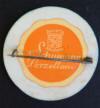 |
c.1920's-30's | Mary Bonde of Key Largo, Florida, shared pictures of this brooch that belonged to her aunt who passed away in 2006 at the age of 91. |
| Mary's aunt served in the Armed Forces during WW II and traveled throughout Europe collecting interesting things. This brooch was one of six that were pinned to a strip of brown paper and in a small plastic Johnson & Johnson First Aid container. She would often buy things to be given as gifts, which Mary suspects was her intent with these brooches. | ||||
| Jewelry |
 |
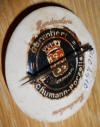 |
c.1920's-30's | Elle S. in Puglia, Italy, contributed pictures of her very pretty brooch that she bought several years ago. |
| Jewelry |
 Handpainted |
 Old Schumann mark in gold combined with a US Zone mark. Since US Zone dates to 1945-49, we are now believing that probably all the gold versions of the various Schumann marks are probably after World War II. |
c.1945-49 | Andrea Grez of Charleston, West Virginia, sent pictures of this porcelain brooch that belonged to her husband's grandmother, Lucy, who was the wife of a foreign diplomat who served as an ambasssador to the U.N. in the 1950's-60's. |
| Their only child (Andrea's husband's father) was a young doctor who served as a medic in Europe during World War II. Though not certain, it is speculated that he may have purchased the brooch for his mother while still in the military | ||||
| End of Jewelry | ||||
|
Kornblume (see "Blue Flowers" for a similar coffee pot) |
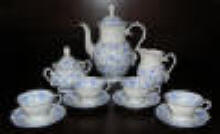 |
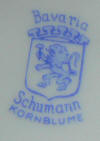 |
c.1940's | Contributed by A.Z. in Canada. |
|
La Vie En Rose similar |
 |
c. 1924 | Another old and unknown Schumann pattern. Pictures contributed by Graham Reynolds in Suffolk, England. | |
| La Vie En Rose |
 |
 |
c.1950 Carl II and Martin became friends in their younger days in Germany. It is believed by the family they met in pottery school in the 1920's and then traveled to America by boat. |
H.H. in New Jersey shared her family story about this boxed set of La Vie En Rose butter pats. They came directly from the Schumann factory around 1950 as a gift from Carl II to H.H.'s grandfather, Martin Stangl, the founder of Stangl Pottery. The Stangl family went back to Germany for vacation and to renew old acquaintances with Carl II. |
|
La Vie En Rose similar |
 |
c.1940's-50's | Brian Beach of Luguna, California, submitted these pictures and told us his mother purchased these dishes in the 1950's, possibly from an antique shop. | |
|
La Vie En Rose similar
|
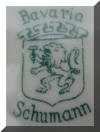 |
c.1940's | Shannon Dubuisson of Lewisville, North Carolina, sent pictures of this china that was purchased in Germany for her husband's grandmother. It is believed that the grandfather was in the military, possibly in WW II.
|
|
|
La Vie En Rose similar
|
 |
 |
c.1950's-60's | Brenda contributed pictures from her set of dishes that originally belonged to her great grandparents. Her great grandfather was from Germany and may have brought them back on one of his trips. |
| Lilacs |
 |
 |
c. 1946-49 | George Orme in Gladstone, Oregon, inherited this beautiful set from his mother. His uncle was in Germany from 1946-1949 in the Air Force, based in Erding. He sent this china home or brought it back with him. This appears to be an early version of what came to be called Lilac Time in the mid-1950's, which has the same Lilacs, but different shape molds. |
| Lilacs |
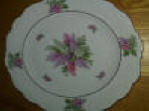  |
 |
c. 1950 | This appears to be an early version of what came to be called Lilac Time in the mid-1950's, which has the same Lilacs, but different shape molds. |
|
Lilacs |
c. 1950 |
Possibly a forerunner of what became Lilac Time. |
||
|
Lilac Time |
Scalloped Rim Coupe Shape |
 |
1956-Pre-1961 | Found
in a 1956 E &R ad which described
it as an appealing NEW decoration by Schumann. It is, however, Not in either 1961 or 1966 Ebeling & Reuss brochures. |
|
|
||||
|
Love Story |
 |
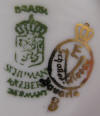 |
c.1950's-70's |
A. F. in Maple Ridge B.C. Canada
owns this beautiful demitasse set decorated in the
Love Story pattern.
The gold E. Schaller Wieseau Bavaria is most likely a decorator's mark. I have no information on them. |
| Love Story |
Fragonard signature on a square reticulated dish from Schumann. This is one of the commonly reproduced scenes used by various porcelain manufacturers, including Schumann and JKW. It has become known as the Love Story pattern. Fragonard was a French Rococo-era artist who lived 1702-1806. His work has been widely reproduced. |
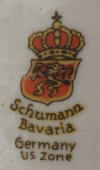 |
1945-49 | Pictures contributed by A.D., USA |
| Lustreware |
 |
 |
c.1920's-30's | H. T. in Texas inherited this sugar bowl from her grandmother who was born approximately 1917 based on the belief that she was around 85 when she passed away in 2002. |
|
She grew up on the Swiss-Italian border and remembers as a little girl seeing German soldiers walking through her village. She married at a very young age and came to America through Ellis Island when she was around 14, c.1931. It is believed she brought this sugar bowl with her at the time. It is the only known surviving piece of anything else she may have had. |
||||
|
Lustreware |
 |
1930's | Marion Weinrich, my good friend in Germany, contributed these pictures of her sleek and pretty teapot. | |
| Lustreware Florals |
|
|
c.1920's or older | MK in Pennsylvania found this tea set at a barn sale in St. Charles, Illinois, in late 1970's-early 1980's. |
|
Mandarin |

|
1940's-50's
It should be noted that this set and the 1954 E&R ad show this version of Mandarin with the rounded knobs on the lids. Later versions have been found with flat knobs. |
Found in a 1954 E&R ad. It is, however, NOT in either 1961 or 1966 Ebeling & Reuss brochures. Deane Williams in Canada inherited this set from her grandparents who owned a hotel located in the eastern portion of Germany until it was eventually confiscated by the communists. This Mandarin set was Deane's grandmother's good coffee set and used only for Sunday coffee.
|
|
|
At the end of World War II in 1945, Germany was divided into four occupied zones, with Russia occupying the east. It was referred to as the Soviet Zone. The other zones were the British Zone in the northwest; the U.S. Zone in the southwest; and the French Zone, also in the southwest. In late 1949, the occupations ended, and Germany was officially divided into two states called East Germany and West Germany, with Russia taking control of East Germany, thereby making it a communist state. At some point during those years, Deane's grandparents' hotel was confiscated by the communists, after which the grandparents fled to the city of Bonn in West Germany. It is during their time in Bonn that Deane believes they may have purchased this set, and perhaps directly from the Schumann factory, also in West Germany, in the city of Arzberg in Bavaria. In 1953, the family moved from Bonn to Canada. |
||||
|
Marie Antoinette |
 |
1920's-30's | M.J.M. in Evanston, Illinois, shared these pictures and her related family story about these beautiful Marie Antoinette plates that originally belonged to her grandparents. | |
|
M.J.M's grandparents received or acquired them in the 1920's-30's in New York City where they lived. The exact occasion is uncertain, but there are two possibilities: (1) 1924 when they celebrated their 50th Anniversary on October 10 of that year; or (2) 1934 when grandfather was appointed a Justice in the New York Superior Court. |
||||
|
Meissen Rose |
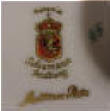 |
1950's | Not in either 1961 or 1966 Ebeling & Reuss brochures. | |
|
Melrose |
c.1950's | Not in either 1961 or 1966 Ebeling & Reuss brochures. Cathy Cain of Harrington, Delaware, contributed these pictures of her bowl in the Melrose pattern.
|
||
| Melrose | c.1950's | Jane Ann Riley of Charleston, West Virginia, received this beautiful plate as a wedding gift in 1954. Notice that it doesn't have the E & R importer's mark. Jane Ann recalls she was told at the time that it was purchased from an antique shop in West Virginia. | ||
|
Melrose |
 |
1940's possibly pre-1945 |
Daniel and Suzanne Wieghmink of N.B. Massachusetts sent pictures of this plate that originally belonged to Suzanne's grandmother. | |
|
Melrose |
 |
c. 1950's Not in either 1961 or 1966 Ebeling & Reuss brochures |
Kim and Bryan Sampson of New Zealand sent pictures of Kim's bowl which she inherited from her Mother. |
|
|
The bowl was given to Mother in the early 1970's by an elderly couple who lived across the road. Mother used to cook meals for them, and Kim remembers delivering the meals and then looking at all the beautiful china, most of which had come from Germany. |
||||
| Moon Rose similar |

|
 |
c.1940's-50's |
Pictures are from Anonymous Possibly a forerunner of Moon Rose |
|
Moon Rose |
c. 1956 to 1966 Found in a 1956 E&R ad Also found in both 1961 and 1966 Ebeling and Reuss brochures. |
Kathy Vallee of Lowell, Indiana, who submitted these pictures, found her Moon Rose dishes at a garage sale in 1989. They were hidden away in an old metal ice fishing box. Kathy's set entered the U. S. through the importer E & R as shown by the mark. |
||
|
Moon Rose |
|
The two marks at left do not have the E & R mark or the pattern name because they entered the U. S. through the military. This mixture of marks is indication of older inventory being carried forward and mixed with newer inventory to make complete sets. |
Mary Hoffman in New York has a set of Moon Rose that was purchased brand new for her by her cousin who was in the U. S. Army and stationed in Germany in 1959. Mary's set does not have the importer's mark, nor does it have the pattern name. |
|
|
"Moss Rose" (These remind me of the Moss Rose pattern by Rosenthal.)
|
Green mark |
1940's-50's | Mrs. B. of Queens, New York, contributed these pictures of a set she purchased approximately 20 years ago from a friend. The history of the set is unknown. |
|
| 1940's-50's | Karen Landry of Irving, Texas, contributed pictures of her Schumann set which she purchased from a consignment store in Lewisville, Texas, in 2007. They were consigned by an elderly lady in Highland Park, Texas. I am speculating that she most likely purchased the set new in the late 40's or early 50's. | |||
 |
1940's-50's | Jill and Peter Krokos of Parkville, Maryland, contributed pictures of Peter's late mother's china. Peter knows that she purchased the set from a store (name unknown) in Baltimore. It was in a store window that she passed by on her way home from work every day. She saved enough money to purchase it and said she paid around $85 for it. Peter said she used to love to shop at Charles Nusinov & Sons in Baltimore. Perhaps she purchased it from them. She married in the forties and probably purchased the china in the late 40's or early 50's. | ||
|
Mountain Rose |
c.1960's-70's |
Not in either 1961 or 1966 Ebeling & Reuss brochures. Kate Eckberg of Appleton, Wisconsin, found this vase on a shopping trip with her parents during the holidays. |
||
| Mountain Rose |
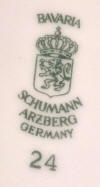 |
c.1970's-80 |
Wanda Fleming of Washington D.C.
contributed pictures of what appears to be Mountain
Rose. Notice the leaning finial on the coffee pot, an indicator of the 1970's-80 dating. By 1981 when the factory celebrated its 100-year anniversary, the factory was phasing out its dinner sets in favor of specialty collector's lines. |
|
|
Nanette |
No Picture |
|
c. 1950's to early 1960's |
Found in 1961 Ebeling & Reuss brochure, but missing from 1966 printing. |
|
Pink Unknown |
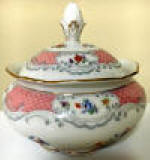 |
 #16B Lion |
1945-49 |
Contributed by
L. M. Puderer of Amite County, Mississippi |
|
"Pink Florals" |
c.1940's | D. Marksberry of Florence, Kentucky, sent pictures of dishes given to her by her mother-in-law who married in 1947 and called them her "wedding dishes." | ||
|
"Pink Florals"
|
 |
c.1940's | C.W. of Moore, Oklahoma, contributed these pictures of one of her estate sale treasures. | |
| "Pink Florals" |
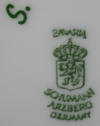 |
c.1970's-80's | Mrs. Kelly Paprocki of Harrisburg, Pannsylvania, rescued these pretty cache pots from a junk store. The green S. may be an artist who added some color to the pots. They are 5" diameter, 3.5" tall, and 2.75" at the base. | |
|
Platinum Elegance with Silver Florals |
c. 1950 | Not found in
any of the 1940's-50's-60's Ebeling and Reuss ads or brochures. Pictures courtesy of B.H. in Missouri I'm assuming it may be in the same age range as the plain version of Platinum Elegance or possibly earlier. |
||
|
Platinum Elegance with Silver Florals |
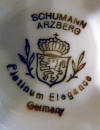 |
c. 1950 | Lorry Schippers of Salem, Oregon, shared pictures of her beautiful Platinum Elegance set. She was opening a bed and breakfast in 1990 and purchased several containers through an auction house in Europe. | |
|
Platinum Elegance |
Notice the assortment of marks in this one set which indicates the pieces were manufactured and purchased at different times. |
c.1946 - 1967 or later See family stories at right and below. |
Found in both 1954, 1961, and 1966 Ebeling and Reuss brochures. Jennifer Babb of Virginia Beach, Virginia, who submitted these pictures, inherited a complete set of this pattern which included an old 1954 E & R brochure. Her parents started buying this pattern in the early 1950's. |
|
|
(1) A. G. in Florida said his parents purchased a complete set in 1946 after his father returned from World War II. (2) L. C. said she chose this as their wedding china in 1967. |
||||
|
Platinum Glow |
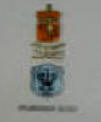 |
Early 1950's - 1957** |
Not in either 1961 or 1966 Ebeling & Reuss brochures. Found in a 1957 E & R ad Apparently a forerunner of the Platinum Elegance. The gentleman who submitted this picture told us his grandfather purchased a complete set of this pattern in the 1950's from a local jewelry store who had to order it by phone from Germany and was told this was the very last set of the Platinum Glow produced by Schumann. **I now have |
|
|
The center flower is the only difference in this pattern and the Platinum Elegance below. |
||||
|
No Picture of Mark on the above plate. However, I've also heard from J.R. of Atlanta, Georgia, who also has a set of this pattern and contributed the mark shown at right. |
||||
|
M.S.R. of Knoxville, Tennessee, told me that back in the early 1950's, her mother bought the Golden Glow and her aunt bought the Platinum Glow. She called them "sister" patterns. |
||||
|
Platinum Radiance |
No Picture |
|
c. 1950's-60's |
Found in 1961 Ebeling & Reuss brochure, but missing from 1966 printing. |
|
Platinum Scroll |
No Picture |
|
c. 1965-1966 plus?? |
First found in the 1965-66 brochure. |
| Rainbow Colors |
 |
c. early 1940's or older | Found in a Massachusetts estate sale still packed in a box from Germany and wrapped in fragments of old German newspapers. | |
|
The only date to be found in the fragments is 1946. How much older than 1946 these are, I don't know. They are exactly like Empress except for the added colors. |
||||
|
"Red Floral"
|
 |
c.1940's |
Shelley Lawson submitted these pictures and told me her grandparents who were married in the 1930's and owned a set of Schumann china marked with the green version of the old shield mark. |
|
|
She said she didn't know when they acquired the set, but assumed it may have been a wedding gift. I think it's closer to the 1940's. |
||||
|
"Red Poppies and Blue Cornflowers" |
 |
c.1940's |
Gale Dulian of Wadsworth, Illinois, submitted these pictures and told us her Dad purchased this set directly from the factory in 1946 for his mother. |
|
| Rheinland |
A combination of Betsy Ross and Rheinland |
Mark registered April 8, 1926 (Source: Danckert, pages 15 and 41) |
c.1920's-1930's | Pictures contributed by G.F.M. |
| Rheinland |
A combination of Betsy Ross and Rheinland |
Mark registered April 8, 1926 (Source: Danckert, pages 15 and 41) |
c.1920's-1930's | Pictures contributed by J.M. |
| Rheinland |
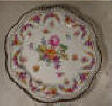 |
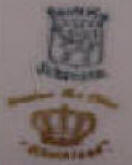 |
1920's-30's | Dresdner Art China and Schumann Bavaria were brand names used by the Schumann China Corporation in the 1930's in America for marketing wares from the Schumann factory (Source: Page 280 of China and Glass in America 1880-1980 by Dallas Museum of Art). |
| Rheinland |
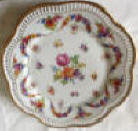 |
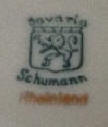 Mark registered March 23, 1926 (Danckert, pages 15 and 41)
Danckert described a stylized crenellated crown,which these straight-edge crowns, aka stylized crowns, appear to be.
Possibly registered earlier and registered again in 1926 in the settling of Carl I's estate. (just my speculation) |
c.1920's Rheinland pattern name added in gold |
Pictures contributed by J.D.. |
|
Rheinland
|
 |
c.1920's | Pictures contributed by P.F. | |
| Rheinland |
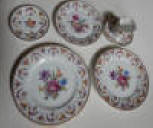  |
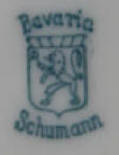 #8A Lion |
c.1920's-30's |
Contributed by M.J. M.J. has a 72-piece set which she inherited in 1956 from her great aunt who traveled a lot. It has been in the family for generations. |
|
Rheinland |
 |
c.1930's | Pictures contributed by CHB of Hayesville, North Carolina. | |
| Rheinland |
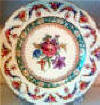 |
 |
c.1930's | Pictures contributed by AB of Lewisburg, Kentucky. |
| Rheinland |
 |
 |
c.1930's |
Pictures contributed by
Ricky Nigg. The plate has only this floating crown mark from Schumann. Have never been able to determine the meaning of the V. |
|
"Ribbon Plates" |
Scroll to the end of these tables, past the Hand Painted section, until you see the Ribbon Plates and a very interesting story about an old tradition in England. |
|||
| Rosa Roschen |
 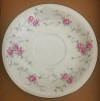 |
 |
1952 | A.J. of Huntington Woods, MI shared pictures of her mother's set that she received as a wedding gift in 1952 in Germany. |
| Rosalia |
 |
 |
1930's | K.F. in Milan, Tennessee, contributed these pictures from his set of dishes inherited from his grandmother. |
|
|
||||
|
Rose Arbor |
No Picture |
|
c. 1950's-60's |
Found in 1961 Ebeling & Reuss brochure, but missing from 1966 printing. |
|
Roses |
 |
c.1920's or earlier | R.B. in Sydney Australia, owns a tea set she inherited from her mother and grandmother. Grandmother married somewhere around 1908 or earlier. She moved to Australia from England at the end of the 1800's and lived in Sydney the remainder her life. It is unknown if she received the set as a wedding gift or acquired it later. | |
| Roses |
 |
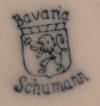 |
c.1920's or earlier | L M Rowan found this old plate at a Salvation Army store. |
|
Roses (Notice the mold design of this plate is exactly like the one below.) |
 |
c.1920's or earlier | This
is one of a pair of plates found by Caroline in
Wiltshire, England, while clearing out a relative's house. Notice the one below, also from England. |
|
|
Roses (Notice the mold design of this plate is exactly like the one above.) |
 |
c.1920's or earlier | Robert Hatton from Kingston Upon Hull, the East Riding of Yorkshire, in the United Kingdom, contributed pictures of his plate found at a "Car Boot Sale" in his area. | |
|
Roses "Flower Basket |
 |
c.1910 | Debbie Bell in Malua Bay, NSW South Coast of Australia, contributed pictures of this beautiful pair of plates which were wedding gift to her great grandmother in 1910. | |
|
|
||||
|
These plates have this same mark which is shown in reference books as beginning in 1918. I think the 1918 date may have been assumed since that was the year Bavaria received its independence from Germany after World War I. Knowing that the world wars destroyed many factory records, 1918 is a logical assumption. However, this information from Debbie sheds new light. Her source is her still living mother who has vivid memories of her grandparents (Debbie's great grandparents) and is certain of the family history of ownership and the 1910 date and related wedding gifts. These plates, as well as many other 1910 wedding gifts have been handed down from one mother to the next and now to Debbie. |
||||
Roses |
 |
 |
c.1920's or older |
Bruce Hoffman in Hollister, Missouri,
contributed these pictures from his
extensive Schumann
collection. Eleanor was possibly an exporter in Bavaria. |
Roses |
 |
c.1920's or older |
Bruce Hoffman in Hollister, Missouri,
contributed these pictures from his
extensive Schumann
collection. Notice the old Erphila mark, an early name used by Ebeling and Reuss and another example from Bruce that E & R (Erphila) was apparently importing Schumann to the U. S. prior to World War II. (See Footnote 86 above) |
|
|
Roses |
 |
c.1920's or older |
|
|
|
Roses |
 |
c. 1924 | Pictures contributed by Sandra from Devon in the United Kingdom. | |
|
Roses |
 |
c. 1924 |
Pictures contributed by a viewer in
Australia. Her mother,
who was born in Holland in 1928,
purchased these before she married in 1950. These were apparently pre-war inventory items that survived the war which ended in 1945. |
|
|
Roses |
 |
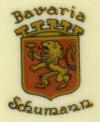 |
c.1930's |
Niall Doyle of North Andover,
Massachusetts, inherited a set of five of these beautiful dinner
plates that she inherited from her mother. She is looking for one more. Please e-mail if you know of one. |
|
Roses |
 |
c.1930's-40's |
Flora Hillman of Upperville, Virginia, bought this set of Schumann at a local auction in Virginia. Most of the pieces are only marked with this floating crown which I believe to be a Schumann decorating mark. |
|
|
Roses |
 |
c.1940's |
S.M. of Burlington, Kentucky, sent these pictures. |
|
|
Simone in Germany inherited a set of this pattern from her grandmother who was married in the 1950's and received the set at that time as a family heirloom being passed down. This is further indication of the possible pre-world War II dating of this pattern and mark. The mark is green. |
||||
|
Roses |
c.1940's-50's | S.D. in Rochester, New York, shared pictures of her plate with a narrow reticulated rim and just one large Rose. | ||
| Roses |
 |
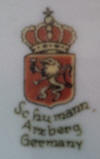 |
c.1950 | Peter Roeseler submitted pictures of this pretty reticulated bread basket. |
|
Roses |
 |
 |
c.1940's-50's | T.G. of Kansas City, Kansas sent pictures of these Schumann pieces she purchased at an estate sale in her area. |
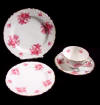 |
||||
|
Roses Gold Rose Maroon Leaves |
 Added mark CICO Bavaria, which is for CICO China. |
c.1950 or earlier |
Not in either 1961 or 1966 Ebeling & Reuss brochures. CICO is perhaps a decorator or distributor. I've found another CICO mark with a green Schumann U. S. Zone mark, leading me to believe that this one was either pre-1945, or perhaps made for the German market after the war (post-1945). |
|
| Roses |
 |
 |
1950's | Emine Cadirci of Instanbul Turkey contributed pictures of her mother's wedding china which she received in 1959. Her mother's name is Sabahat Satiroglu. Thanks to both of them for this nice contribution. |
|
Roses |
 |
 I don't know what the F means. Please e-mail if you know. |
1950's-60's | Lee Parmeter in Biloxi, Mississippi, contributed pictures of this vase he recently inherited from his sister. She and her husband were stationed in Germany in the late 1950's and early 1960's. Assuming they purchased the vase brand new at that time, this is excellent documentation of the dating of this mark. |
|
Lee is a published author and I am pleased to add this link to his books in appreciation for his contribution to my Schumann tables: |
||||
|
Roses Similar to Heirloom, Melrose, and Meissen Rose, but not any of those. Perhaps a later version of one of those. |
 |
c.1960's-70's | TAS of Houma, Louisiana, sent these pictures of their coffee set they managed to save from Hurricane Katrina. They purchased the set back in 1980 at an auction. |
|
|
The pot has 1975/3 impressed on the bottom. Perhaps this is the manufacturing date, though I don't know that. It does agree with the style of the set and the dating of the mark. |
||||
| Roses |
 |
 |
c.1960's-70's | A.H. in Northamptonshire England shared pictures of her beautiful coffee set in this unknown "Roses" pattern. |
|
Roses |
 |
 |
c.1960's-70's | J.G. in West Branch, Michigan, shared an example of her set of four dessert plates. Name of pattern is unknown. |
|
Royal This set has mixed marks as shown at right.
|
1940's |
Georgianne (Gigi) and Ernest (Sparky) Guthrie, Jr., of China Grove, North Carolina, shared these pictures from their 12-place set of Schumann Royal. The set was originally owned by Sparky's father, Air Force Captain Ernest Guthrie Sr., who was stationed in Bavaria Germany during the reconstruction era after World War II and met Carl Schumann II. |
||
 |
 |
 |
||
|
The majority of the set has the green mark shown at far right. It is those pieces that I believe were the ones newly produced after the factory reopened. The few pieces (soup bowls and fruit bowls) with the red crown marks may have been pieces that survived the war and were just mixed in with the newly produced set to make it more complete. It's interesting to note that these marks do not include the U. S. Zone mark, possibly because Carl II produced this set as a personal gift, rather than for the purpose of marketing and exporting to the U. S. |
||||
|
Though the factory continued to operate during the war years, it closed right at the end due to war damage that occurred on April 19, 1945. Captain Guthrie, who was an engineer, helped Carl II rebuild/repair the factory. As soon as the factory reopened, Carl II immediately produced two sets of this china -- one for himself and one for Captain Guthrie. Captain Guthrie's wife, Anne (back home in America), sent them enough gold paint and cobalt blue to decorate the two sets. The two sets were said to be the first to be produced by Schumann after the war ended. |
||||
|
In the 1970's, neighbors of Anne and Ernie, Sr., took a trip back to their homeland of Holland. While in Europe, they visited the Schumann factory and met Carl III who was currently in charge at that time. They showed him the cup they had with them from this set and told him the story. He said he remembered the pattern and said it was "priceless" but would put no value on it. Gigi and Sparky are interested in selling the set. Anyone interested should contact them directly at gigigeewhiz@vnet.net. Any transaction would not include us in any way. I am merely mentioning this as a matter of information and as a favor to Gigi and Sparky. "Thanks, Gigi and Sparky, for sharing this great Schumann story and your related family history." Yet another Royal family story below: |
||||
|
Royal |
 |
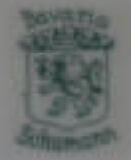 |
1940's |
Mr. and Mrs. Donald Caba of
Minnesota shared the story of their full set of
Schumann Royal which they received as a
gift in 1971. The Caba's are in need of an additional seven cups for their set. Click here for more information posted 11/12/13. |
|
The set was given to them in 1971 by the widow of the lieutenant who shipped the set to her from Germany during the time he was stationed there in late 1945, 1946, and early 1947. |
||||
|
"Royal Blue" "Royal Red" |

Very similar molds as the Royal pattern, but much older. |
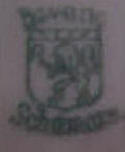 |
c.1930's | Carolyn McCauley in St. Louis, Missouri, sent pictures of miscellaneous Schumann brought home to America from Germany in 1946 by her father who served in World War II. He found random pieces here and there at "rummage sales" and purchased them for his mother. |
| The style and shape, as well as the older marks, further confirm they had been around for awhile, especially pre-war. Carolyn and her husband received them a few years as a wedding gift -- a great family treasure passed on to a new generation!! | ||||
|
"Royal White" or Bouquet similar Same mold as Royal, but decorated like Bouquet |
 |
1945-49 | Anonymous from Georgia sent pictures of their recently inherited U. S. Zone set. It appears to be the same mold as the Royal pattern, but is decorated like the Bouquet pattern. In the absence of anything else, I'm calling it a combination of the two. | |
|
"Royal White" or Bouquet similar Same mold as Royal, but decorated like Bouquet |
|
|
c. 1945-1949 | Pictures contributed by another Anonymous viewer who inherited a complete set from great grandmother. |
|
San Louis Rey |
A mixed set. The saucers and the two-handled bowl (bouillon cup) are Bridal Chain. The sugar and creamer are San Louis Rey. The cups appear to also be San Louis Rey. |
 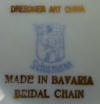 |
c1928-1933 Dresdner Art China was an importer's mark used by the Schumann China Corporation of New York which was established in 1928 for the sole purpose of selling to the American market. The corporation ceased in 1933. |
Dagmar Herwig of Munich, Germany, contributed pictures of this set that came down to her through her family. It was originally owned by a family member who died in 1937 at the age of 67, so logically she would have had them for some time prior to her passing in 1937. |
| San Louis Rey |
Appears to be a version of San Louis Rey |
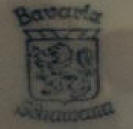 |
c.1930's | Maggie Stocker de Belcher contributed pictures of her beautiful china which appears to be an earlier version of what came to be called the San Luis Rey pattern. |
|
San Louis Rey |
Appears to be a version of San Louis Rey |
c.1940's |
Stephen and Susan B. in Pittsford, New York, submitted these pictures which appear to be the San Louis Rey pattern, but with the mark shown here and no pattern name included. They seem to be a match for others I've found that are identified as San Louis Rey. |
|
|
In 1944, Stephen's father shipped this complete set to his wife in Logan, Ohio, while he was serving in Germany in World War II. This confirms my previous dating of this mark to pre-1945. I've previously found this pattern with the Dresdner Art marks (which are dated 1930's) with the pattern name included in the mark. |
||||
|
St. Ives, The Harbour Souvenir Dish |
 |
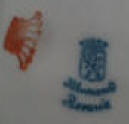 |
c.1930's | Richard in Yorkshire UK shared pictures of his St. Ives souvenir dish with this extra red crown mark. It was most likely a decorating mark for an outside-the-factory decorator. |
|
Strawflower |
c.1924 |
Pete shared pictures of his Strawflower cake set that he and his wife received 25 years ago as a wedding gift from his sister, who included a note with it referencing its old age. |
||
| Strawflower |
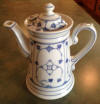 |
 |
c.1926-40's | Evelyn Haak of Eagle, Idaho, inherited this coffee pot from her mother (born 1910), who in turn inherited it from her mother. |
|
Sunset Rose |
c.1954-59 |
Not in either 1961 or 1966 Ebeling & Reuss brochures. Becky Fielder in Nashville, Tennessee, contributed these pictures of her Sunset Rose vase. So similar to the Victorian Rose that I am wondering if this was the forerunner of that later pattern. |
||
| Sweet Briar Rose |
 |
c.1954-59 | Not in either 1961 or 1966 Ebeling & Reuss
brochures. JPS in Concord, North Carolina, shared pictures of her husband's grandmother's set of Sweet Briar Rose. |
|
| Thistle |
 |
 |
c.1950 | Peggy in Connecticut shared pictures of her two-tiered server decorated with the Milk Thistle plant. In German, the word thistle is "Distel". |
| "Tiny Flowers" See Coquette
|
||||
|
Tivoli Gardens in Copenhagen Denmark Souvenir Cup |
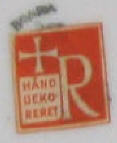 Decorating Label stamped over a Schumann whiteware mark |
c.1960's-70's |
JoLynn
Smith of Kansas City, Kansas, shared pictures of her cups and
saucers which were hand decorated on Schumann whiteware outside the factory. The decorator is unidentified. |
|
|
Vases
Look by pattern name; for example Also See "Craquele" |
||||
|
Vase unknown pattern |
|
c.1920's or older | Kathy Vesevick of Lombard, Illinois, inherited this vase from her mother and contributed these pictures. | |
|
Vase Art Deco |
 |
This particular Lion Mark was used beginning in 1924 and probably officially registered in 1923 when Carl Schumann I incorporated the factory. |
1924 | Miroslava Hanusova in Prague shared pictures of this Art Deco vase. He has a showroom called Art Deco Shop, as well as a website: |
|
Vase "Roses" |
Unreadable signature dated 1975 |
Green mark from the 1950's-70's |
1975 | Anonymous viewer contributed pictures of this beautiful vase that was handpainted, signed, and dated. |
| Victorian Rose similar |
 |
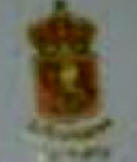 |
c.1940's-50's | M.L. in Florida shared pictures of her beautiful unknown pattern. |
|
Victorian Rose similar |
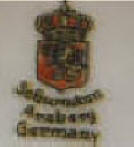 |
c.1950 | Patti Shannon of Costa Mesa, California, sent pictures of these vases that match the pattern shown below, but with a different mark. | |
|
Victorian Rose similar |
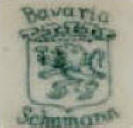 |
c.1940's-50 | Pictures contributed by Sue Caffrey of Pittsburgh, Pennsylvania, who said the set originally belonged to a European family. It is similar to the 1960's Victorian Rose, but not the same. |
|
| Victorian Rose similar |
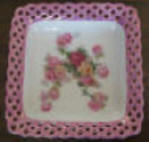 |
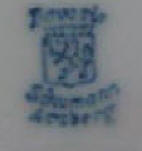 |
c. 1920's or earlier | Pictures contributed by Sandy Starkey of Hazlet Saskatchewan, Canada. This bowl originally belonged to Sandy's grandmother who immigrated to Canada in the early 1900's from England. Sandy's dad was born in Canada in 1914. It is unknown where or when grandmother actually acquired this dish. |
|
Victorian Rose early |
 |
c. 1930's | Pictures contributed by J. Jensen of Independence, Iowa, who said this piece originally belonged to her grandmother in Muskegon Heights, Michigan. She loved to shop for remnants in big department stores, and J. believes this is how she found this item. | |
|
Though the Schumann mark is missing, I am confident this is from the Schumann factory and is an early version of the Victorian Rose pattern. The stamped Germany as shown above is found with Schuman marks from c.1920's-30's. It was not uncommon for pieces to slip through without being fully marked. |
||||
|
Victorian Rose |
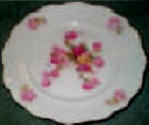 |
c. 1965-1966 plus |
First found in the 1965-66 E&R brochure. Also found in a 1965 E&R ad. Pictures contributed by Ronnie Brown of Houston, Texas. |
|
|
Vienna Rose |
No picture available of this older version
|
No picture available of this older mark | 1930's | I've seen pictures of this older version, with an older 1930's mark which includes the pattern name, and with an older rim style. |
|
Vienna Rose |
 |
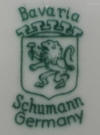 |
1950's | Pictures contributed by Jim Ebersold of Slingerland, New York. |
|
Vienna Rose similar |
 |
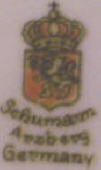 |
c.1950 | Pictures contributed by Carl Hall, USA. |
|
Violets |
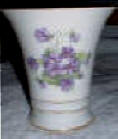 |
 |
c.1950 | Appears to be a forerunner of what was later called Violette in the mid-1960's. S.L. of Baltimore, Maryland, contributed these pictures. |
|
Violette |
 |
c. 1950's-1966 plus |
Found in the 1965-66 E&R brochure. Also found in a 1965 E&R ad. It does, however, go back to the 1950's based on the mark at far left which was contributed by D.H. V.O. in Oregon contributed pictures of her Violette which she purchased in an antique shop in 1994. Hers has the later mark at the immediate left. |
|
| Westwood |
 |
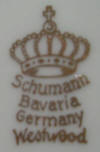 |
c.1940's-50's |
Pictures contributed by Brian
Robinson of Auckland, New Zealand.
He bought these pieces in the 1970's in an antique shop. I am assuming for now that Westwood is a pattern name. |
| "Wheat" |
 |
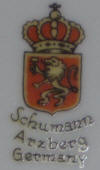 |
c.1950 | LeaAnn of Long Island, New York, inherited this set from her grandmother. |
|
White Colonial |
 |
 |
c. early 1950's | Shari Holtzclaw of Dahlonega, Georgia, received this set from her mother-in-law who purchased it many years ago at a sale in Gainesville, Georgia. They were oriignally owend by a very wealthy family. |
|
White Elegance |
 |
c. 1950's-1966 plus |
Found in both 1961 and 1966 Ebeling and Reuss brochures. Lydia Schumann of Houston, Texas, recently found this White Elegance tea set in an antique shop in Spring, Texas. In case you are wondering, she is not related to the Schumann porcelain factory family. |
|
|
White Elegance |
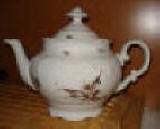 |
1969 |
Allan Deptula of Evanston, Illinois, shared pictures of his White Elegance teapot that appears to have been enhanced in 1969 with some hand painted decoration by Gertrude Trask who was most likely an American china painter. I can understand why Gertrude or anyone else would be tempted to add some color to the otherwise undecorated White Elegance pattern. Mr. Depulta has confirmed that the hand painting is over the glaze and not under. |
|
|
|
||||
|
White Jubilee |
No Picture |
No Picture |
c. early 1960's |
Found in 1961 Ebeling & Reuss brochure, but missing from 1966 printing. |
|
White |
 |
 |
1959 and earlier | G.L. of Kansas City, Missouri, provided these pictures of a set of dishes purchased brand new by her father when he was in the U. S. Army in the late 1950's and stationed in Amberg, Bavaria, Germany. |
|
He made the purchase in 1959 from the European Exchange (Military PX). (Footnote 22B above). Notice that the mark does not include the blue E & R importer's mark since they were purchased directly in Germany by the consumer and shipped to the USA, thereby bypassing the importing company. It appears that this particular red mark, with only the words Schumann Arzberg Germany, was used into the 1950's. The other option is that they could have been old inventory (manufactured years earlier) and not sold until 1959. |
||||
|
White |
c.1960's-70's |
Andrea Perego in Venice, Italy, shared pictures of his cups and saucers which are probably from the 1970's, based on the style as well as the marks. |
||
|
White |
 |
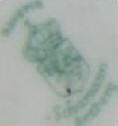 |
c.1970's | J. Walls of Kelowna, British Columbia, Canada, found this ewer at a thrift store in her area. |
|
White |
 |
 |
1980's-90's | Iddan in Israel contributed these pictures of cups and plates he received as a gift from a couple who previously resided where he now lives. |
|
White |
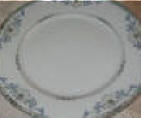 |
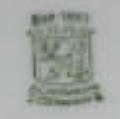 |
1980's-90's | Someone who wishes to remain anonymous sent these pictures to us. She has a set of this pattern which she purchased new in 1994 in a housewares shop in her area. |
| This information has helped confirm that this mark was one of the last marks used by Schumann before it closed in 1994. | ||||
|
Appears to be an early version of the Wild Rose and a forerunner of the later Briar Rose of the 1960's |
Straight Rim Edge, White Background, Coupe Shape |
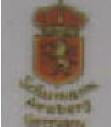 |
c.1930's?? | This set of dishes belonged to a lady who fled Nazi Germany in the 1930's and said she brought these with her. Dmitry in Brooklyn, New York, contributed the pictures and information. |
|
Wild Rose
|
Coupe Shape, Scalloped Rim |
 Older importer's mark that has been applied and glazed over. |
c. late 1940's to early 1950's |
Not in either 1961 or 1966 Ebeling & Reuss
brochures. Pictures contributed by Betty Siegfort of Central Florida. Betty found this beautiful plate in perfect condition at a local Goodwill store on a Sunday afternoon. |
|
This plate has the unusual E&R mark similar to those used by E&R prior to World War II, but not the same. Until I find documentation otherwise, I assume this mark is c. late 1940's-early 1950's, and possibly the interim mark used after the war and prior to putting the blue mark into use. |
||||
|
Wild Rose |
Coupe Shape, Scalloped Rim |
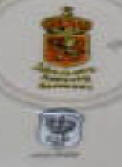 |
c.1950's | Not in either 1961 or 1966 Ebeling & Reuss
brochures. Pictures contributed by Cindy Hill of Oberlin, Ohio. Exactly like the plate above with the older E & R mark. |
| Wild Rose |
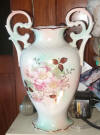 |
 |
c.1960's-70's |
Anthony Keeton contributed pictures of his Wild Rose vase. |
| Wild Rose |
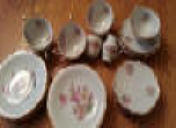 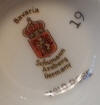 Found on plates and saucers 1950's |
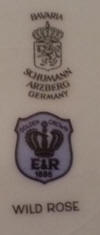 Found on teacups 1954 ff. |
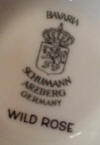 Found on teacups 1960's-70's |
Mimi Dickens found these
assorted pieces at an estate sale. |
| Wild Rose Blush |
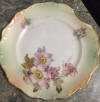 |
 |
c.1940's-50 | Pictures from Jorge Herrada |
|
Wild Rose Blush |
 The CICO mark is probably that of a retailer and/or or exporter. |
 |
c.1950's | Pictures contributed by Marie. |
|
Wild Rose Blush |
Reticulated with applied gold decoration |
 |
c.1950's or earlier | Not in either 1961 or 1966
Ebeling & Reuss brochures. |
|
Wild Rose Blush |
Applied gold decoration, Embossed Rim Top, Scalloped Rim Edge, Coupe Shape |
 |
c.1950's or earlier | Not in either 1961 or 1966 Ebeling & Reuss brochures.
|
|
Wild Rose Blush |
Smooth Coupe Shape, Gold Rim Edge |
1950's |
Not in either 1961 or 1966 Ebeling & Reuss brochures. D. Kadar of Long Island, New York, contributed this red mark found on her Wild Rose Blush compote she recently received as a gift. It is yet another version of the red crown mark. |
|
| Information from another contributor with this Wild Rose version told us her dishes had been given to her in 1983 by a client who was then in her 80's and said they were from pre-war Germany and she had inherited them from her mother who was from Germany. Her dishes have a red crown mark with only the words Schumann Arzberg Germany. | ||||
| Wild Rose Blush |
 |
  |
c.1950's or earlier |
Contributed by an anonymous viewer.
A beautiful set that obviously has mixed marks. |
|
Wild Rose Blush |
 Smooth Coupe Shape, Scalloped Rim Edge (no gold) |
 A later mark, 1950's-70's |
1970's | Joanna Branam of Mayetta, Kansas, received a Wild Rose Blush compote (just like the one pictured above ) as a wedding gift in 1976 from a couple in New York. Joanna's compote has the 1950's-70's mark pictured at left. |
|
Wild Rose Blush |
 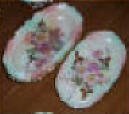 The set is a combination of smooth flat rim and coupe shape as shown above. |
  The set has a combination of marks. The red mark is the older mark. |
1950's-60's | Not in either 1961 or 1966 Ebeling & Reuss
brochures A viewer in New Jersey purchased this Wild Rose Blush set brand new in 1962 from a shop in Little Ferry, New Jersey. |
|
Wild Rose Blush |
 |
 |
1950's-60's | Janet H. shared a picture of her plate that she won as a door prize in 1962 at the age of 9 years old. She has kept it in mint condition all these years. It is an excellent example of the flat rim version of this pattern. |
|
Wild Rose Blush |
 Smooth Coupe shape, Applied Gold |
 |
c.1950's | This is yet another version of the Wild Rose Blush sent by Wendy. |
|
Wild Rose Blush |
 |
 |
1963 | Louise Stewart of North Vancouver, British Columbia, Canada, received this teapot in 1963 as a wedding gift from her aunt. It was probably purchased in Edmonton Alberta. |
| Wild Rose Blush |
 |
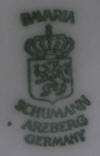 |
1950's-70's | Gwen Eberhart of Rising Star, Texas, sent pictures of her vases that were originally her grandmother's. |
|
Wild Rose or Briar Rose?? |
 Blush, Straight Rim Edge, Embossed Rim Top |
 |
1950's | Linda Frey of Manchester, New Hampshire, contributed these pictures of her dish that originally belonged to her grandmother. She recalls seeing it as a child in the early 1950's on display in her grandmother's dining room. |
|
Wild Strawberry |
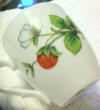 Wild Strawberry actual demitasse cup |
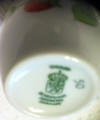 |
c.1960's-70's |
PAB in Atlanta, Georgia,
shared pictures of her little demitasse cup that she received
as a gift recently from her artist friend, Aida Paiva. Aida Paiva is a very talented American Artist living in Deland, Florida. She has created original note cards as well as other paintings of the Wild Strawberry pattern by Schumann. Notice in her note card painting at far left that she has added a butterfly to the saucer. It is difficult to tell her artistic work from the original demitasse cup which is shown above the note card. |
 Artistic rendering on note card of Wild Strawberry demitasse cup |
 |
|||
|
"Zinnias" |
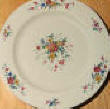 |
 |
c.1930's | Bruce Hoffman in Hollister, Missouri, contributed these pictures from his extensive Schumann collection. |
|
"Zinnias" |
 |
 |
c.1960's-70's | Mary Bohl of Eau Claire, Wisconsin, shared pictures of this beautiful plate she inherited from her mother. Please e-mail if you recognize the pattern. |
|
Souvenir and Commemorative |
||||
| Fruit |
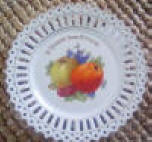 |
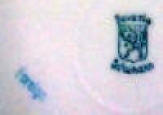 #8A Lion Foreign means it was made for export |
c.1920's-30's |
Contributed by
Norman Allen of
Birmingham, UK Souvenir plate for Torquay, a seaside resort in the UK. The plate says "A Present From Torquay" |
|
Scenic Plates Cairo Egypt City Panorama |
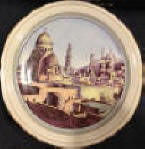 |
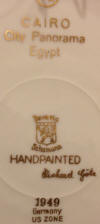 Richard Gotz |
1949 U.S. Zone |
L.S. in the USA inherited this beautiful
set of souvenir plates.
They were hand painted and signed by artists who were apparently Schumann factory artists. The Lion mark and all writing on the back are in the same matching gold paint, leaving no doubt these plates were produced inside the Schumann factory. Best of all, they are conveniently dated. |
|
Heidelberg
Romantic Castle by the Neckar River |
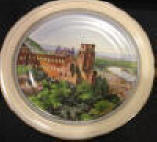 |
H. Finkenscher |
1948 U.S. Zone |
|
|
Notre Dame
Paris France |
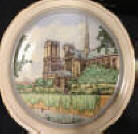 |
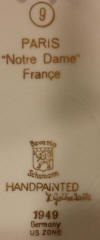 H. Gottschalk |
1949 U.S. Zone |
|
| "Bavarian Village" |
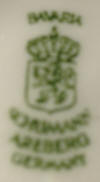 |
1970's | Sheli Gundzik in Denver, Colorado, received this set of china from her mother when they were stationed in Frankfort, Germany, in the early 1970's. She is looking for some replacement pieces and has exhausted all the usual sources. Please e-mail if you have any new leads. | |
| "Bavarian Village" |
 |
 |
c.1970's | Kimberly sent pictures of her plate that appears to be a souvenir plate. They purchased it in the 1970's when they lived in Wiesbaden, Germany. |
|
Specialty Lines |
||||
|
John Iliffe Christmas Holly |
 Manufactured by Schumann exclusively for Firkloveren, a Swedish distributor. John Iliffe was the artist/designer. |
 1981 Schumann 100-year Anniversary Mark |
1980's | I.S. in Denmark has graciously contributed pictures of her Schumann collection which she purchased in the 1980's from the Swedish firm, Firkloveren. Schumann produced some exclusive product lines for Firkloveren. |
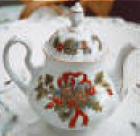 |
 |
 |
 |
 |
|
Pierre-Joseph Redoute Rosa Indica Cruenta A collection of 12 different Roses originally designed by Pierre-Joseph Redoute, an 18th century French painter.
|
 |
 1981 Schumann 100-year Anniversary Mark. The green four-leaf clover is for Firkloveren. |
1980's | I.S. in Denmark has graciously contributed pictures of her Schumann collection which she purchased in the 1980's from the Swedish firm, Firkloveren. Schumann produced some exclusive product lines for Firkloveren. |
|
Manufactured by Schumann exclusively for Firkloveren, a Swedish distributor. |
||||
|
Pierre-Joseph Redoute, Rosa Indica Cruenta A collection of 12 different Roses originally designed by Pierre-Joseph Redoute, an 18th century French painter. |
 |
 |
1980's | I.S. in Denmark has graciously contributed pictures of her Schumann collection which she purchased in the 1980's from the Swedish firm, Firkloveren. Schumann produced some exclusive product lines for Firkloveren. |
|
Manufactured by Schumann exclusively for Firkloveren, a Swedish distributor. |
||||
| Here are all 12 of the exquisite "Roses" originally designed by Pierre-Joseph Redoute, an 18th century French painter. This set of reticulated plates were made by Schumann in the 1980's exclusively for the Swedish distributor, Firkloveren. |
 |
 |
||
 |
 |
 |
 |
 |
 |
 |
 |
 |
|
|
Hand Painted Wares on Schumann Blanks |
||||
|
I periodically receive beautiful examples of hand painted work on Schumann whiteware blanks and decided they deserve their own section which you will see below. I am confident that most, if not all, are the work of American China Painters. |
||||
| Marks and estimated manufacturing dates of blank whiteware | Hand Painted Whiteware | Signatures | Estimated dates of china painting | Comments |
 |
 |
 |
1981 |
My personal collection An undecorated reticulated whiteware plate commemorating Schumann's 100 Year Anniversary. The factory was founded in 1881. The translation of Durchbruch Porzellan on the box is "Breakthrough Porcelain." |
| Schumann 100 Year Anniversary mark | Undecorated Schumann whiteware with the reticulated rim. Schumann was known for having been the first to construct the machines for producing this "pierced" design. |
 The Seit 1881 added at the top distinguishes it from the older versions of this mark. |
The mark on the box shown at the left is also a 1980's mark, apparently put into use in 1981 at their 100 Year Anniversary. | |
 |
 |
 Signed Josh |
Undated | Paula Clark in Wisconsin contributed pictures of her hand painted sugar and creamer that were originally owned by her grandparents in Fremont, Ohio. |
| Mark dates as early as 1900. Whiteware can go undecorated for years before someone finally uses it. With these pieces being undated, it is unknown when Josh actually painted these beautiful African Violets. | ||||
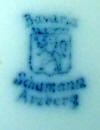 |
 |
  Signed R. E. Benedict |
Undated c.pre-1920's |
Contributed by Angelina Adams of Richmond, Virginia |
 |
 |
Signed Hand Painted Nagel and undated | c.1920's | L.B. in USA submitted these pictures of her hand painted plate. |
 |
 |
Signed M. Falsey Hoppel and dated 1925 | 1925 | Lori Page in Illinois found these beautiful plates at an estate sale. |
 |
 |
|
c.1920's | Cindy in Pennsylvania, found this beautiful dish at a resale shop. It is hand painted and signed on the back. The signature, Wilhelm, is under the glaze. |
 |
 |
 |
c.1930's | J. S. in Sturgeon Bay, Wisconsin, found this beautiful dish at a garage sale. It is hand painted on the rim and appears to be signed on the back. The mark is one from around 1930. Decoration date, however, is not known and could have much later. |
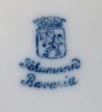 |
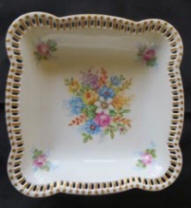 |
SSZ |
c.1930's | An Anonymous Viewer contributed pictures of this pretty hand painted bowl that came from Ohio where her grandparents lived. |
 |
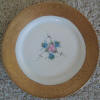 |
 |
c.1930's | R. G. in Denver, Colorado, contributed pictures of this Schumann blank with an encrusted gold rim that was decorated by the Pickard Studio in Chicago with its popular Rose and Daisy pattern. The center flowers appear to be hand painted, though not signed. R.G. has a set of 12 plates, cups, and saucers. |
 |
 |
 |
1931 | C. M. sent pictures of this beautiful bowl that has been in her family for years. It appears to have been hand painted by E. D. Guhde in 1931. |
 |
 |
Beall, 1931, was most likely an American china painter. |
1931 | My personal collection |
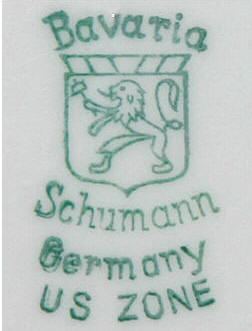 U. S. Zone 1945-49 |
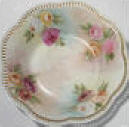 |
 Marie Haur, 1/31/51, was most likely an American china painter. |
January 31, 1951 | Bruce Hoffman in Hollister, Missouri, contributed these pictures of his beautiful hand painted bowl with this U. S. Zone mark, 1945-49, which is the green version of the old blue mark. (Footnote 85 above) |
 |
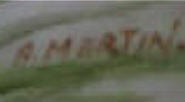 A. Martin was most likely an American china painter. Undated |
c.1950 | Joyce Sagurski in Omaha, Nebraska, submitted pictures of a pair of signed and hand painted plates she found at an estate sale in her area. (Footnote 18B above) | |
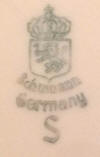 |
 |
Unsigned | c.1950 | Jeanne Corbett submitted pictures of this candy dish which appears to be hand painted, though unsigned. |
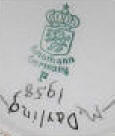 |
 M. Darling 1958 was most likely an American china painter. (unclear as to Dar... or Day...) |
1958 | Michelle Keresi in Michigan submitted pictures of this beautiful hand painted, signed, and dated vase she was recently offering for sale on ebay. Her ebay name is spookie3026 if you would like to check out her auctions. | |
 |
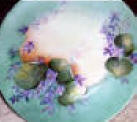 |
 Ann was most likely an American china painter. Undated |
c.1950?? | Ivan Rasskazov in Torrance, California, submitted pictures of this hand painted and signed plate he found at a sale in his area. (Footnote 18 above) |
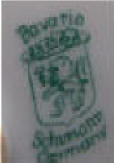 |
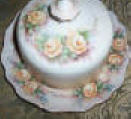 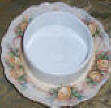 |
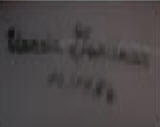 Uarda Gardner, 12/1956 |
December 1956 | Deanne Thomas in Porterville, California, found this beautiful hand painted butter dish in an antique shop in her area. |
 |
 |
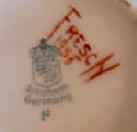  |
Fresch 1958 J. Wayne & B.E. Fresch 1958 |
FEJ in Minneapolis, Minnesota,
shared pictures of beautiful work done by her
Aunt Burnzetta Fresch (1913-1995) The other signature is that of her instructor, June Wayne. Burnzetta did china painting as well as oil painting beginning around 1950. She was a native of Beaver Falls in Western Pennsylvania and was an elementary school teacher by profession. |
 |
 |
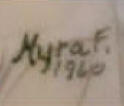 Myra F., 1960 |
1960 | My personal collection Beautiful hand painted pink roses. |
 |
||||
 |
 |
   Original - Designed, Hand Painted - 1969, By Irene H. Marshall of Whittier California |
1969 | C.D. in California submitted pictures of these beautiful pieces that were hand painted by her grandmother, Irene Marshall, in 1969. |
 |
||||
| Irene signed each of her pieces the exact same way. |
 |
|||
|
Irene H. Marshall of Whittier California |
Undated | Lynn Warren of Taylorsville, Georgia, shared pictures of more examples of Irene's beautiful work. | ||
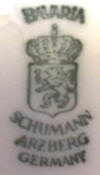 |
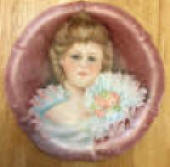 |
R. Sollot |
Undated c.1950's-70's |
Sharon Yaros contributed pictures of this beautiful portrait plate that she found in a thrift store. |
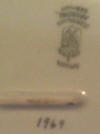 |
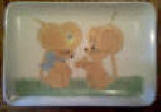 |
E. Goodloe |
1969 | J.S. in Misssissippi submitted pictures of her "just too cute" Courting Mice plate hand painted by E. Goodloe in 1969. |
 |
Gertrude E. Trask |
June, 1969 |
Allan Deptula of Evanston, Illinois, shared pictures of his White Elegance teapot that appears to have been enhanced in 1969 with some hand painted decoration by Gertrude E. Trask who was most likely an American china painter. I can understand why Gertrude or anyone else would be tempted to add some color to the otherwise undecorated White Elegance pattern. Mr. Depulta has confirmed that the hand painting is over the glaze and not under. |
|
| Ribbon and Lace Plates | ||||
|
Linda Brockway in the U.K. shared pictures
of her collection of ribbon and lace plates. In her words: "In
this country, ribbon and lace plates have a connection with our inland
waterways. They were collected by old boatwomen to decorate their boat
cabins. Boatwomen hung ribbon plates in their back cabins, often
overlapped like fish scales, and usually around the stove. The plates have
simple slotted borders and often say "A present from..." with floral or
fruit decoration. Some are with incredibly obscure locations.
Years ago, I acquired one (not Schumann) with a small village church on it,
which we eventually identified and visited. It was in a small hamlet
of few houses in the south of England. Well known tourist
places are well covered, with so many variations from different
manufacturers. Schumann plates do have a few place pictures, but not
that common, usually floral or fruit. Lockside
Antiques has a website
selling lace plates with lots of information about the tradition. I
continue that tradition, mostly on dry land -- not enough space on our boat
to display the 100 plus that I have!"
Below is a small portion of Linda's collection. These are Schumann. Most of her collection are from other factories. |
||||
 |
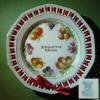 |
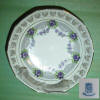 |
||
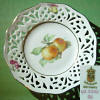 |
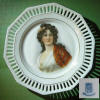 |
 |
||
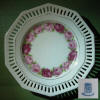 |
||||











